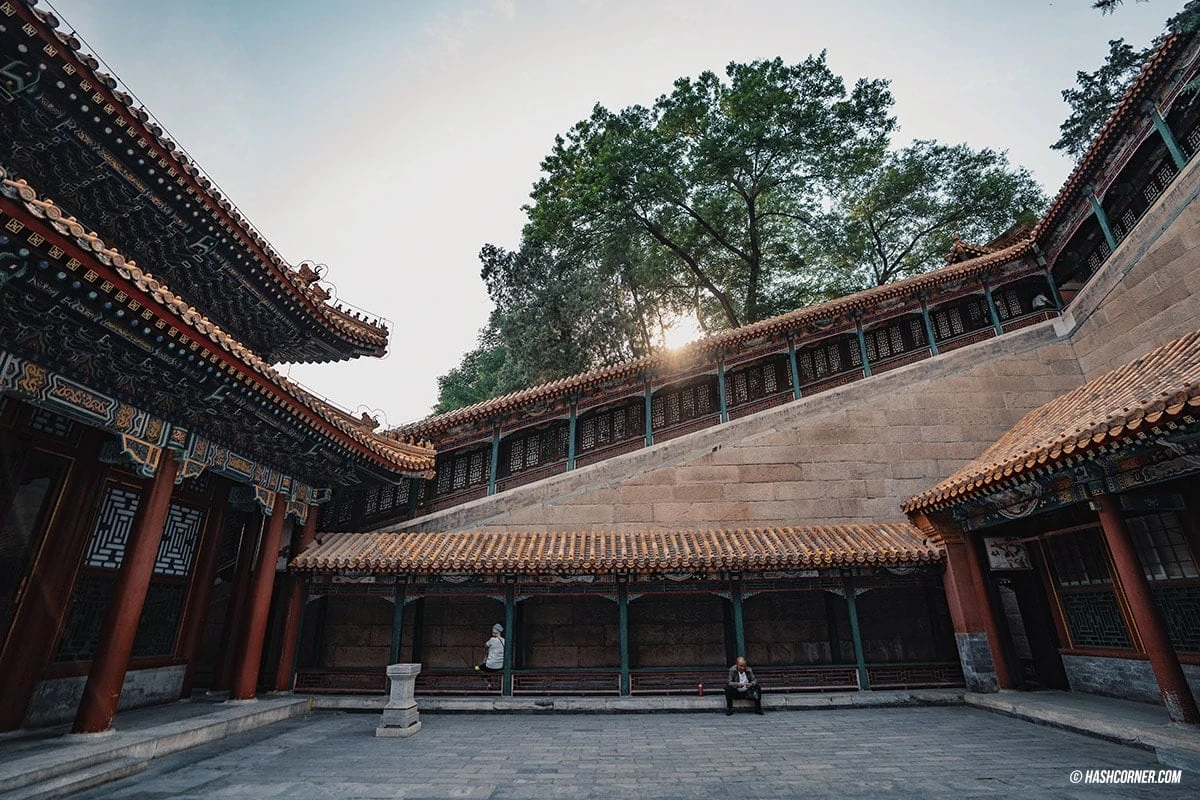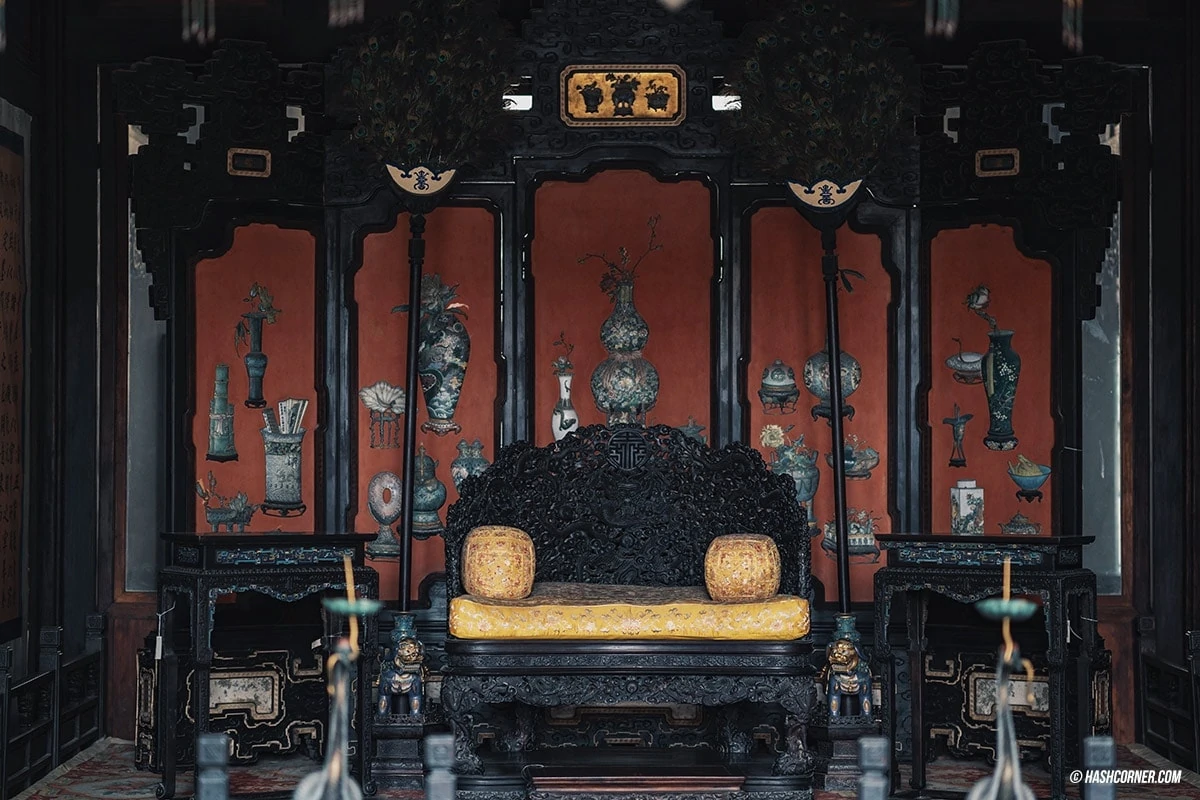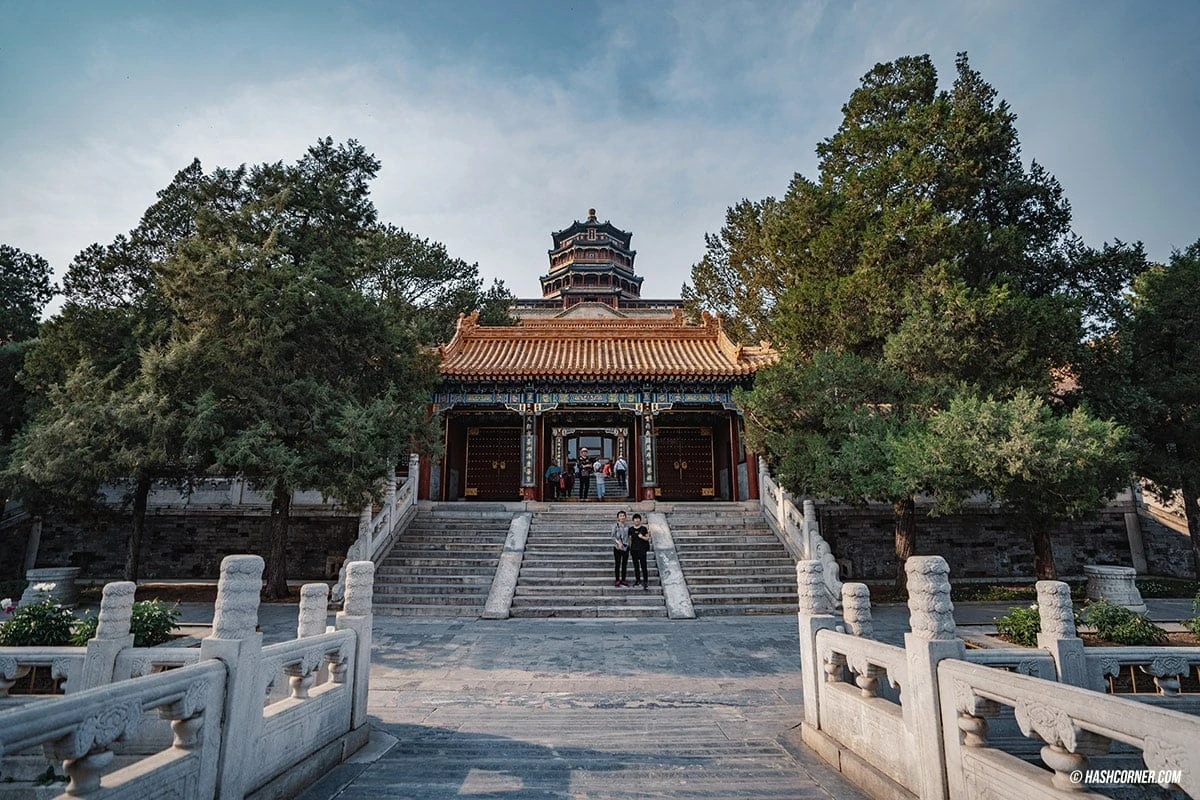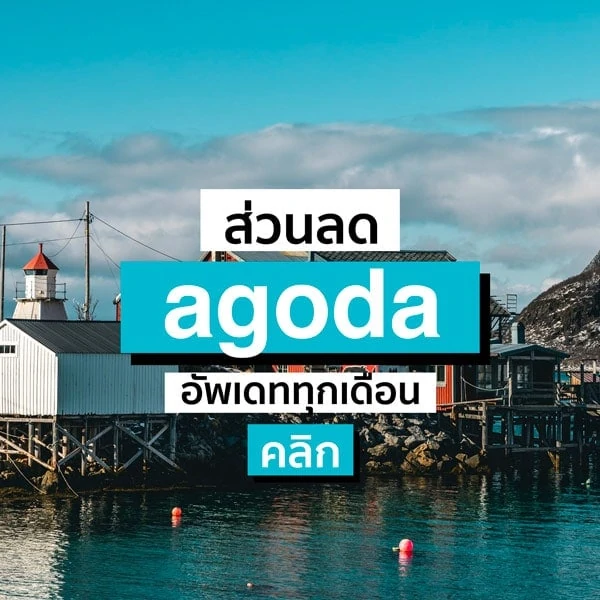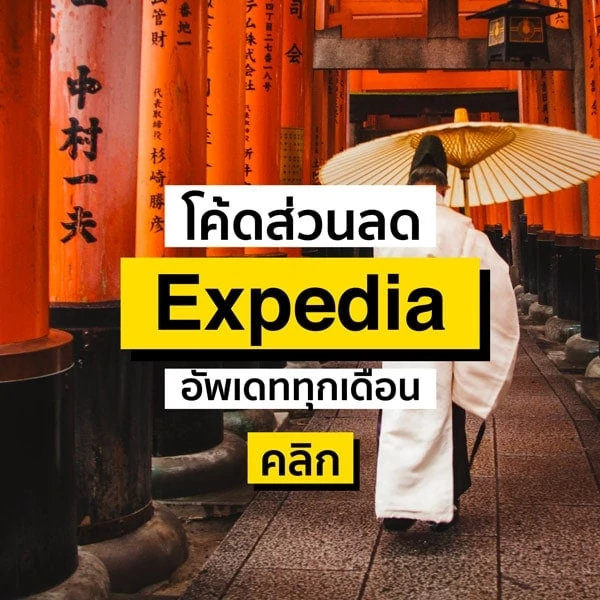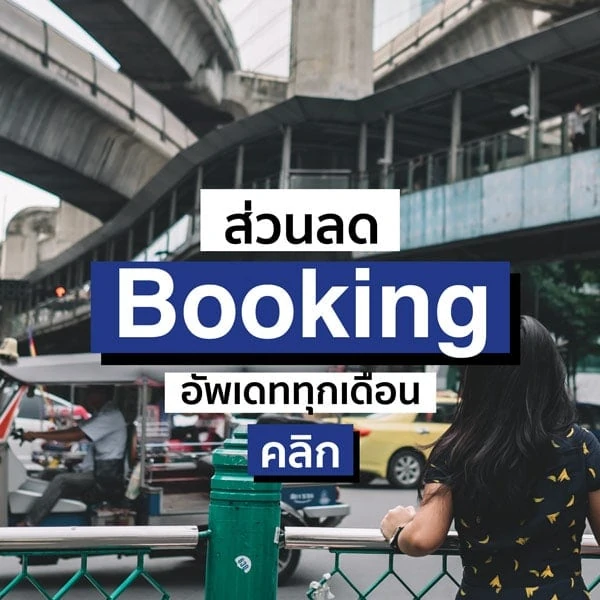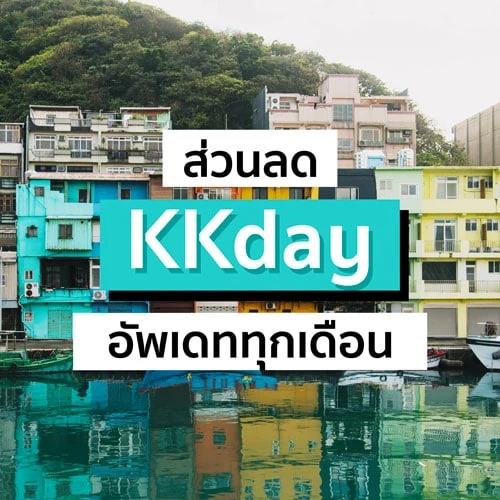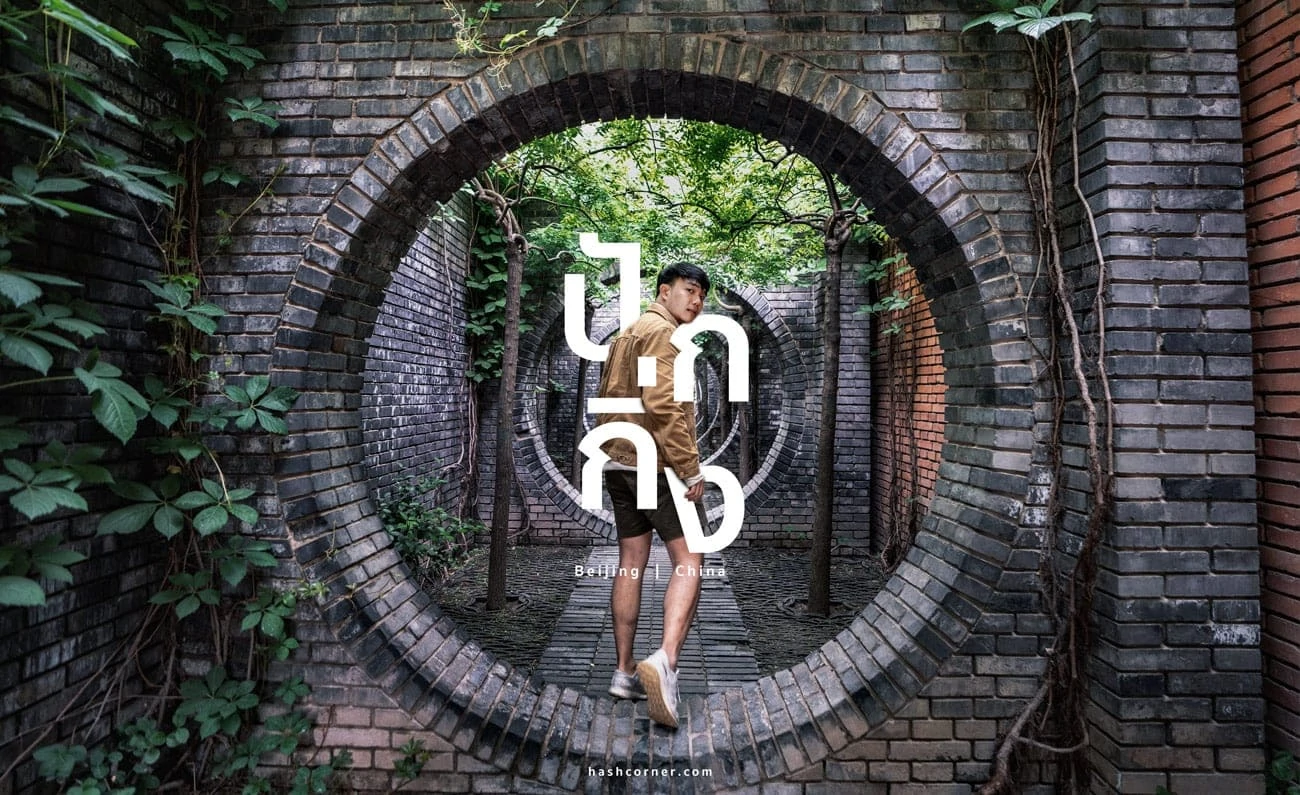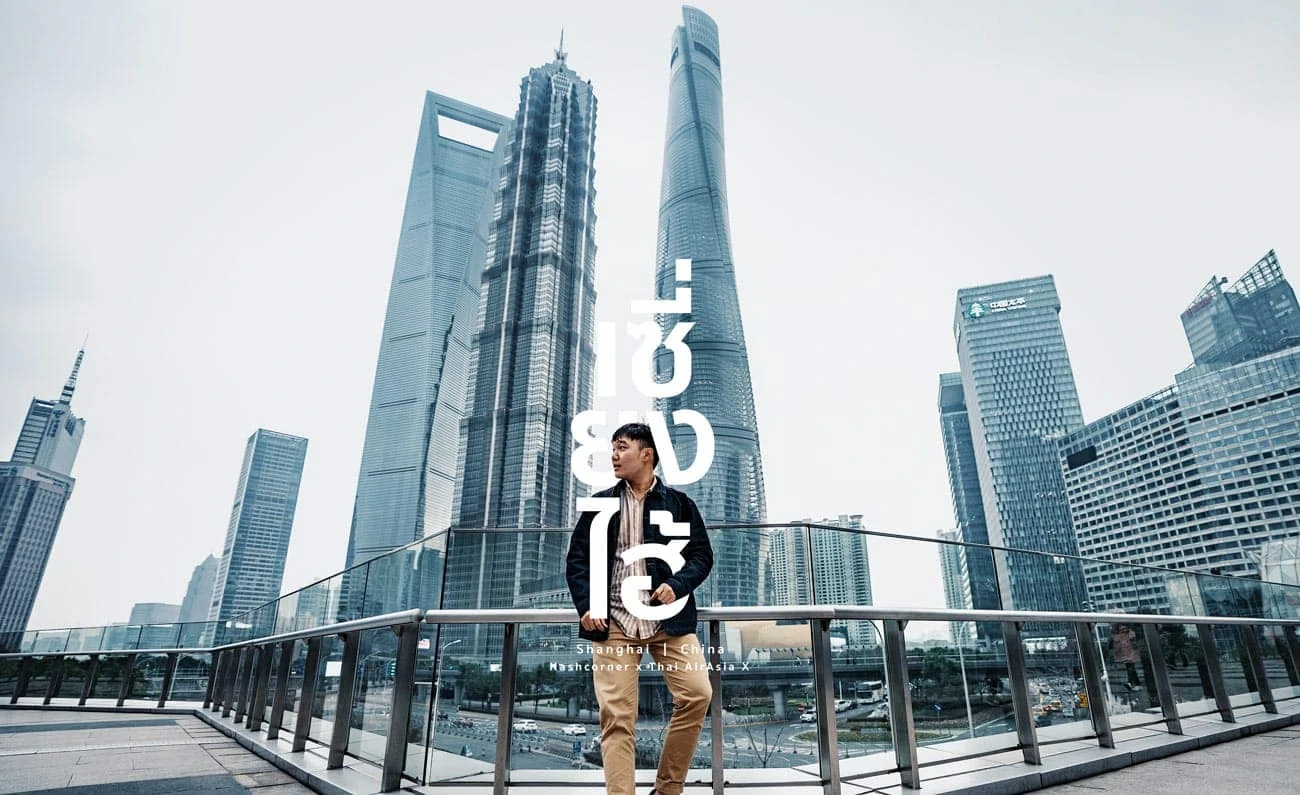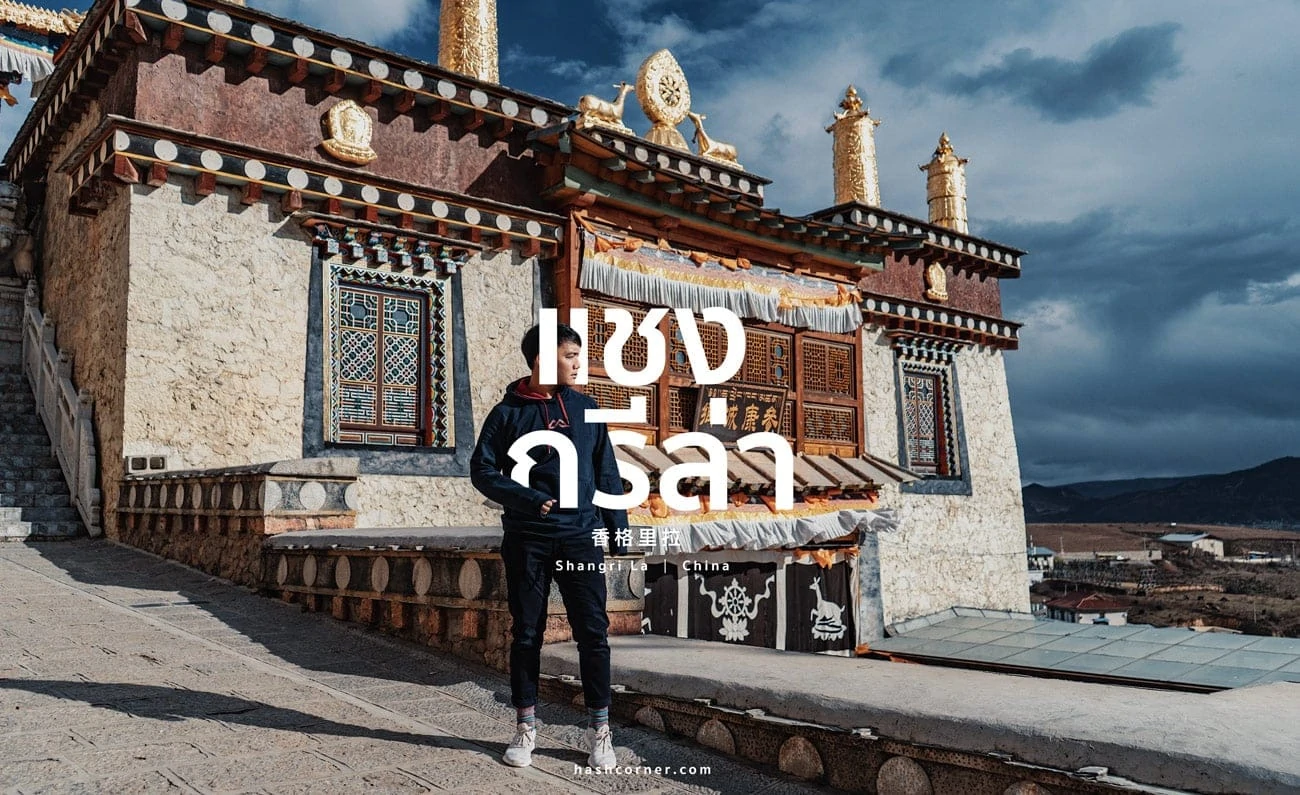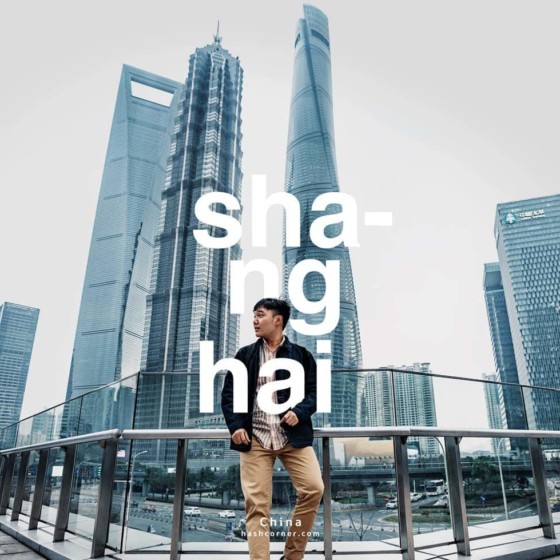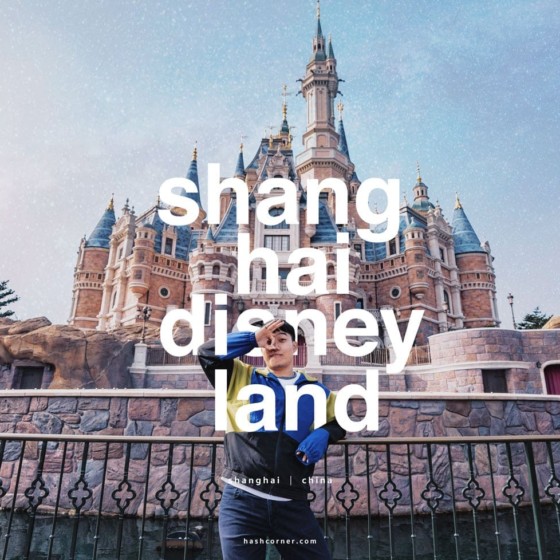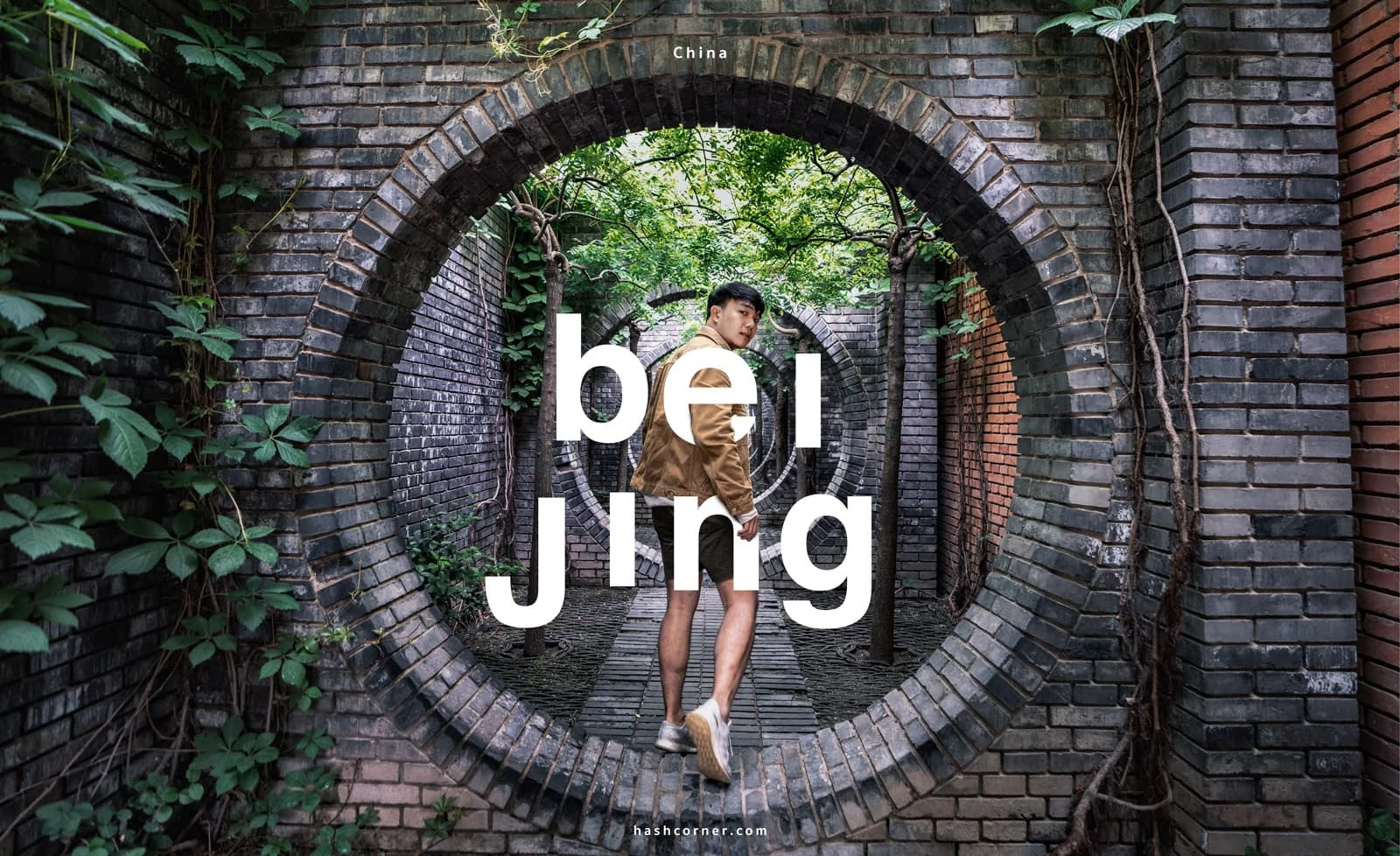
Beijing is another city in my Bucket List as I’ve known China since boyhood. I’ve heard about the Great Wall of China along with Chinese history. So, to me, traveling to Beijing is like historical tourism. This is the center of the country full of landmarks such as Tiananmen Square and The Forbidden City.
When having the opportunity to jaunt to Beijing, I was going all-out and visiting all landmarks, as well as being surprised with the artistic and idyllic of its art district. In my opinion, I was more enjoyable with this Beijing trip than the trip to Shanghai. Because it is fluent in the matter of civilization, history mixed with modernity. Moreover, the art here is a masterpiece. I highly recommend touring Beijing as it is a city once you should come in a lifetime.
Beijing Itinerary: 5 Days 4 Nights
| Day | Beijing Tourist Destinations |
| 1 | Tiananmen Square The Forbidden City Jingshan Park Wangfujing Pedestrian Street |
| 2 | Summer Palace |
| 3 | Yonghe Temple Tiantan Temple of Heaven Red-Brick Art Museum Qianmen Street |
| 4 | Great Wall of China – Mingtianyu |
| 5 | 789 Art District Free-time |
Accommodation in Beijing |
Beijing Day 1
On the starting day of the Beijing trip, I’d like to wander around the most important landmarks of Beijing first. In case if I tell my friends ‘hey! I’ve already traveled to Beijing. But didn’t pay a visit to China’s essential national places.’ This might sound weird. The first Beijing attraction I will begin with is Tiananmen Square, then keep walking north up through The Forbidden City, later, stopping at Jingshan Park. Eventually, I will end the day trip with a stroll at the shopping district, Wangfujing Pedestrian Street. In essence, Beijing’s whole image is tourism with discovering the great history of China. For those who are interested or knows about Chinese history, I assure you’ll be impacted and feel much more fun to explore here. Okie! Let’s start our journey together!
I must mention, China has rich historical records. If you get to know them, when attending each tourist attraction, you will be more into the places. So, I strongly suggest you reading the brief history of China before traveling. I promise those records are remarkable. As the knowledge written in this travel guide review, it was due to personal research based on both experiencing the real places and reading from references. If there is any false information. I am pleased to discuss it with you immediately. Don’t hesitate to share your knowledge and thought. 😊
Tiananmen Square
Let’s start in the center of Beijing with Tiananmen Square, the largest square in the world that able to hold more than 1 million people. There are massive Government landmarks surrounded the square, including the Forbidden City, the Mausoleum of Mao Zedong, the Qianmen Gate, and the National Museum of China. All of these places are considered as a place of significant events in the history of China. Especially the Tiananmen event in 1989, where Chinese students came out to demand democracy, followed by the dissolution of the assembly by the government causing many deaths. Ever since then, the Tiananmen event has already passed over 30 years.
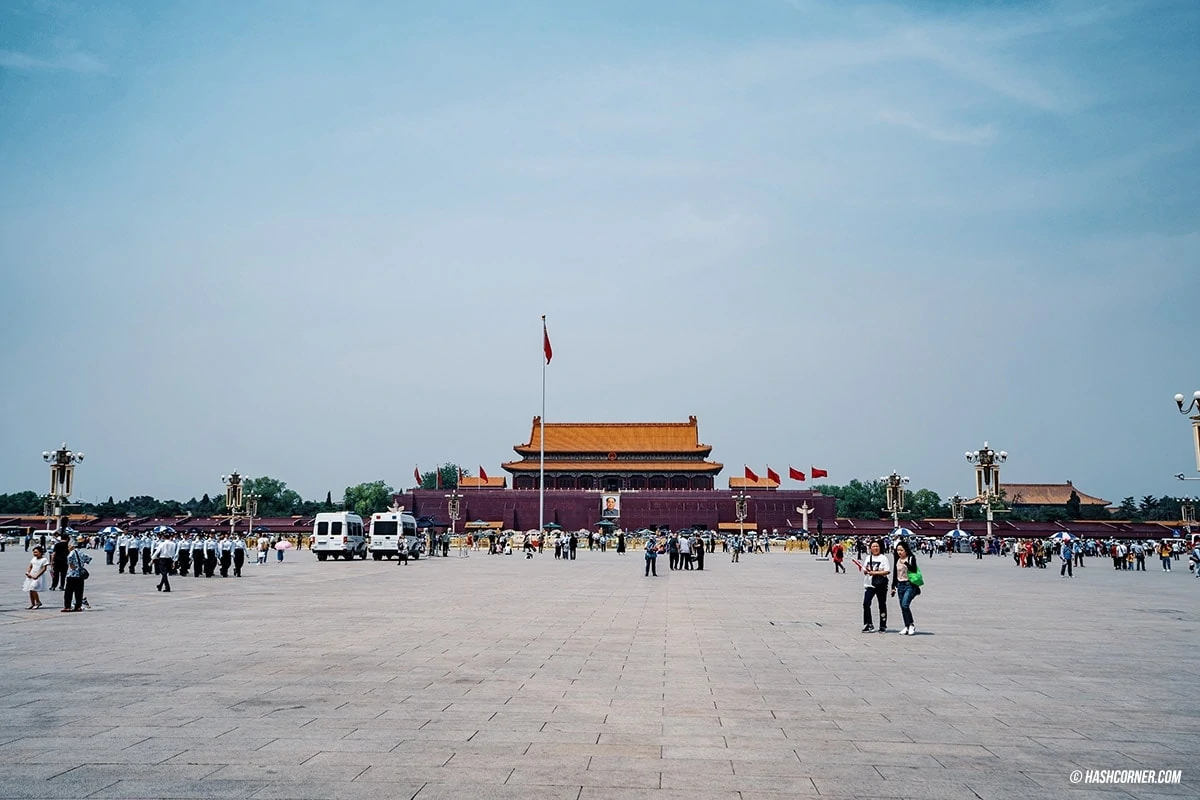
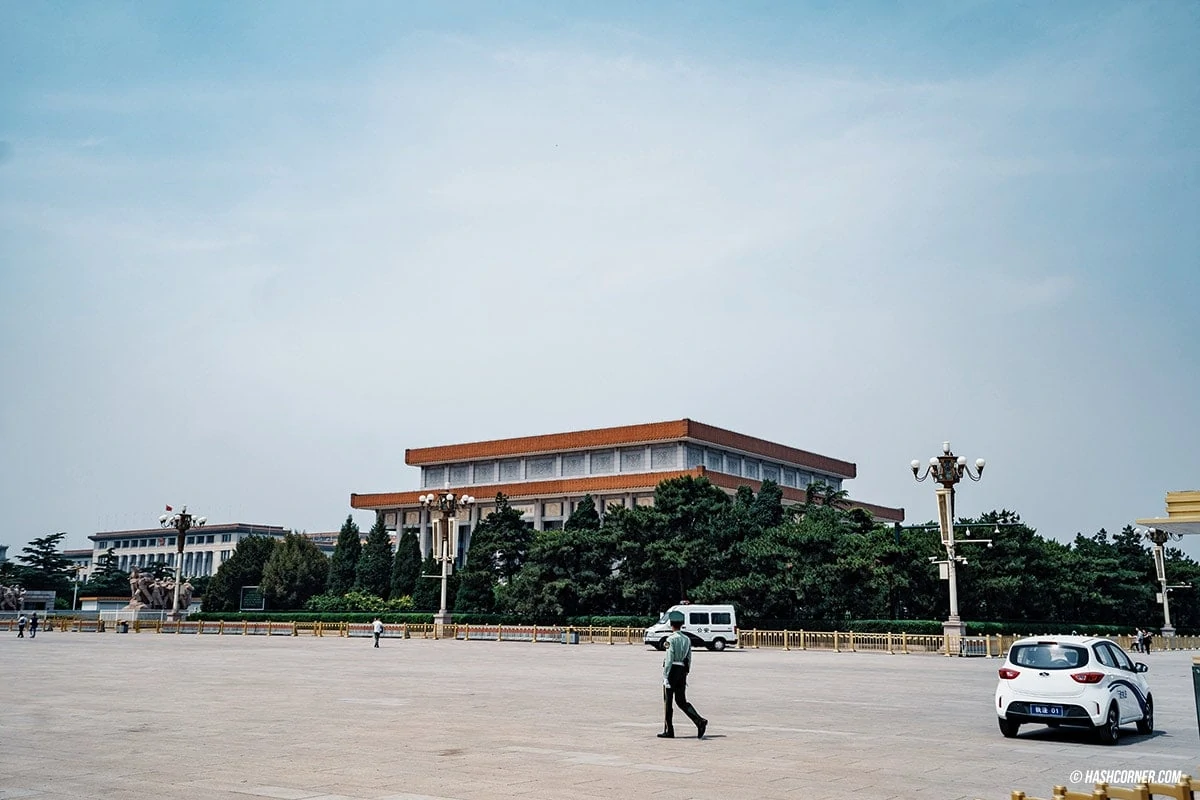
Tiananmen Square has no activity to offer, I just focused on strolling and sightseeing before continued to the next location, LOL. Heading south, there is the Mausoleum of Mao Zedong, which was closed during my visit. I could only take a picture of the front building and saw the heroic statues that glorify people who created the nation of China. When facing the opposite side, there is The Monument to the People’s Heroes stands majestically in the middle of Tiananmen Square. To commemorate the heroes who fought and died in the events of the national revolution in the 19th-20th century.
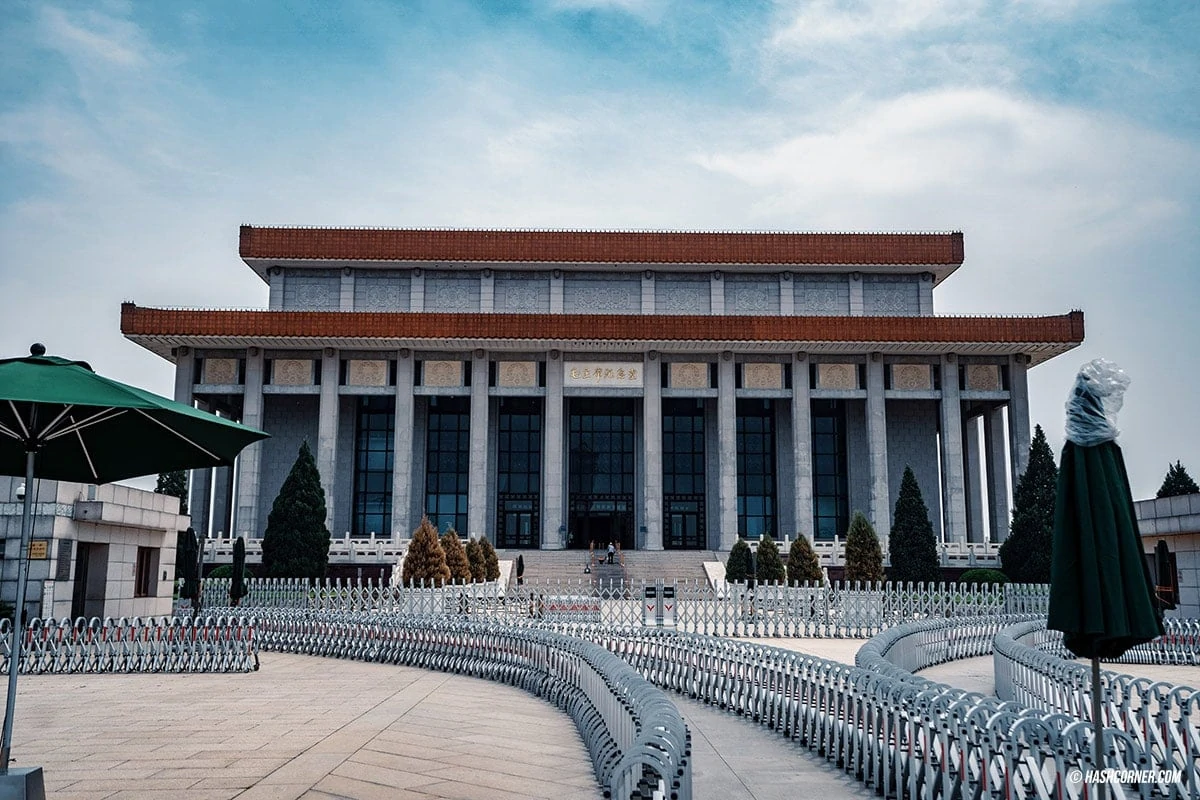
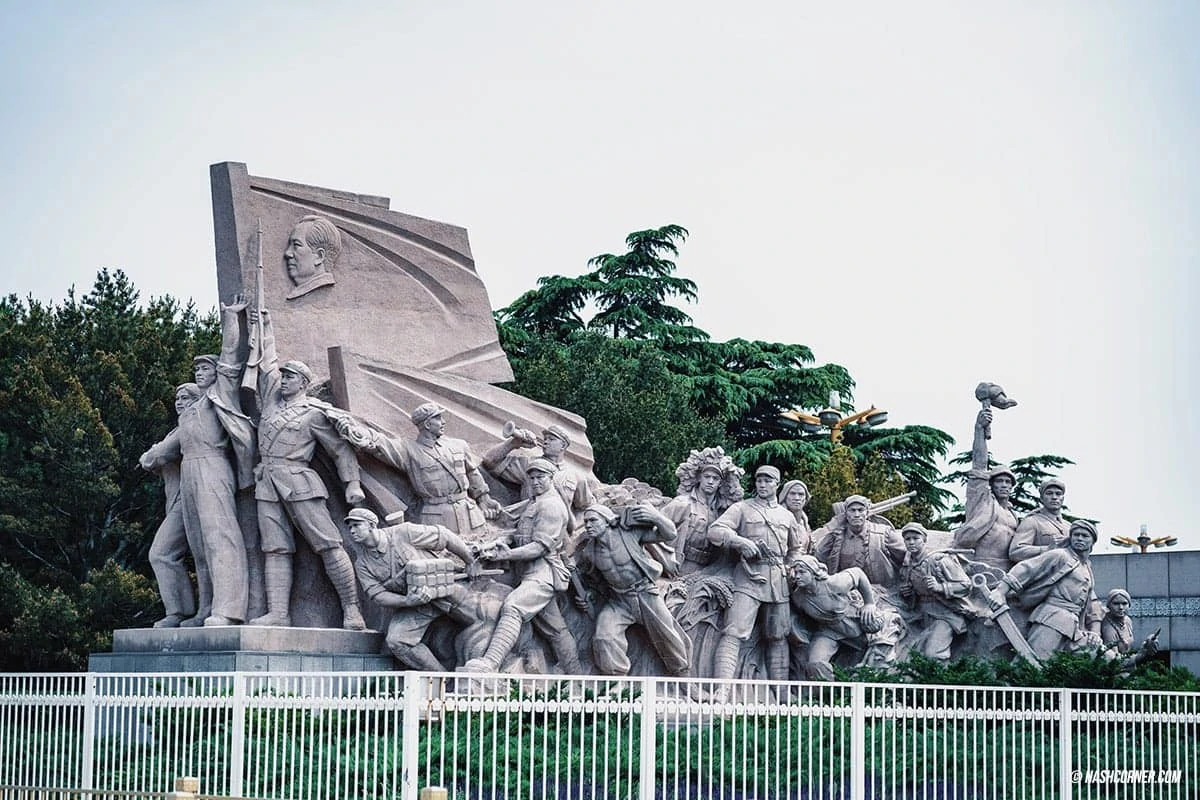
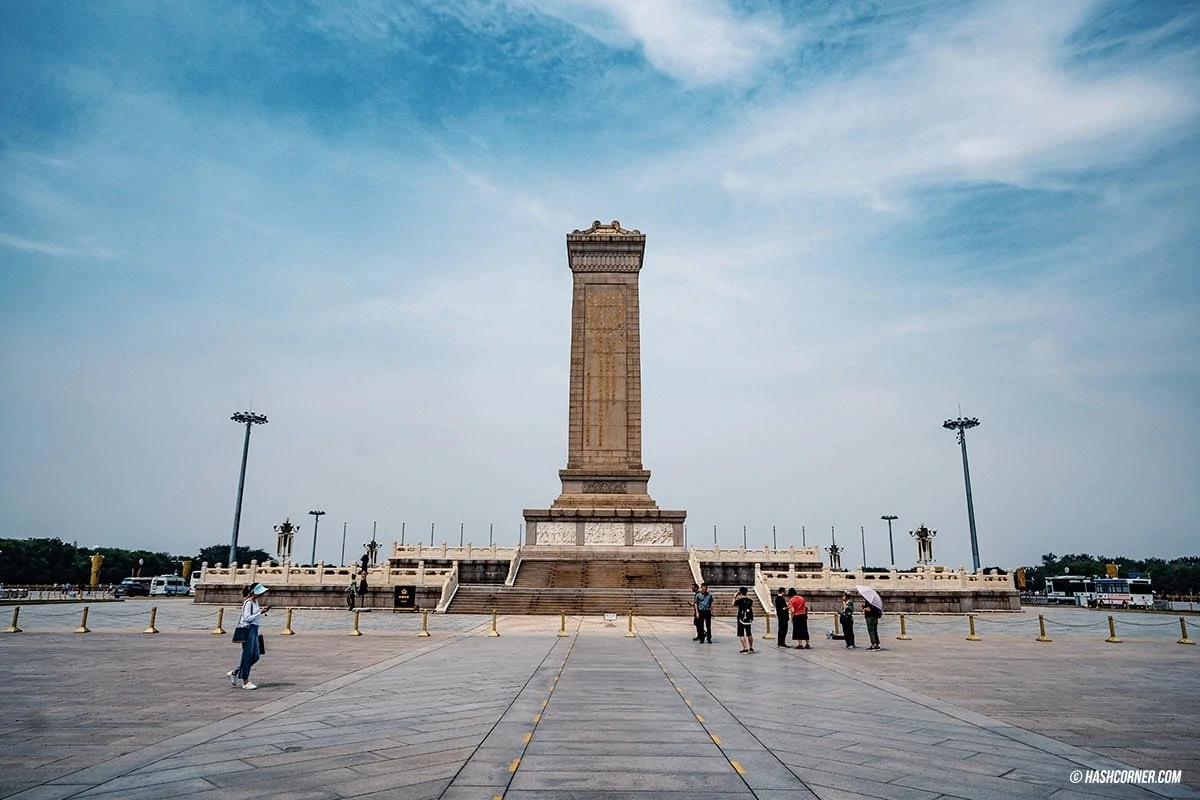
Walking through the stone pillar monument until reaching the front of The Forbidden City. This is the natives’ popular photo spot, in which this front area will be packed with Chinese visitors who set to take pictures before crossing the road to enter the Forbidden City. I also didn’t miss my chance to take a picture here. YAY!
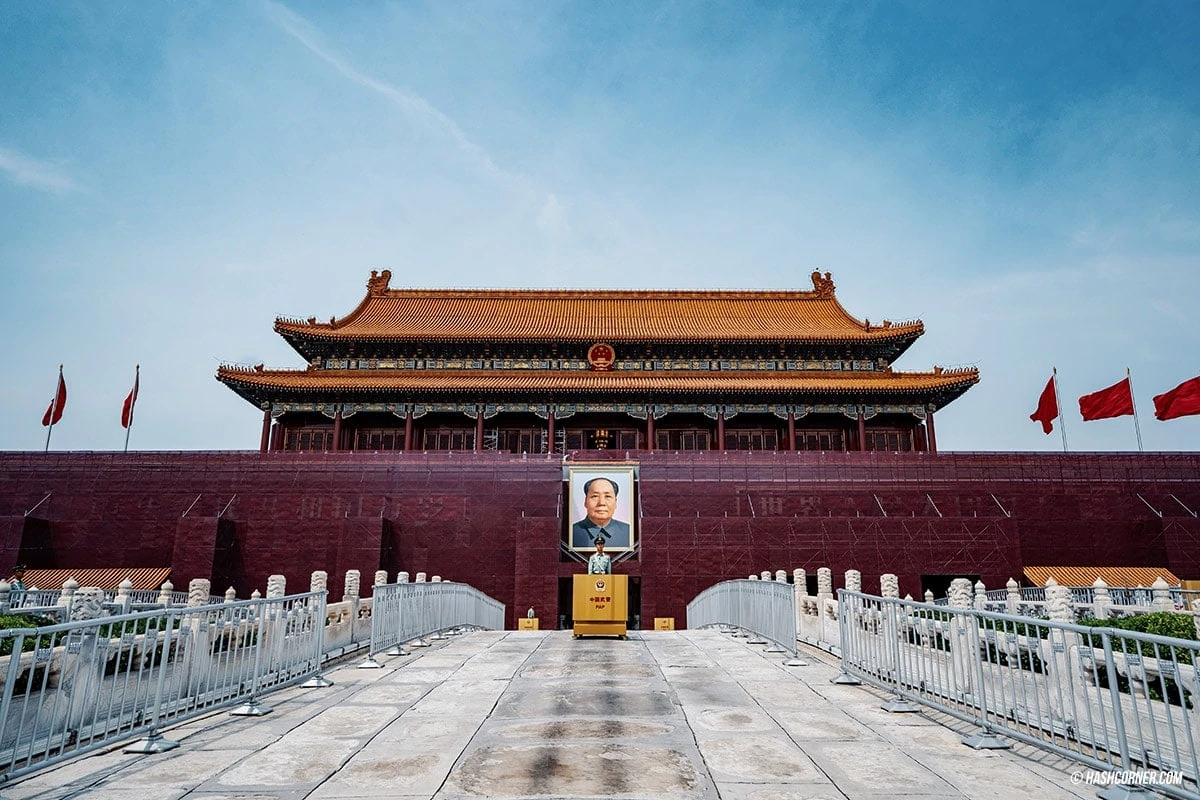
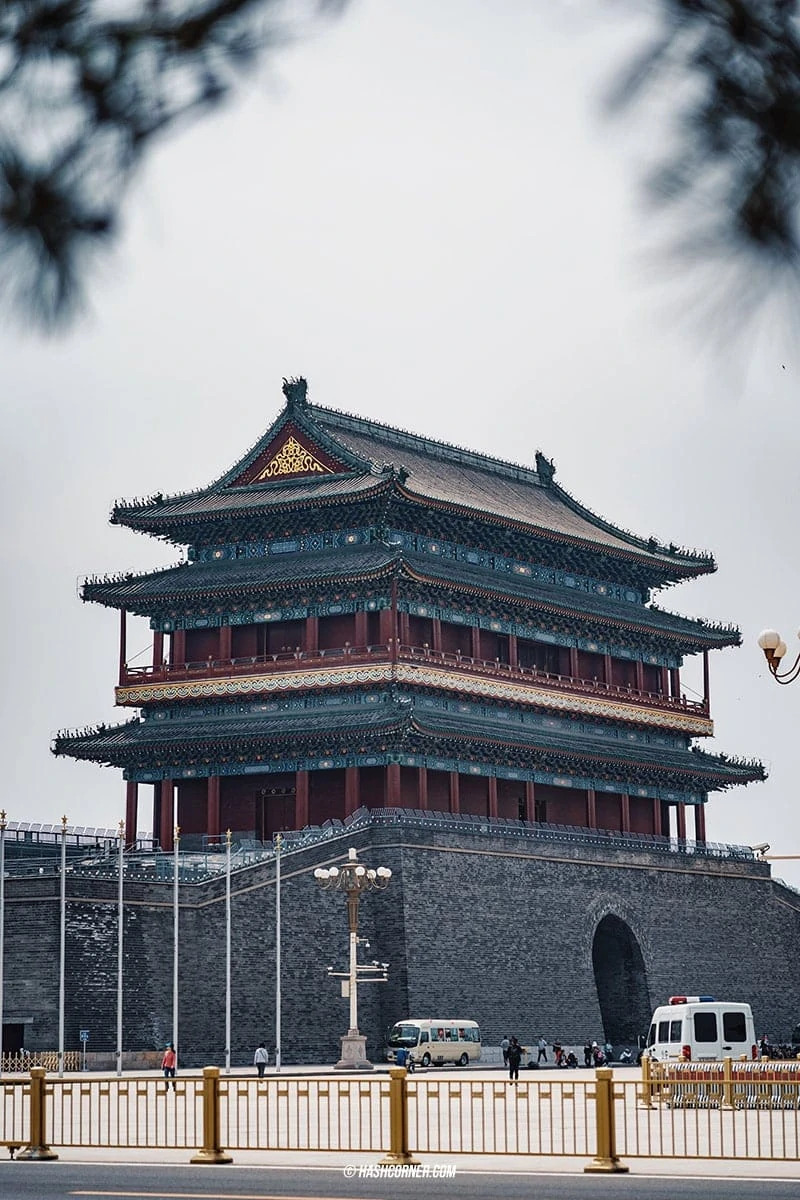
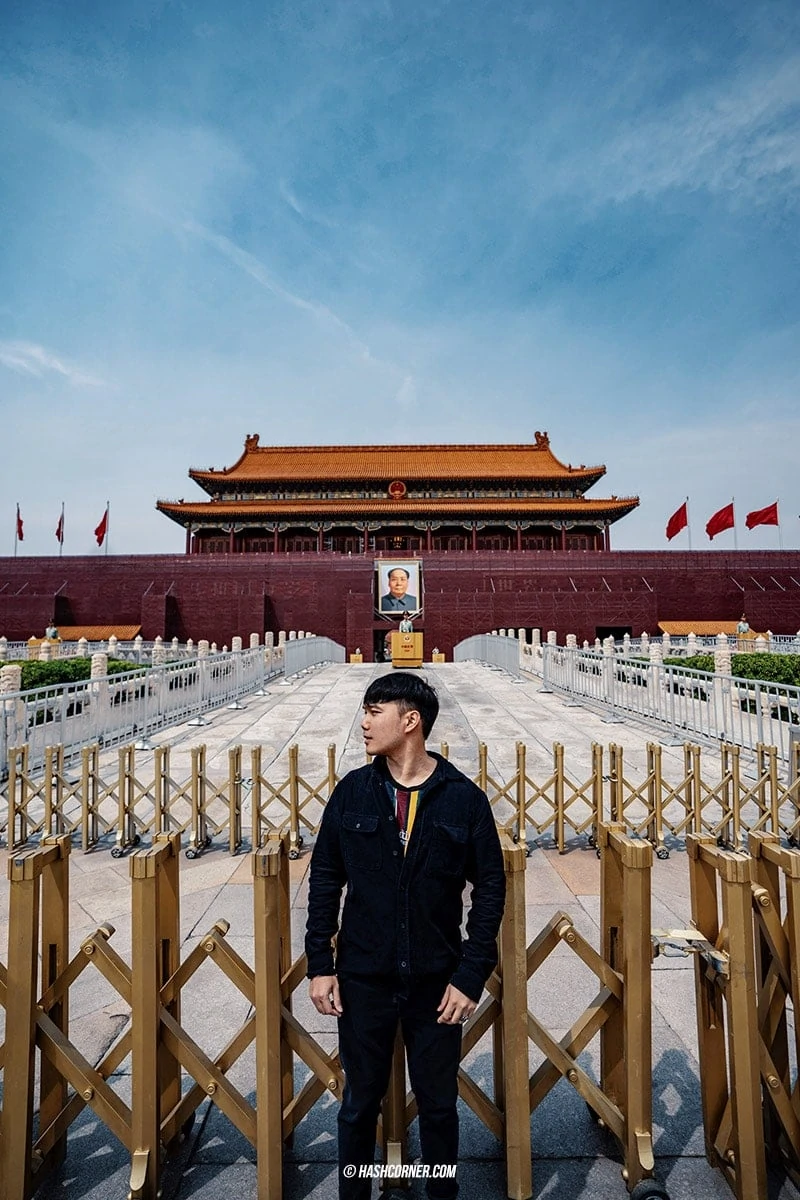
The Forbidden City
Across from Tiananmen Square, you can continue walking straight to The Forbidden City. The entrance fee is 40 RMB. When walking in, the ticket office paying by cash is located on the right side. Most foreigners line up to buy a ticket here. But as for Chinese citizens, they have to buy a ticket via QR code, and simply get in. For visitors who want to learn more about the Forbidden City, it’s advisable to rent an audio guide, which is a narrative audio device providing information while you walk to see each spot. To my surprise! There is my (Thai) language as well! I don’t remember the rental price, you can check it at the entrance because the rental booth is over there. If everything is well-prepared, let’s explore around!
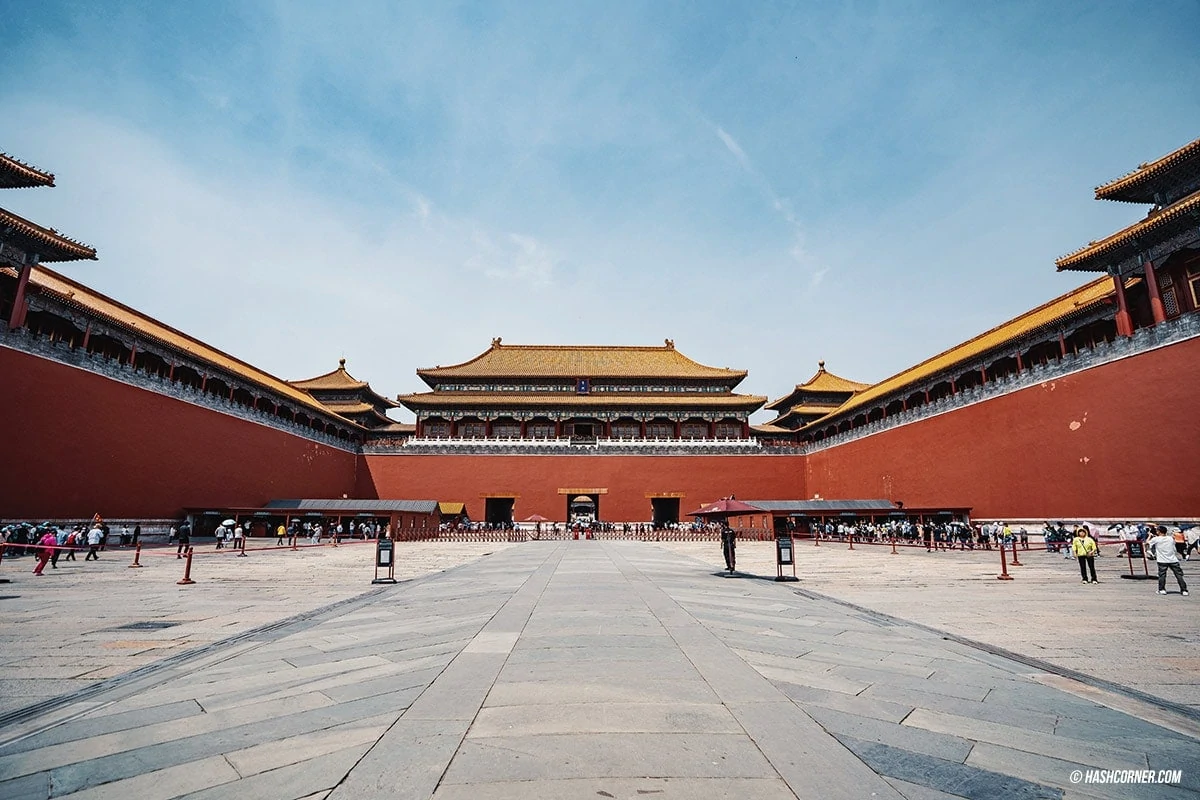
The Forbidden City is the largest palace complex in the world. With a total area of over 720,000 square meters, more than 980 buildings, and 8,728 rooms. Because this attraction is so huge, I dare to say traveling for just one day is not enough. According to my route plan, I will walk on a long straight path, passing through important palaces, then having a short visit to other parts. Sound plain and easy right? But all of these spots took half a day LOL.
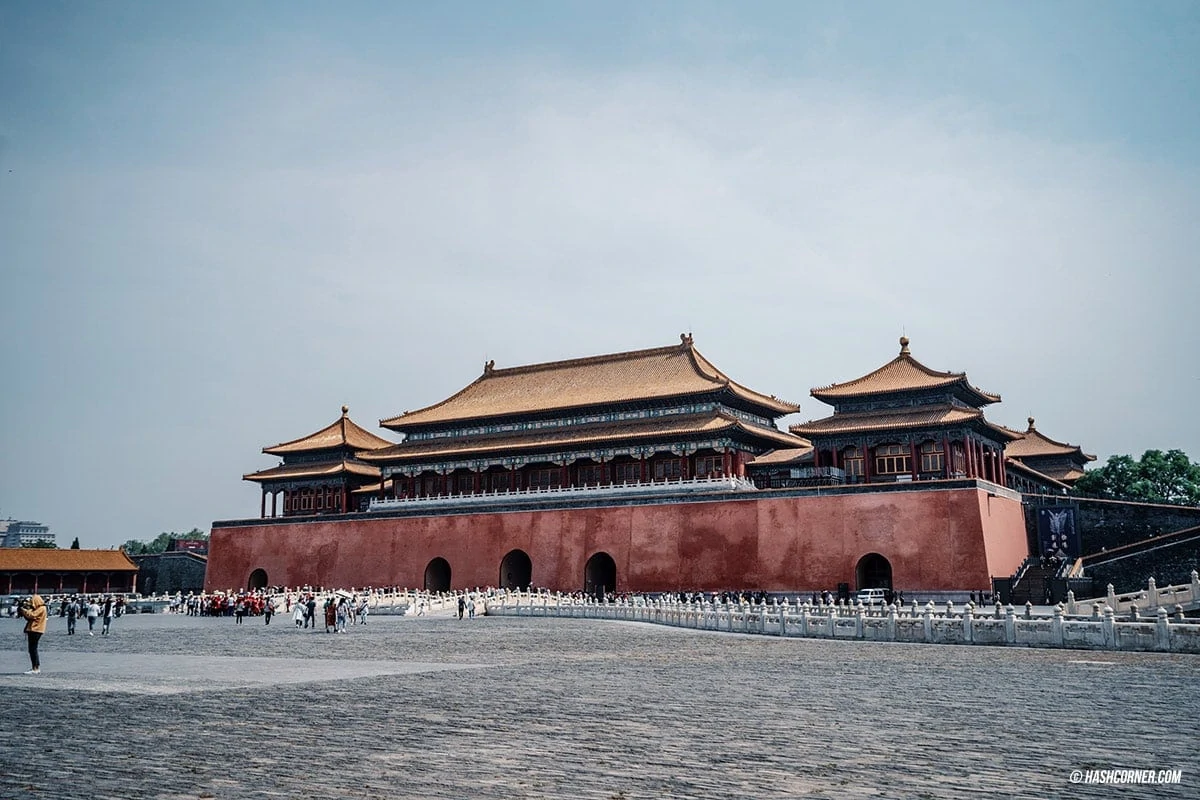
The details of each palace have a plentiful of information. If I have to write it all in this review. It will probably be impossible. On the whole, I will briefly summarize the foundation of knowledge before going on a vacation. The Forbidden City was constructed in 1406 by the Yongle Emperor during the Ming Dynasty. The complex is divided into two parts. The Outer Court or Front Court has 3 important halls used for the emperor to issue various government tasks, including used for ceremonial purposes. If you observe thoroughly, you won’t see any trees plant around the front palace since it is the place of use in the royal court. Consequently, the emperor had to show the utmost prestige because people believe that the emperor is the son of heaven. And there is nothing can obscure the emperor. The other part is the Inner Court or Back Palace, the residence of the emperor, and his consort. It is a shady area with a lot of trees, which is very different from the outer court.
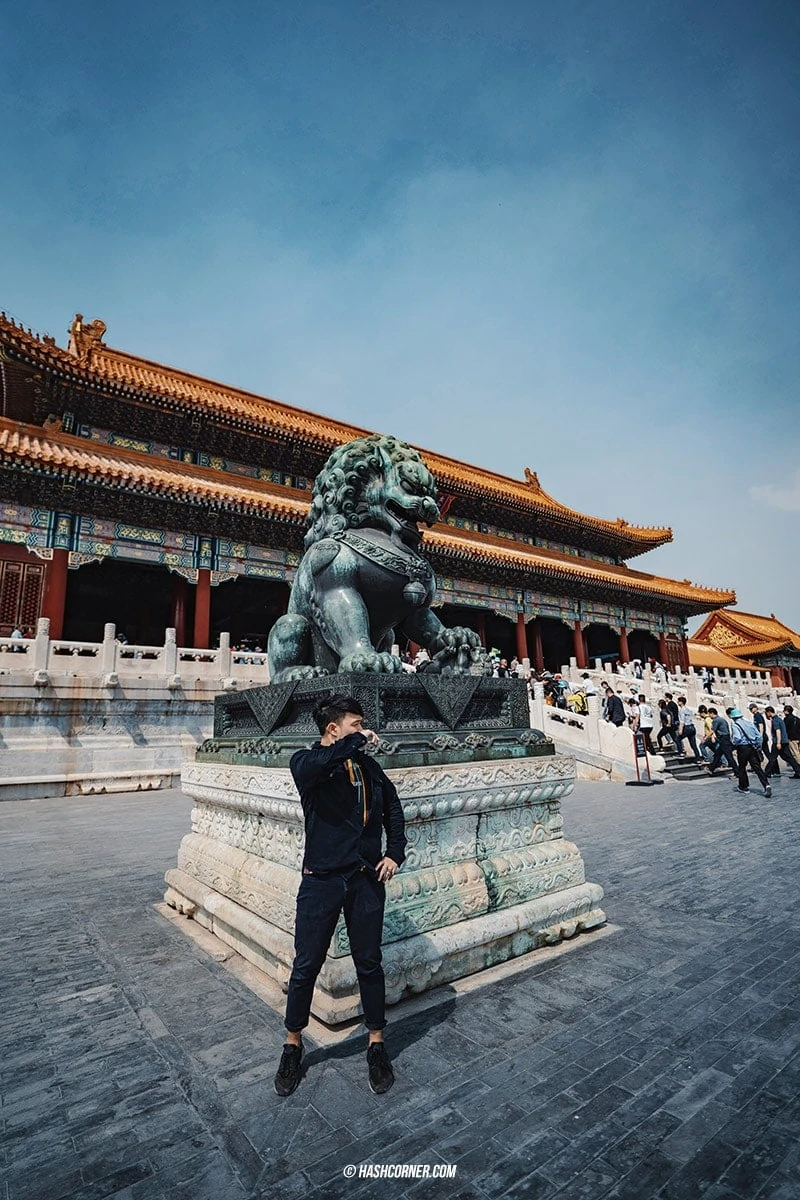
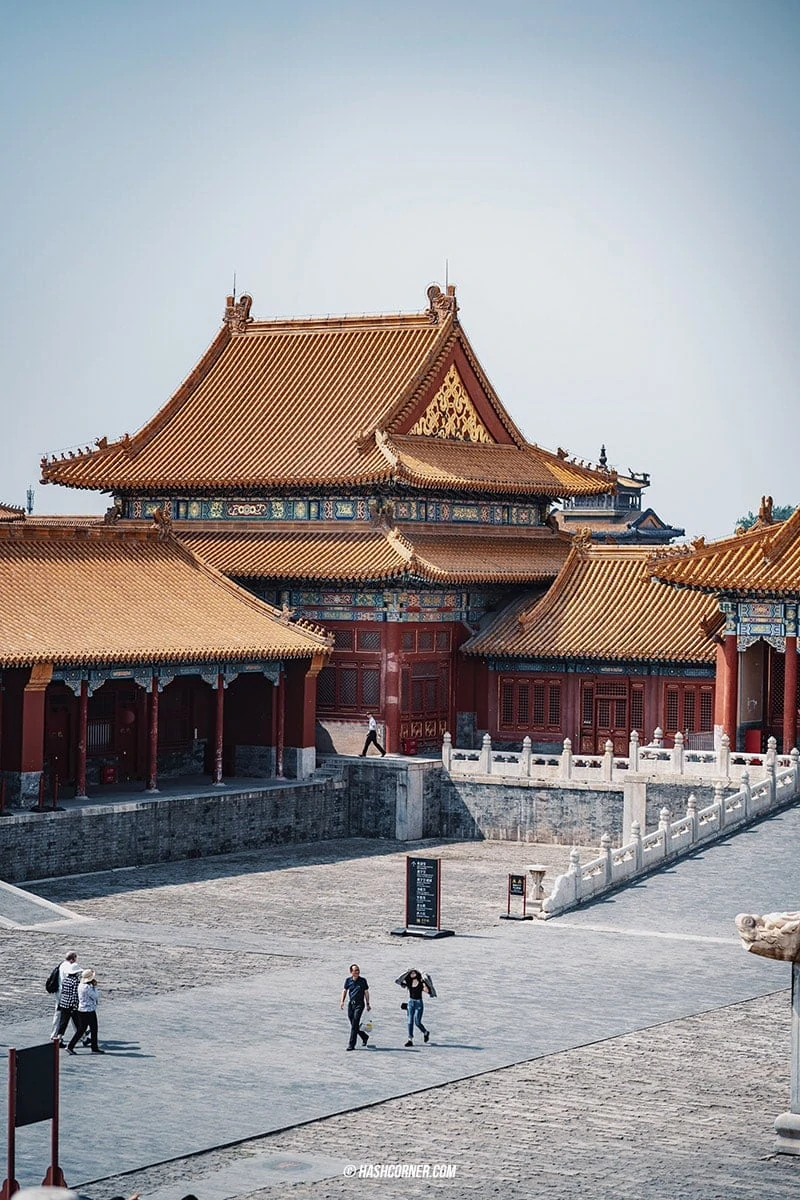
⭐️Hall of Supreme Harmony / Taihedian
Walking route from the entrance, I started from the Taihemen Gate to enter the Outer Court, which has 3 significant halls that you shouldn’t be missed. Starting from Hall of Supreme Harmony / Taihedian, the most important hall of the Forbidden City and the largest hall in the Chinese Empire at that time. A higher building was strictly prohibited because this hall was the center of government affairs, along with organizing major royal ceremonies of the emperor, such as the coronations, birthdays, including imperial weddings as well.
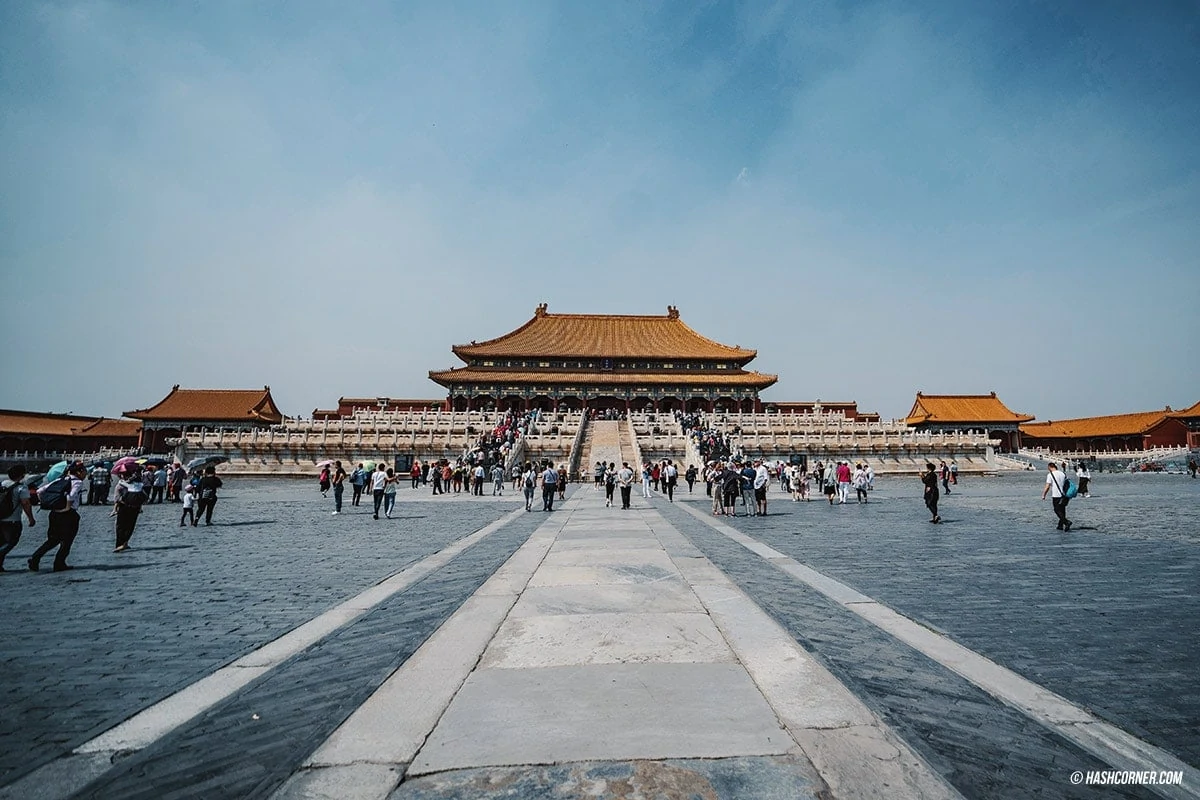
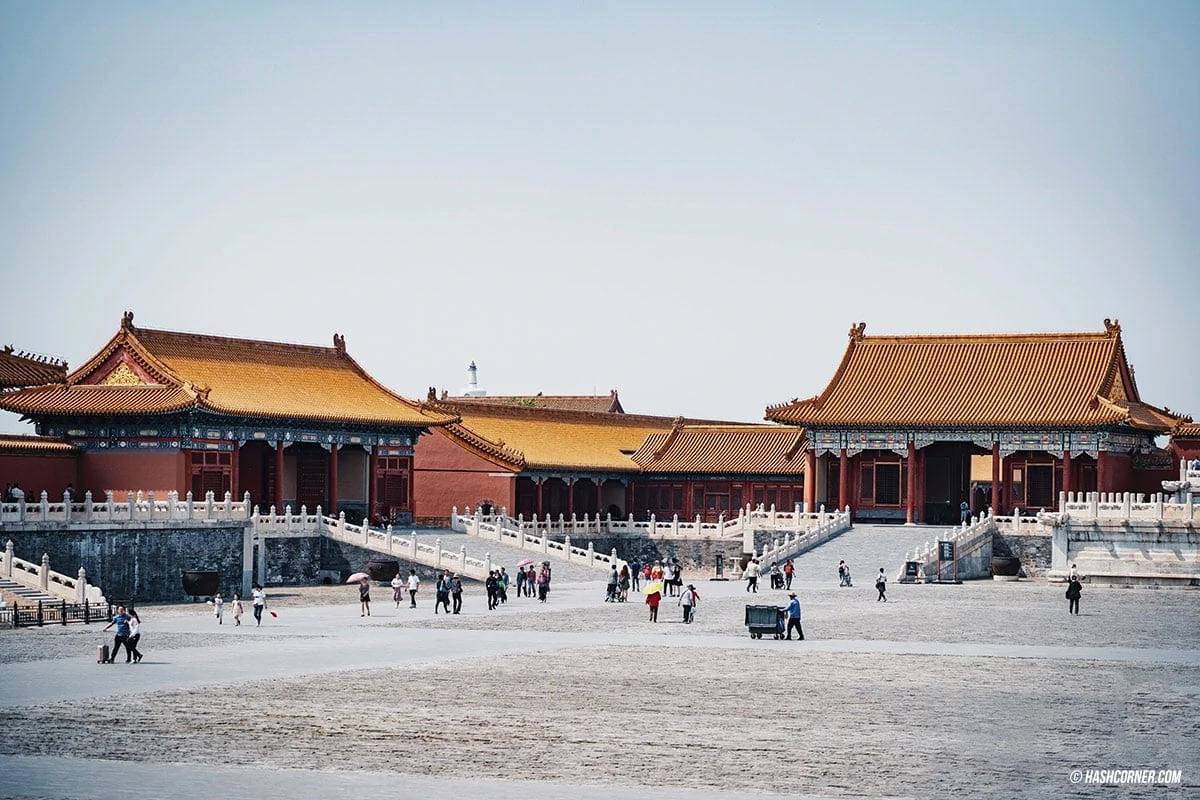
⭐️Hall of Central Harmony / Zhonghedian
Next is the Hall of Central Harmony / Zhonghedian, the smallest hall of the Outer Court, used by the Emperor to prepare and rest before government affairs at Taihedian, the hall we just previously visited.
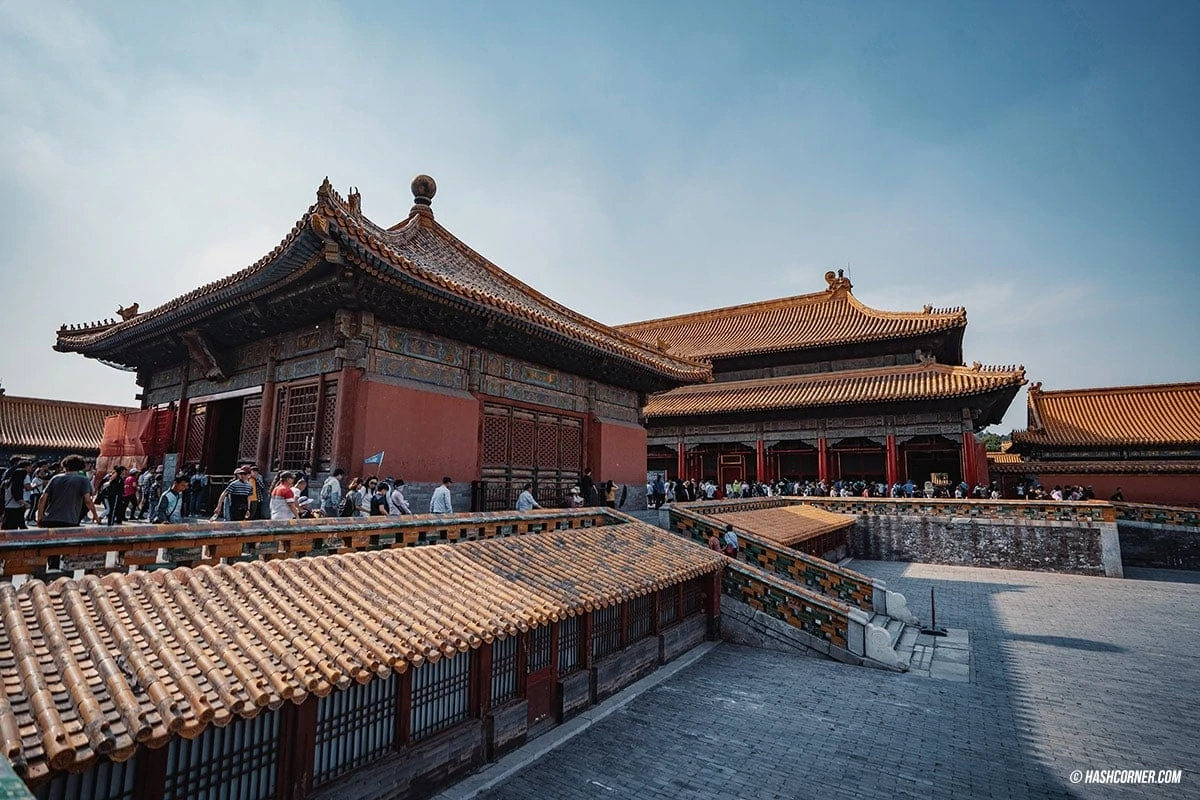
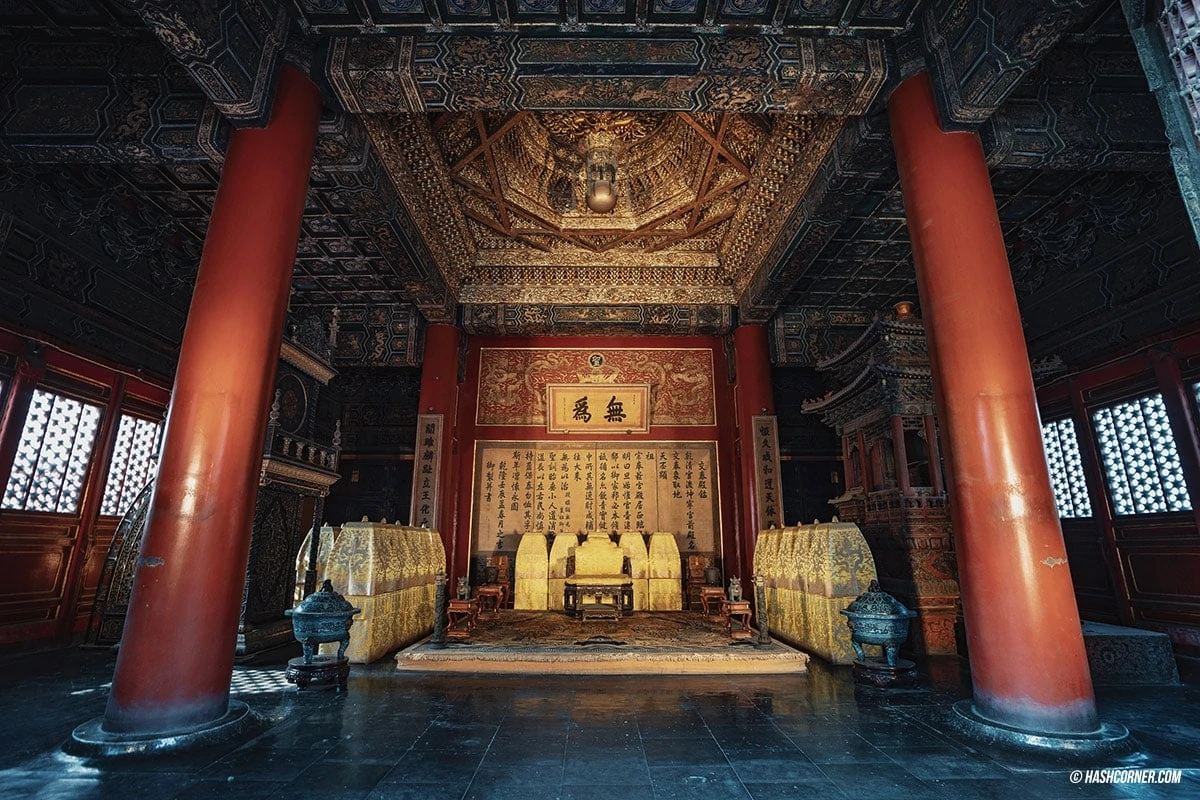
⭐️Hall of Preserved Harmony / Baohedian
The last site of Outer Court is the Hall of Preserved Harmony / Baohedian. It was used as a venue for celebrations. As well as being the final stage of the Imperial examination. The emperor issued and oversaw the examinations by himself. The top 10 scholars who get the highest score would be announced by the Emperor to the public, which was respected the highest honor.
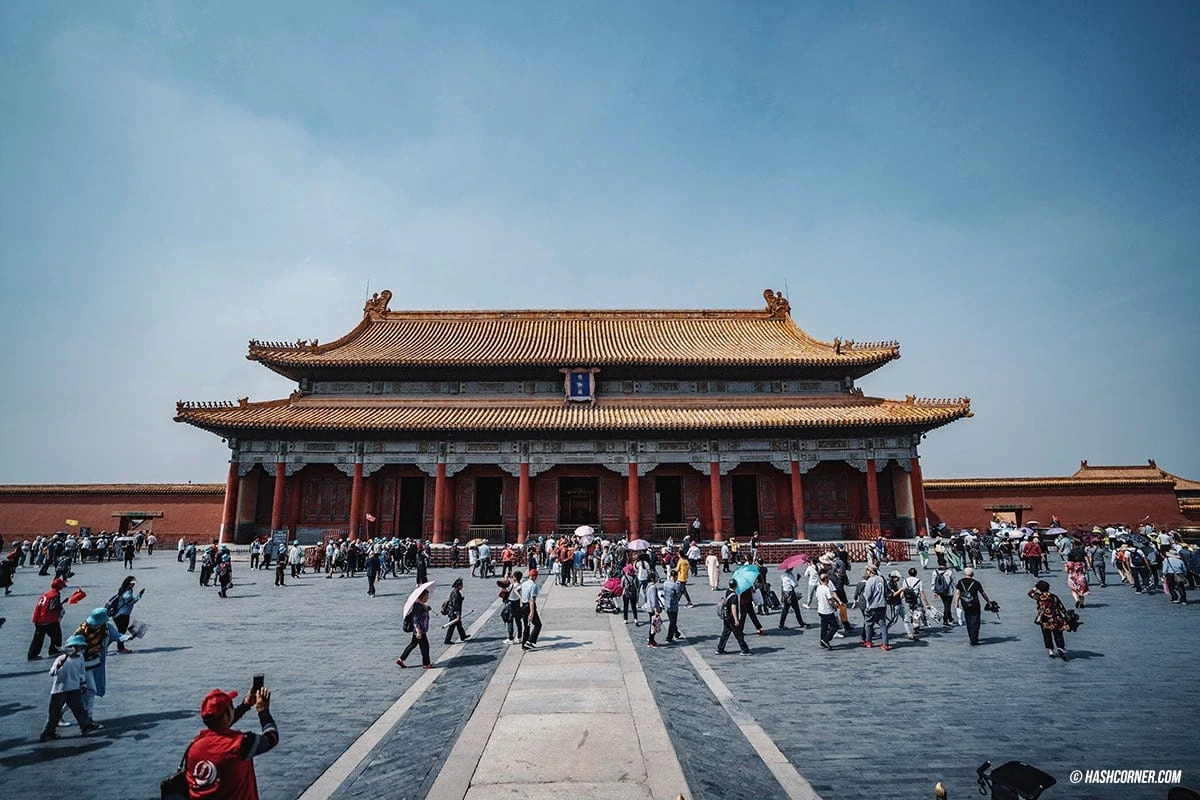
Palace of Heavenly Purity / Qianqinggong
From the Outer Court, entering the Inner Court with the first stop at the Palace of Heavenly Purity / Qianqinggong. The Emperor used the palace as a place for signing and examining documents. As well as organizing celebrations for various occasions. Besides, the palace was also the venue for the royal funerals. The urns of the Emperor must be placed here to show mourning before transferring to Jingshan Hill for religious ceremonies.
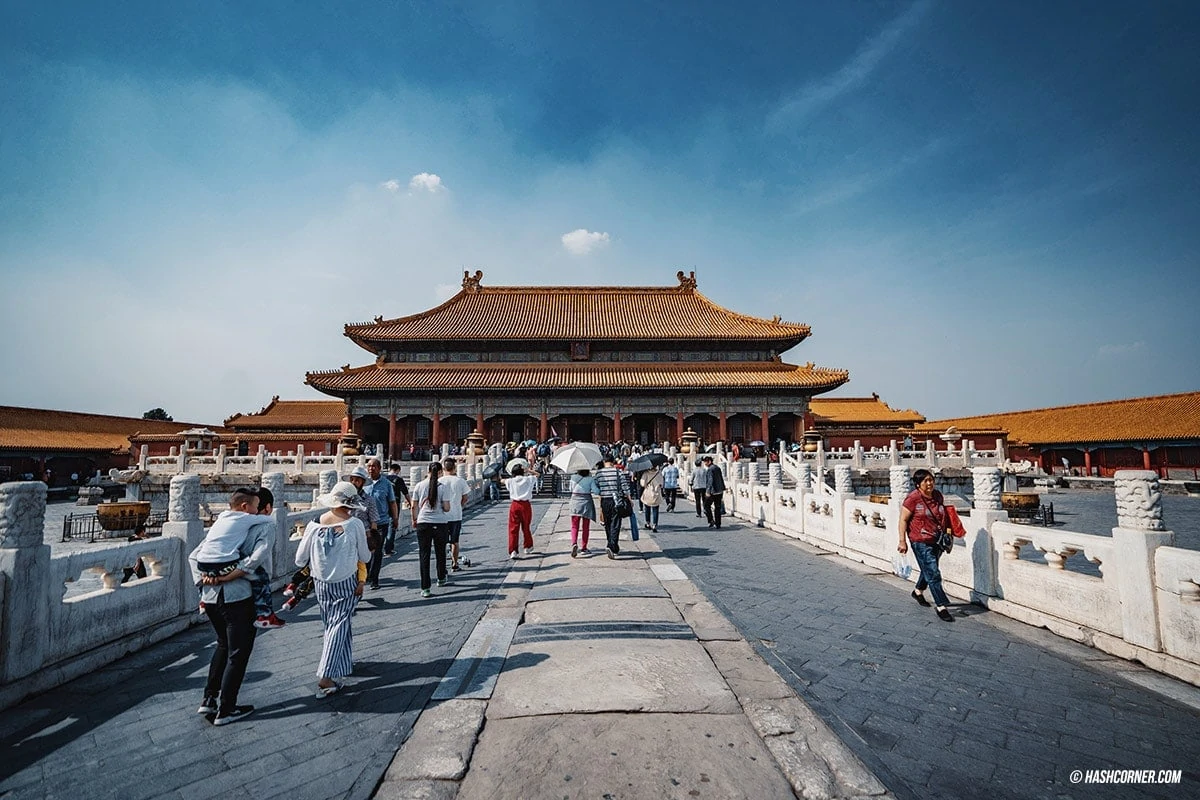
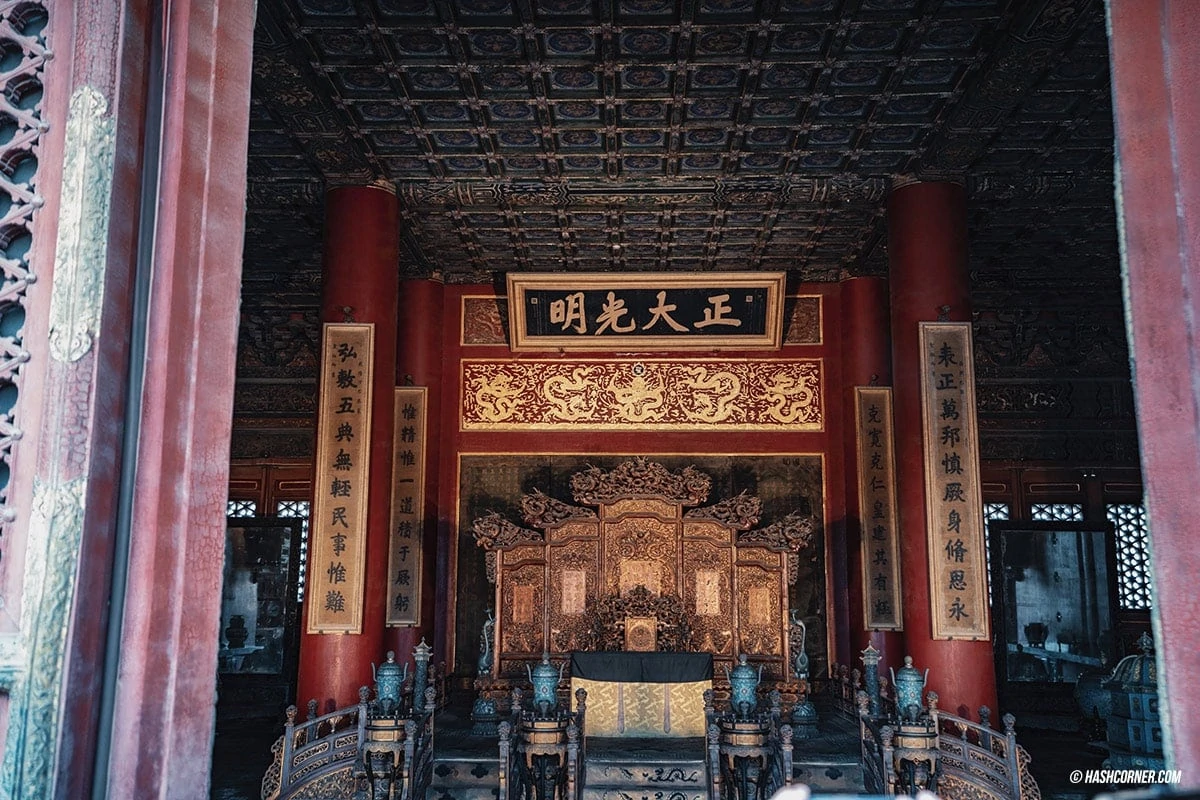
For over 500 years, The Forbidden City was used by the Emperor in the Ming and Qing Dynasties. At the end of 1911, the Xinhai Revolution occurred to overthrow the power of the Qing Dynasty. Puyi was the last Emperor who used this palace and considered the end of absolute monarchy and the Chinese Empire that warrant for more than 2,000 years in China.
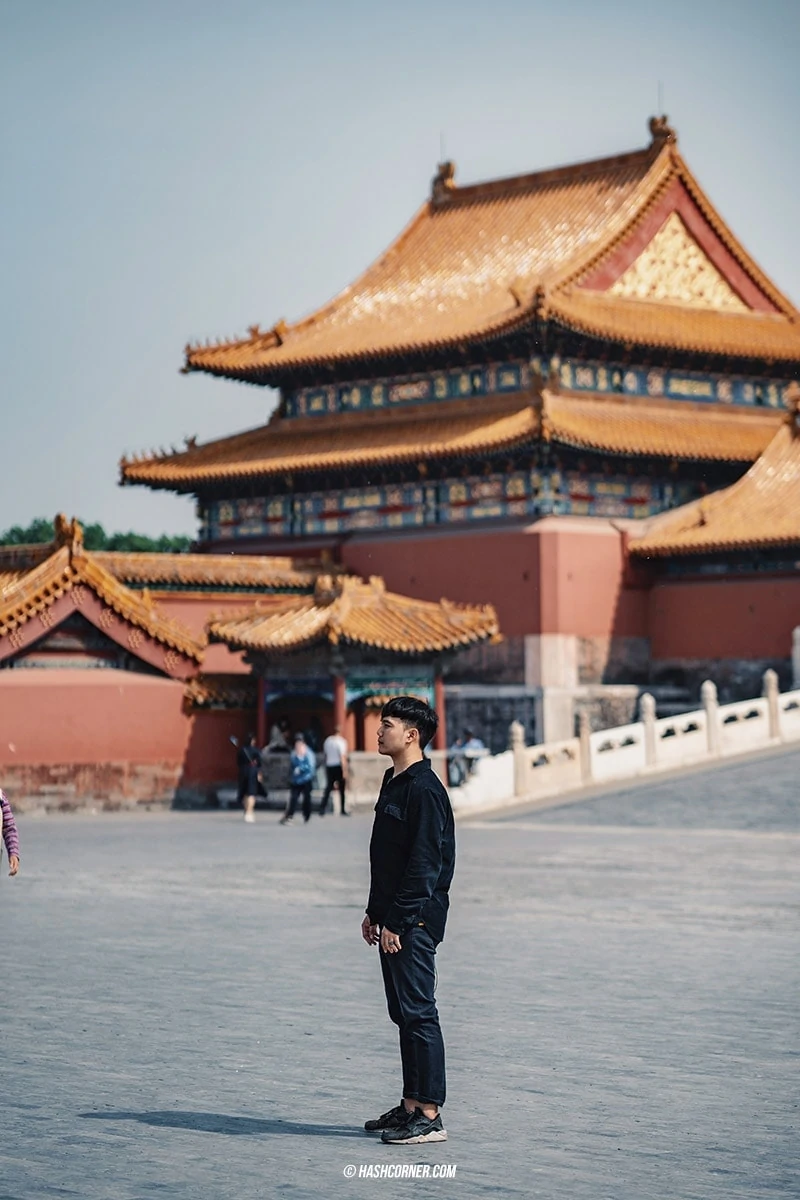
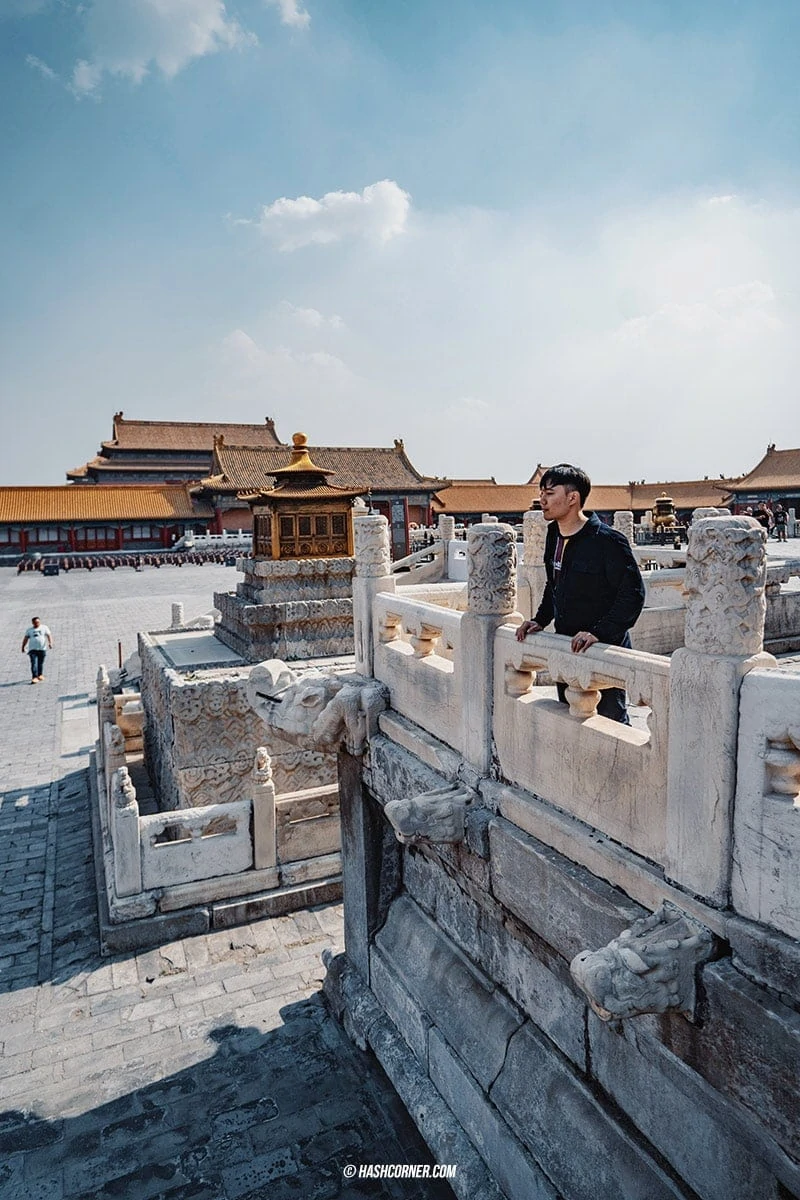
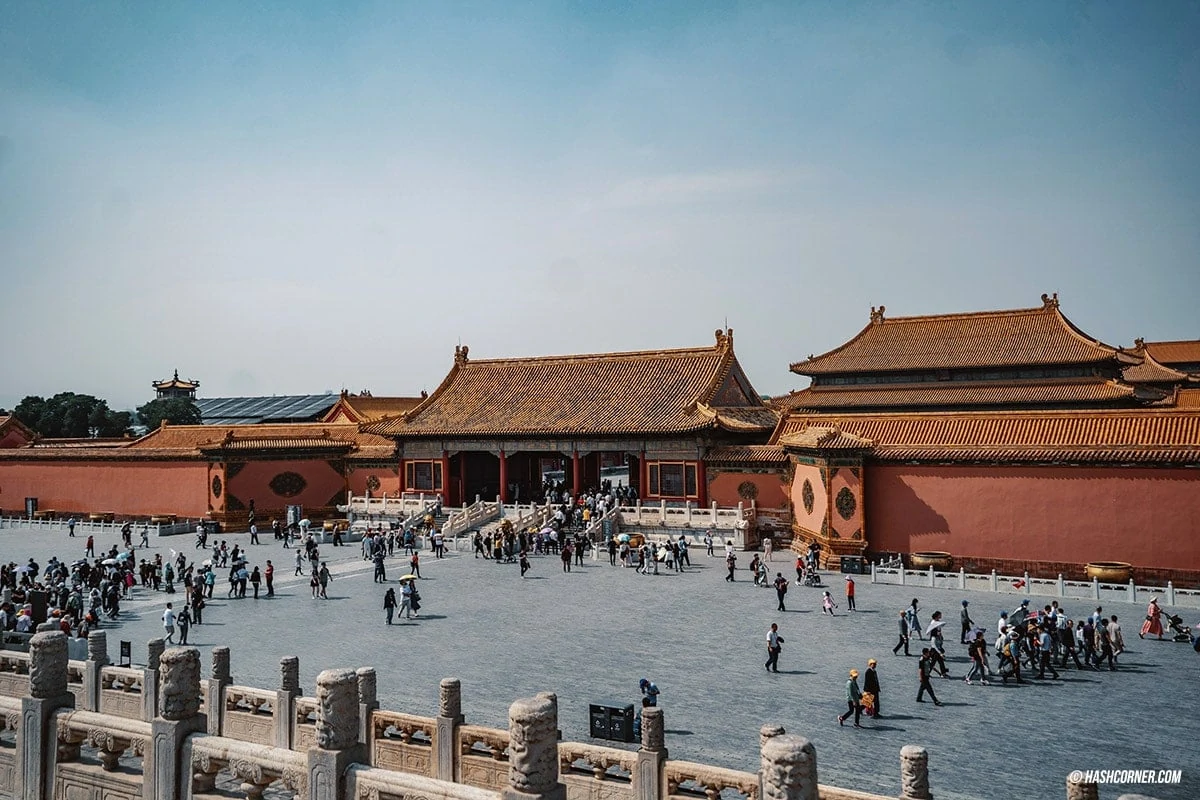
Jingshan Park
Walking out of The Forbidden City north gate, I can say the trip will not be complete if you don’t cross the road and go to Jingshan Park. Because there is the Jingshan hill where you can climb up to see the Forbidden City prospect, which is picturesque. The right timing to visit is in the late evening that closes to sunset time. After climbing up, you can just sit and enjoy the historical scenic. I’m indeed recommended this. Also, the entrance fee is not expensive at all, it costs only 2 RMB.
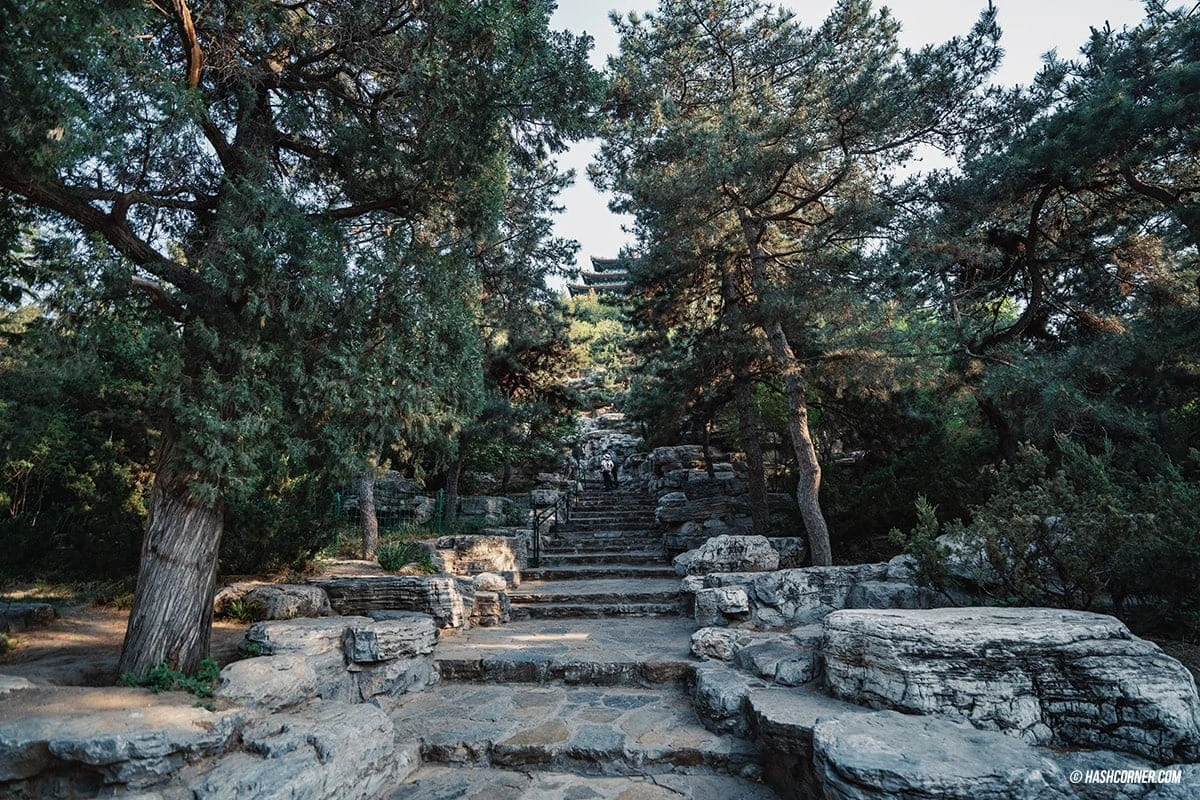
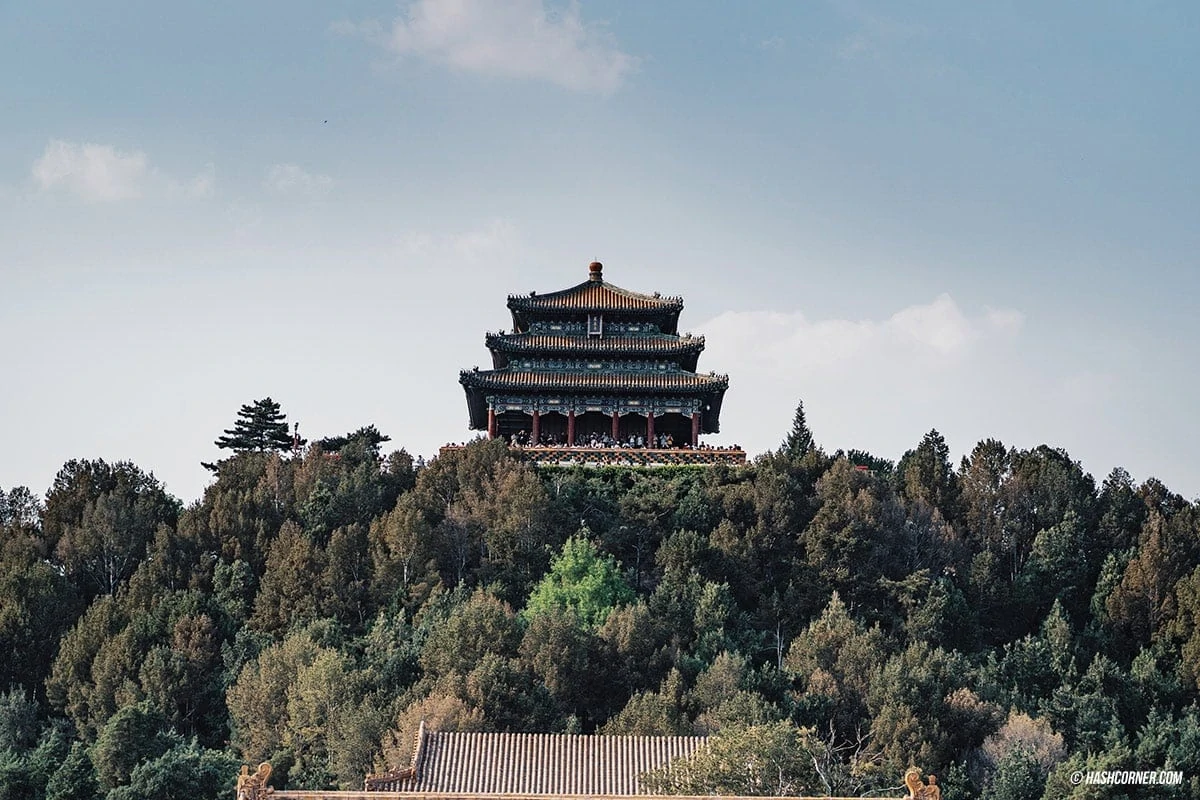
The hill we climbed up in the Jingshan Park is artificial from the soil excavated in forming the moats of the Imperial Palace and nearby canals. Jingshan includes 5 individual peaks, the highest peak for viewing The Forbidden City is the one housed Wanchun Pavilion for visitors to leisurely rest and absorb the scenery.
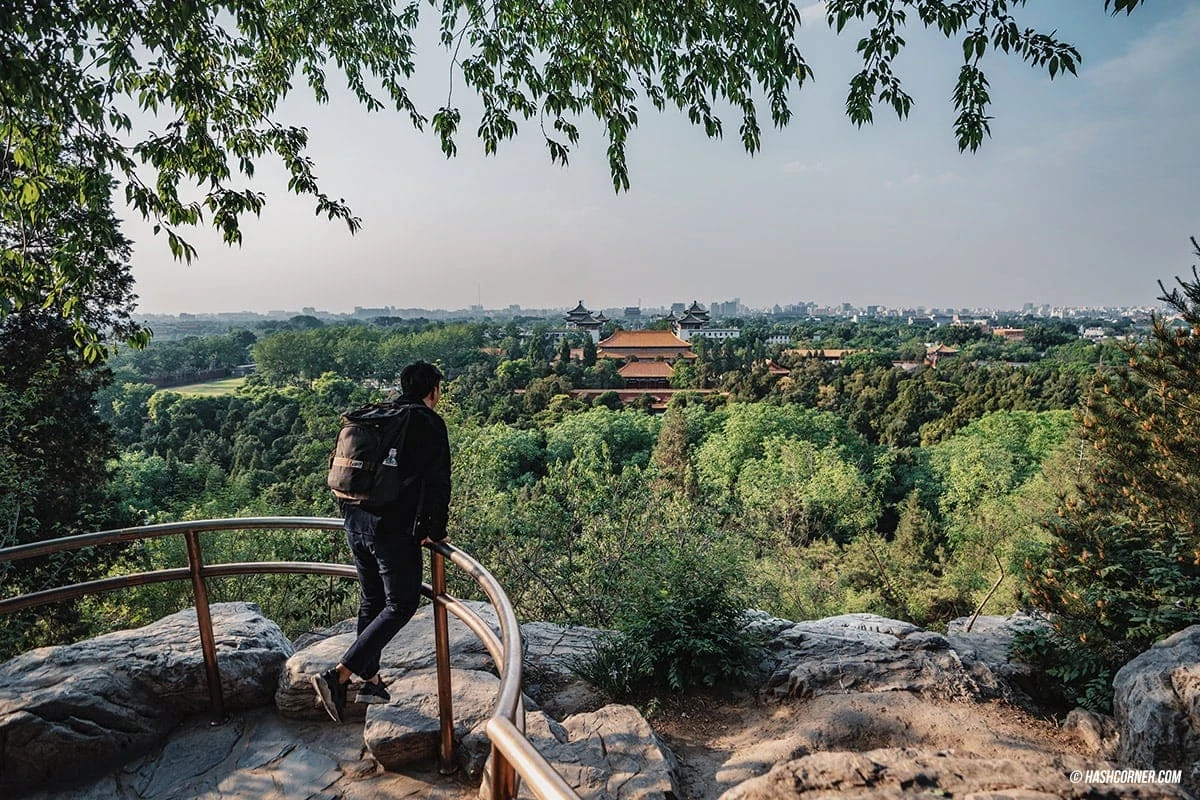
Strolling around the park, the surrounding was almost empty. But once I reached up the hill pavilion, I was a bit surprised because it was crowded! Good thing, there wasn’t too tight or no seats left. I was still able to sit and rest from traversing distantly within the Forbidden City. It was regrettable I didn’t last until sunset. Since I went there too fast, I had to wait for another hour before the sun would set, therefore, I ended up going somewhere else. LOL
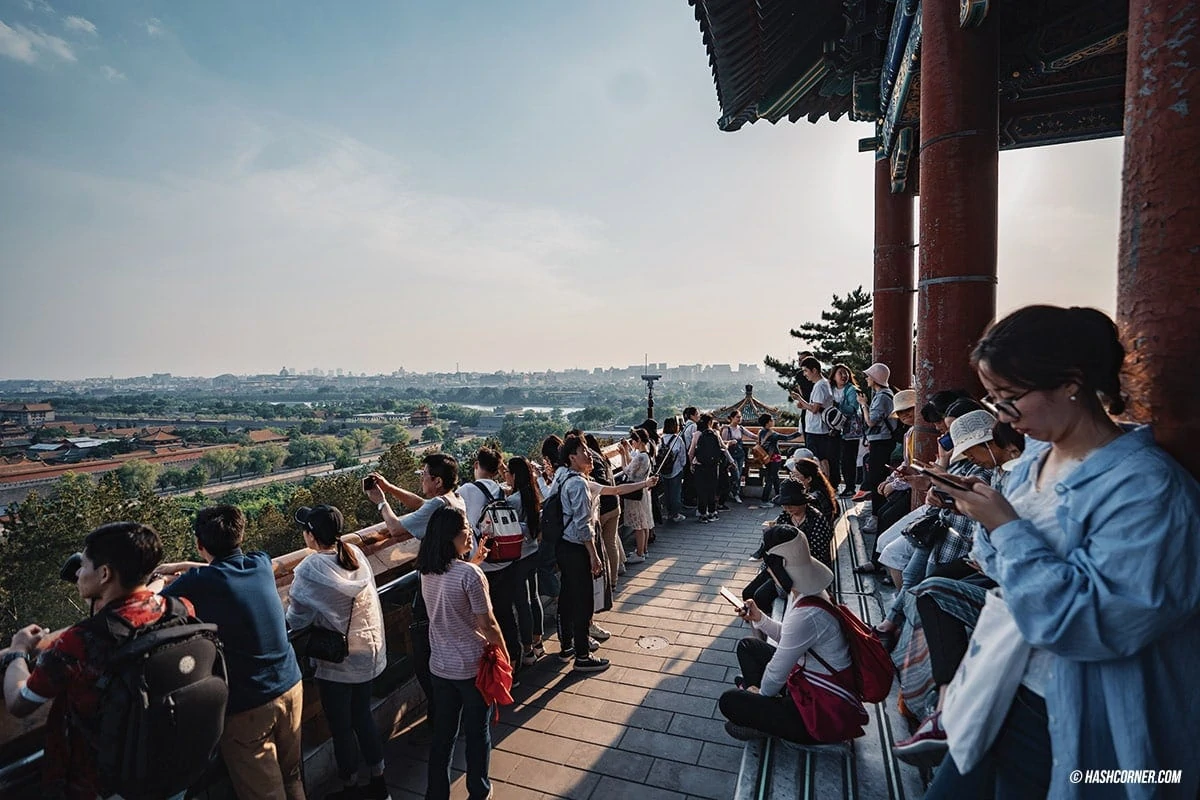
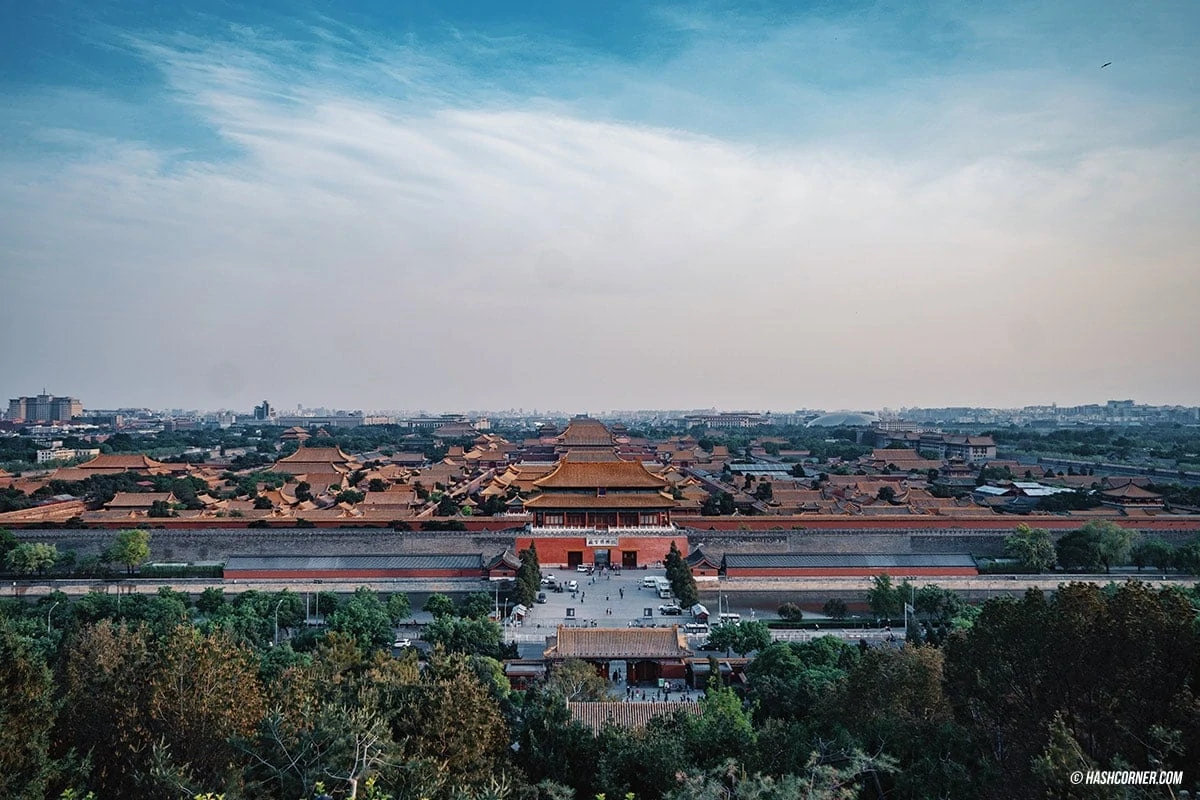
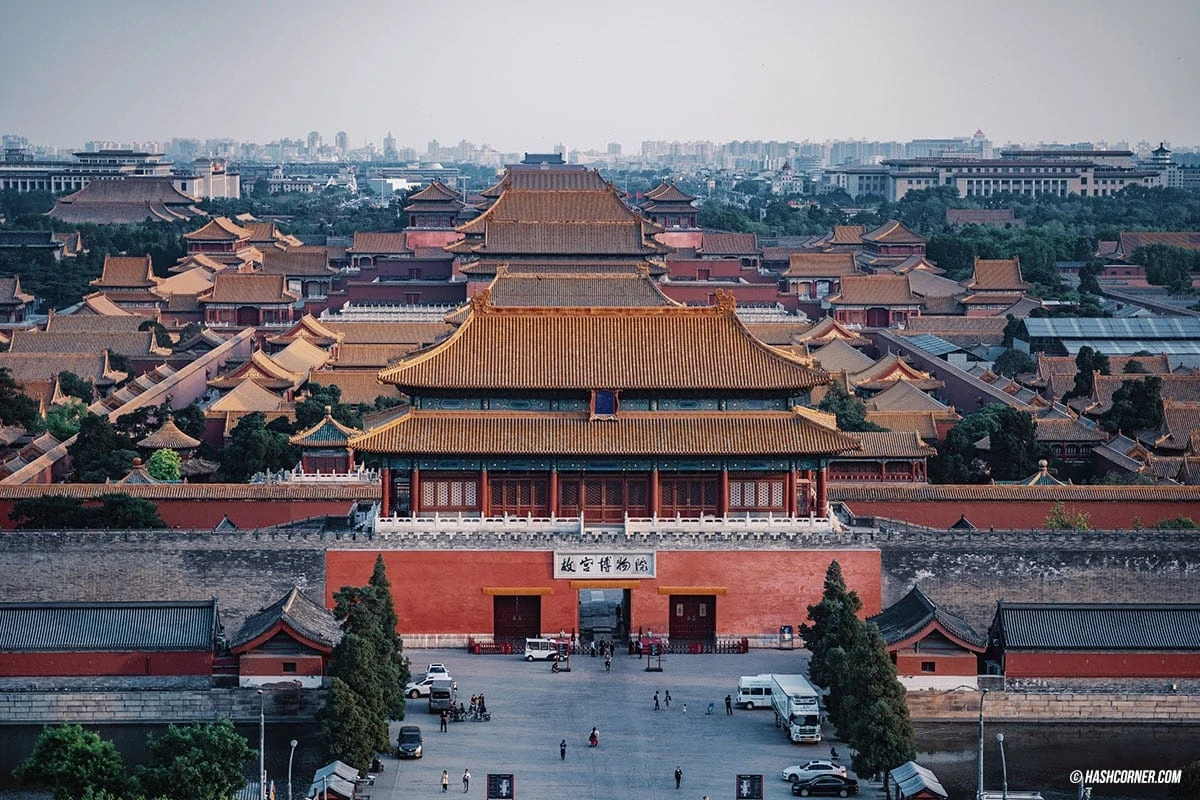
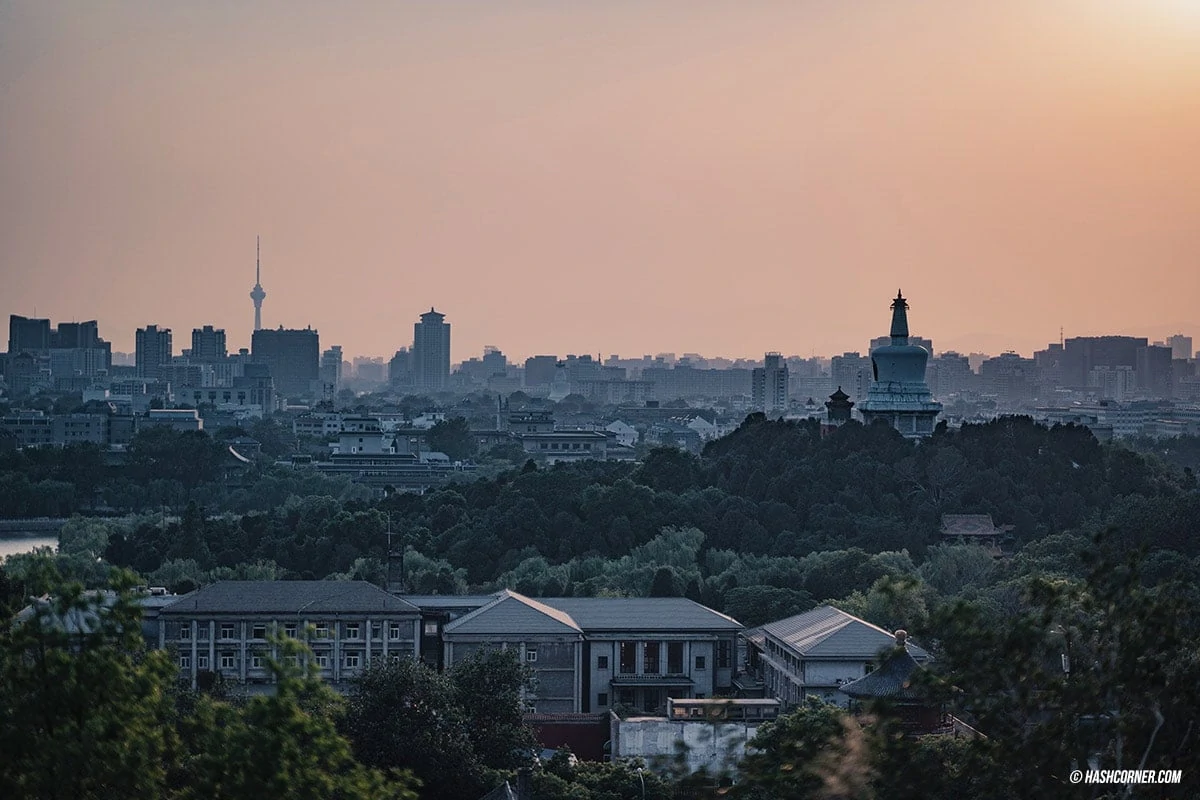
Wangfujing Pedestrian Street
Finishing at Jingshan Park, it was late evening, so I decided to go for a walk and shopping. The shopping area I headed to was Wangfujing Pedestrian Street, which claimed to be the number one shopping street in Beijing. As you can see, there are full of shopping malls, brand stores like Apple Stores, including popular brands from Inditex such as Zara, Pull & Bear, and Bershka. Moreover, there are also H&M, Adidas, Nike. The overall selling price of these stores is surprisingly cheaper than in my home country (Thailand). If you seriously want to shop, I suggest doing some research before going there.
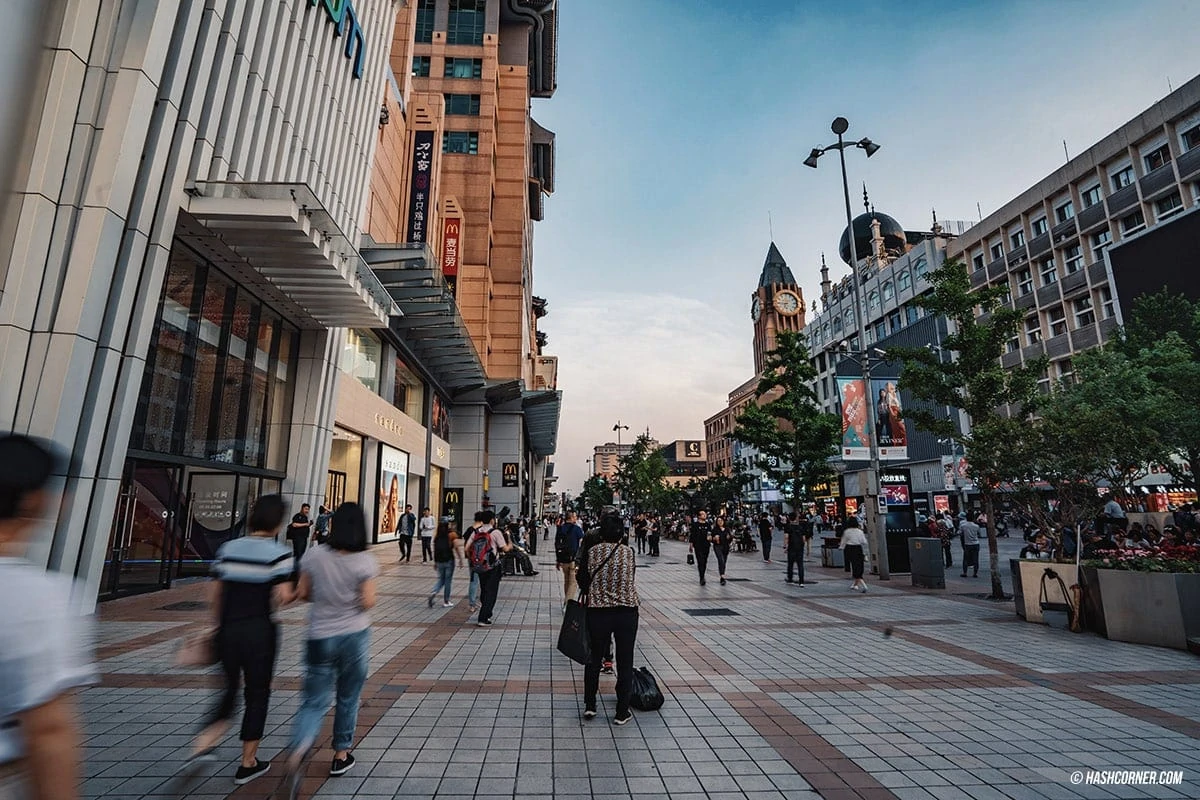
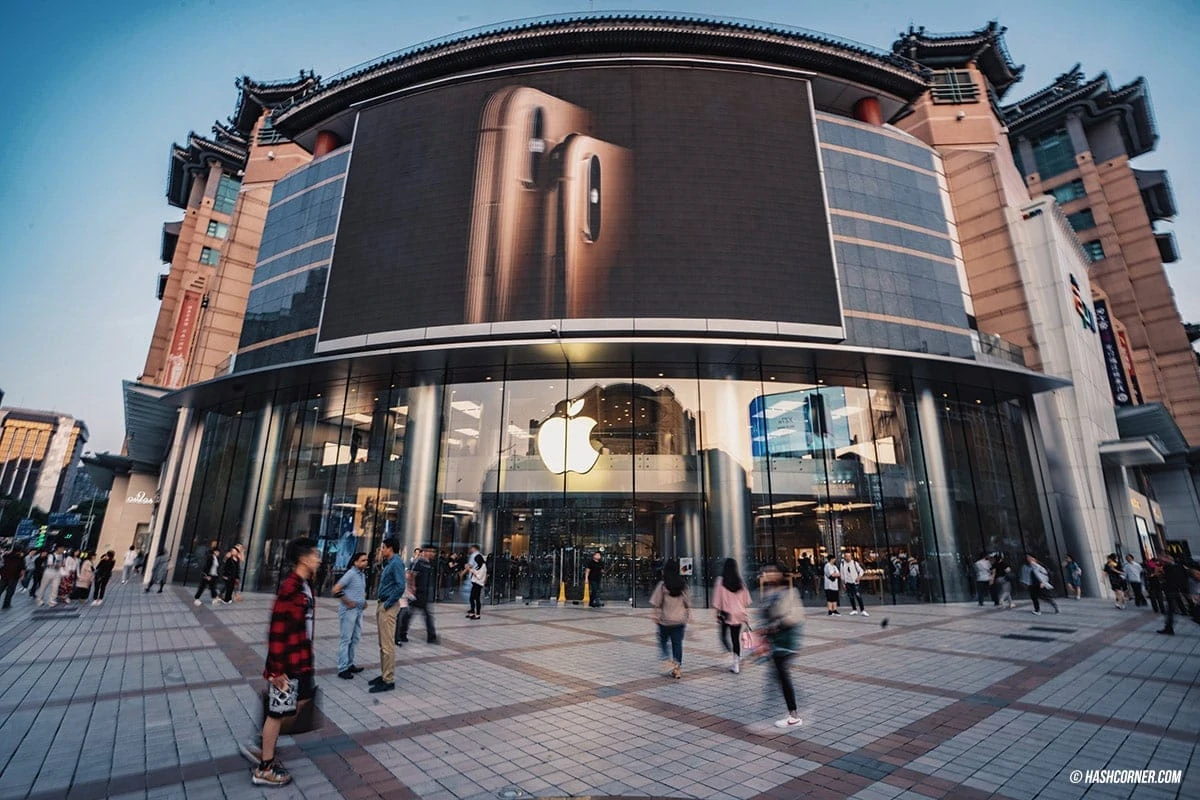
As for TAX Refund, based on my research I discovered that Shanghai and Beijing offer 11% TAX Refund for tourists only in large department stores. When I tried to ask at the store like Adidas or such. Each staff was completely unacquainted with this information. All in all, I still don’t get an answer in which store joined the TAX Refund. If any of you has experience in shopping there. Please tell me at the comment box, how do you notice which stores joined the TAX Refund?
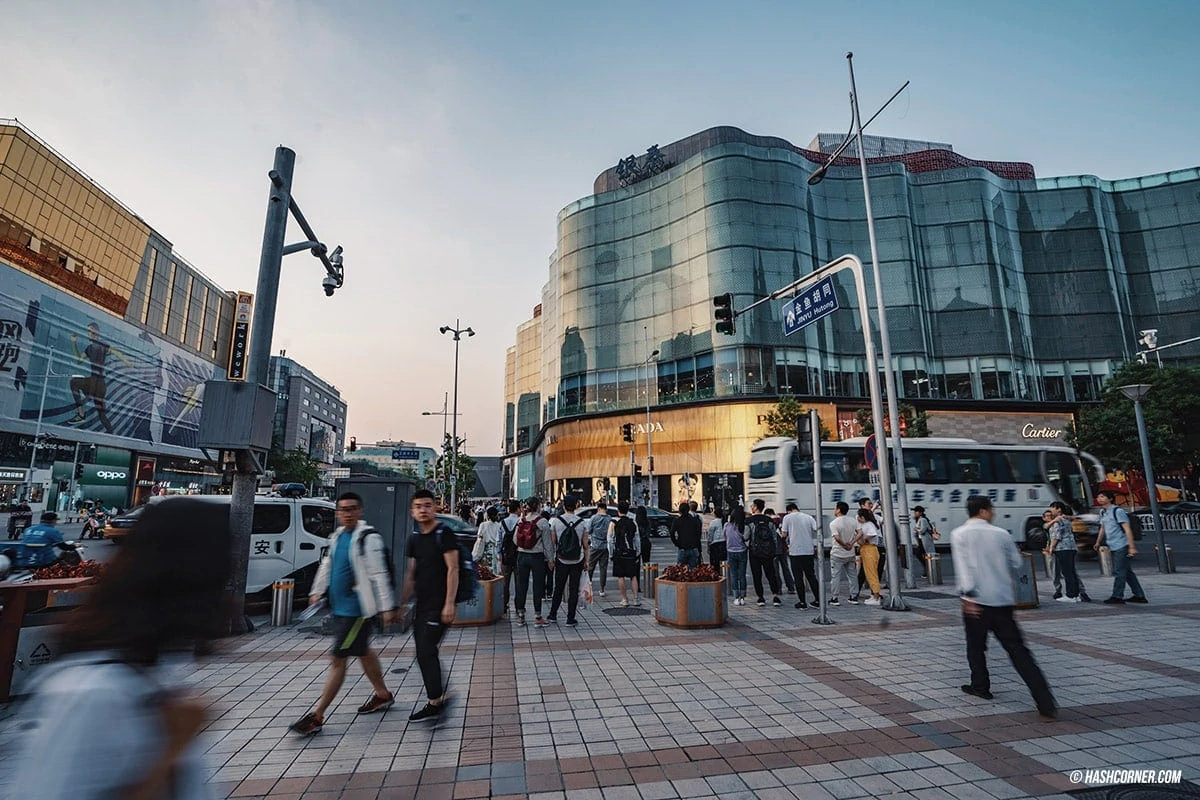
Another happening aside from shopping at Wangfujing Pedestrian Street, there is a good Beijing duck restaurant (I can’t recall the name). If you want to try it, you have to search up for a bit. As for me, I was enjoying shopping very much. I didn’t even lift the camera to capture anything. After getting back to the hotel, I was K.O. all of a sudden.
Beijing Day 2
Summer Palace
The first day in Beijing had passed with The Forbidden City. On the second day, I gave almost my full day visiting the Summer Palace. You may think ‘Hey, does it take that much of time?’, the answer is yes, Summer Palace is gigantic, divided into various zones and walking spots. It would be a good idea if you can keep exploring without rushing, indulging exquisite structures, and landscape. Apart from the Forbidden City, the Summer Palace is another Beijing tourist attraction that you shouldn’t be missed.
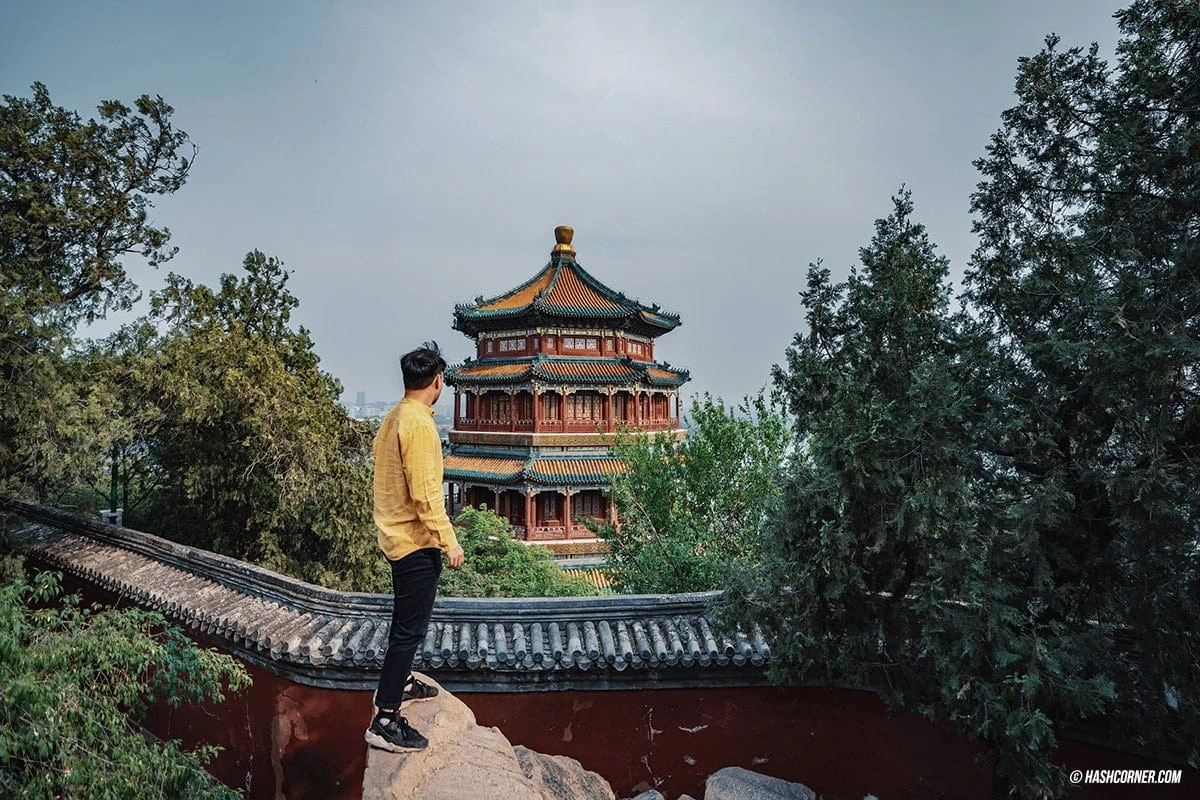
⚡️ Visiting the Summer Palace, I traveled by subway and stopped at Beigongmen Station to enter the north gate of the Summer Palace. The return trip, I exited the east gate instead because I preferred taking a bus to access the heart of the city. But if you like walking, you can walk another 850 meters to take the subway at Xiyan Station.
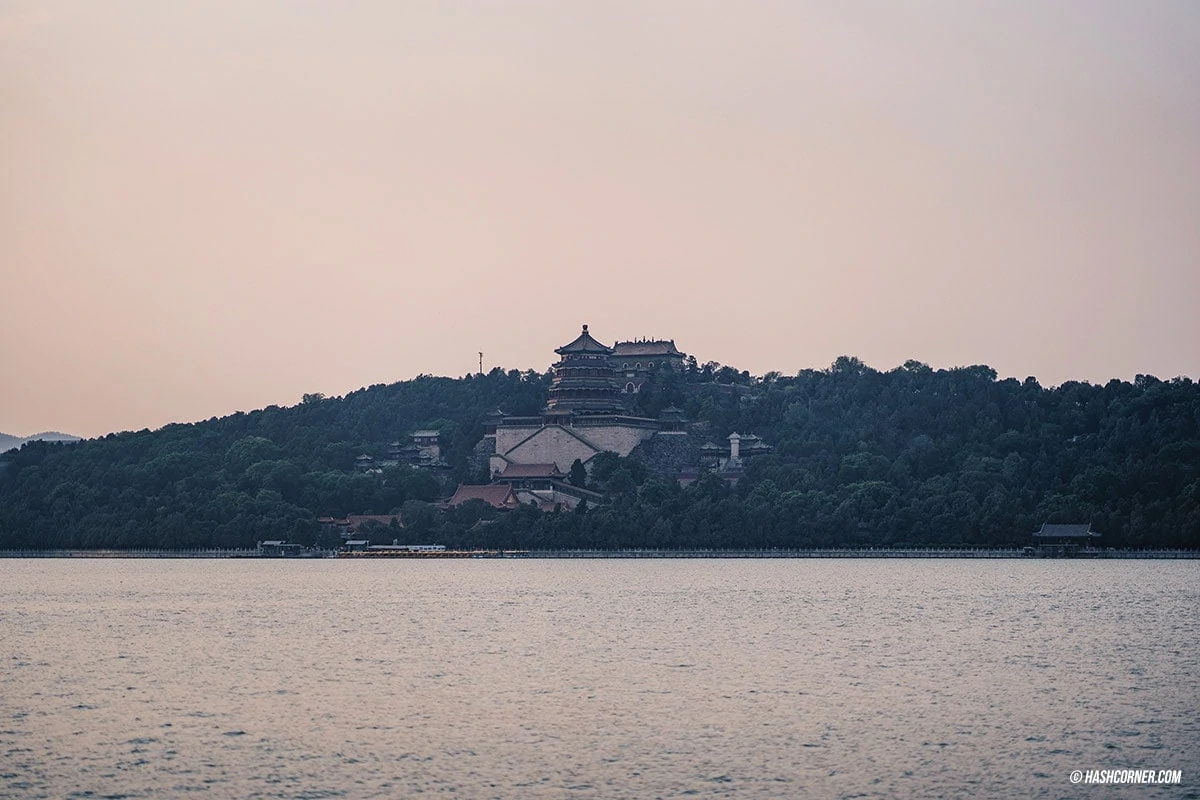
There are 2 types of entrance tickets which are; 1) 30 RMB ticket excluded the admission to the paid attractions inside of the Summer Palace compound. 2) 60 RMB ticket, a combo included everything. I personally preferred the normal purchase of 30 RMB, then buy admission tickets to each attraction separately. This is due to the great size of the palace, plus, you have to spend a lot of time walking. You may not be able to enter all landmarks because of insufficient time. For me, only 2 places were accessible; Suzhou Market Street and the Tower of Buddhist Incense. After that, the time was up! Miserably failed LOL // Okay, enough of the intro. Let’s get started! I will express in each attraction specifically. But frankly, overall is amazing!
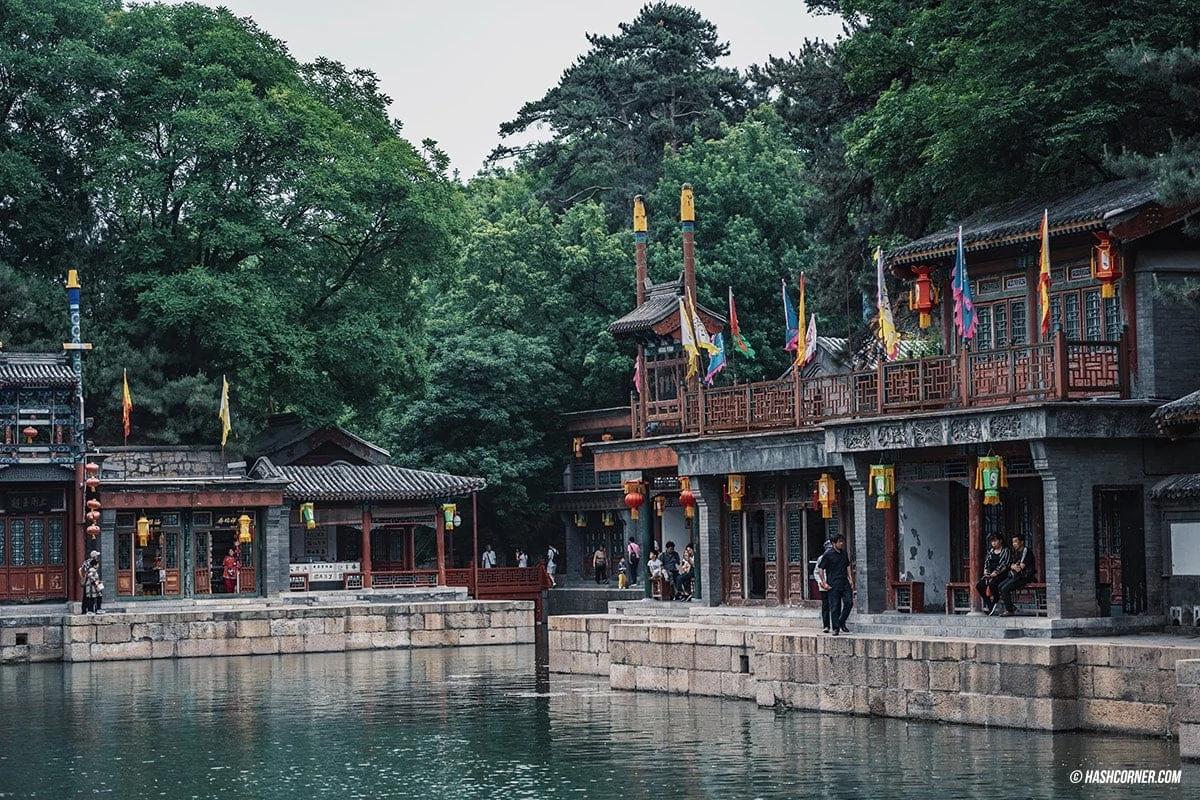
Before traveling, I’ll briefly show the location background first. The Summer Palace is also known as ‘Yi He Yuan’. It has more than 800 years of history since the Jin Dynasty. The origins started with the beautiful natural landscape of this area, which is located not far from Beijing. From then on, the palace was becoming increasingly significant as the royal family and the aristocracy came to relax. Until 1750, the Emperor Qianlong constructed this area even greater by excavating more lakes (Kunming Lake) and brought the left soil to fill the Wengshan Hill (means Ten-Thousand-Year-Old Mountain / also known as the Longevity Hill), the location of palaces and gardens.
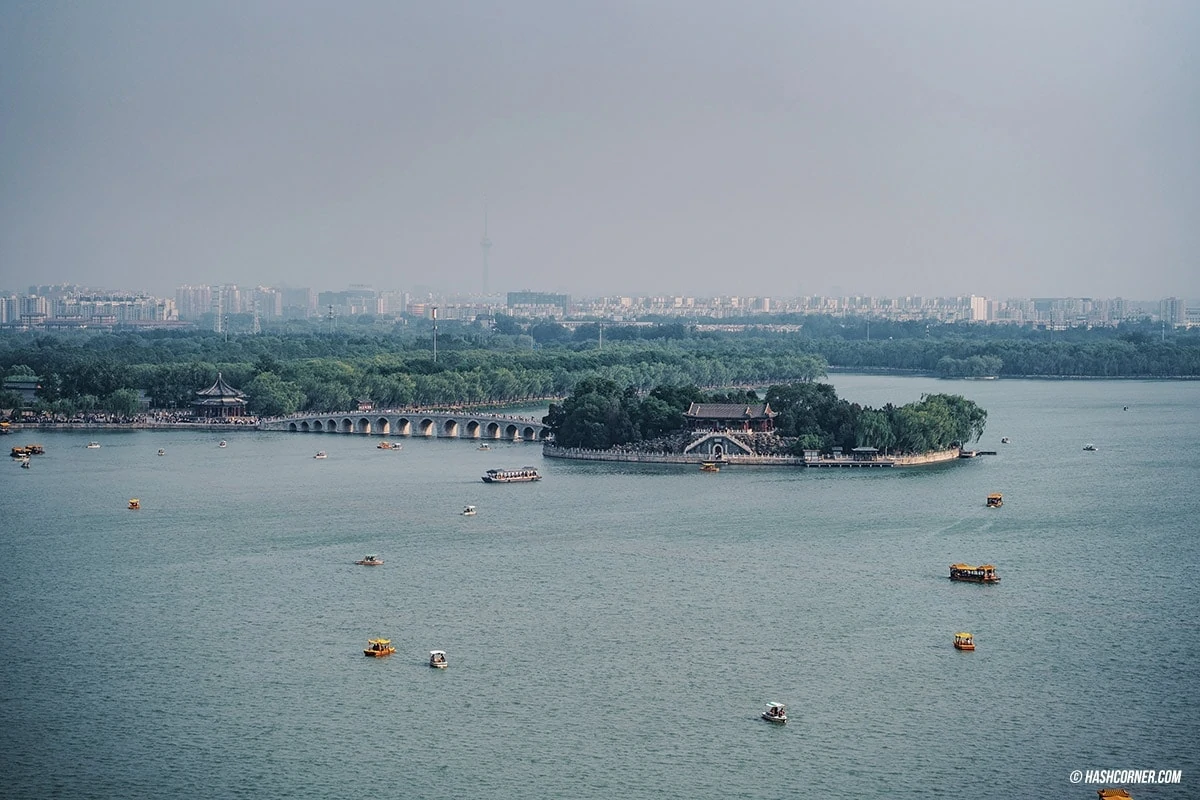
Long afterward, During the period of Western nations invading China, Anglo-French military alliance burned down the palace in 1860, then the Empress Dowager was restored in 1866, but being destroyed again by troops from the imperialist power in 1900. Later on, the palace was recovered again. After that last 3 years, the Summer Palace had ended the long history from the Xinhai Revolution and the fall of the Qing Dynasty. Conclusively, China announced the area to become a public park. UNESCO was registered as a World Heritage Site later. As you may see the beautiful outlook but the Summer Palace is another essential landmark in China that has gone through many historical events as well.
⭐️ Suzhou Market Street — 10 RMB Admission Ticket
After getting through the north gate, the first attraction I recommend you stopping by is Suzhou Market Street, which modeled on the trading street in Suzhou. The place provides an attractive vista with Chinese market settings, it may not look antique, but the photo upshot is pretty cool and unique.
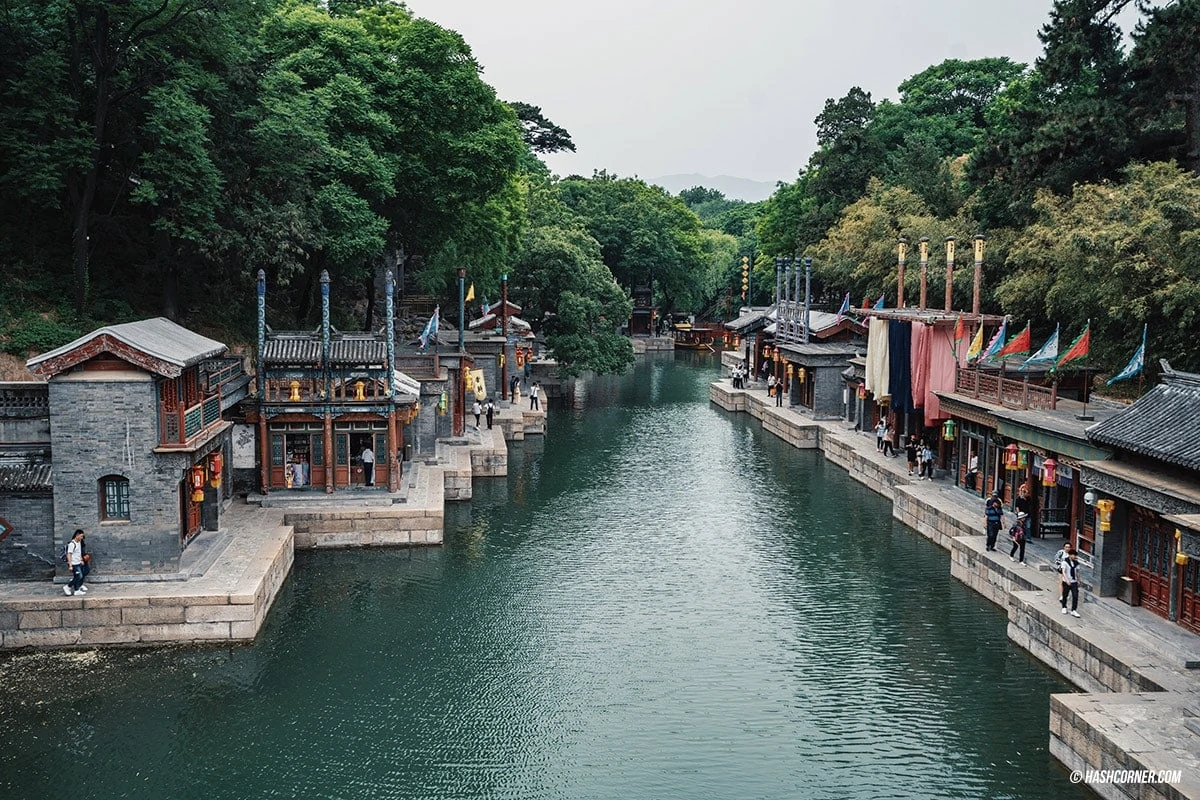
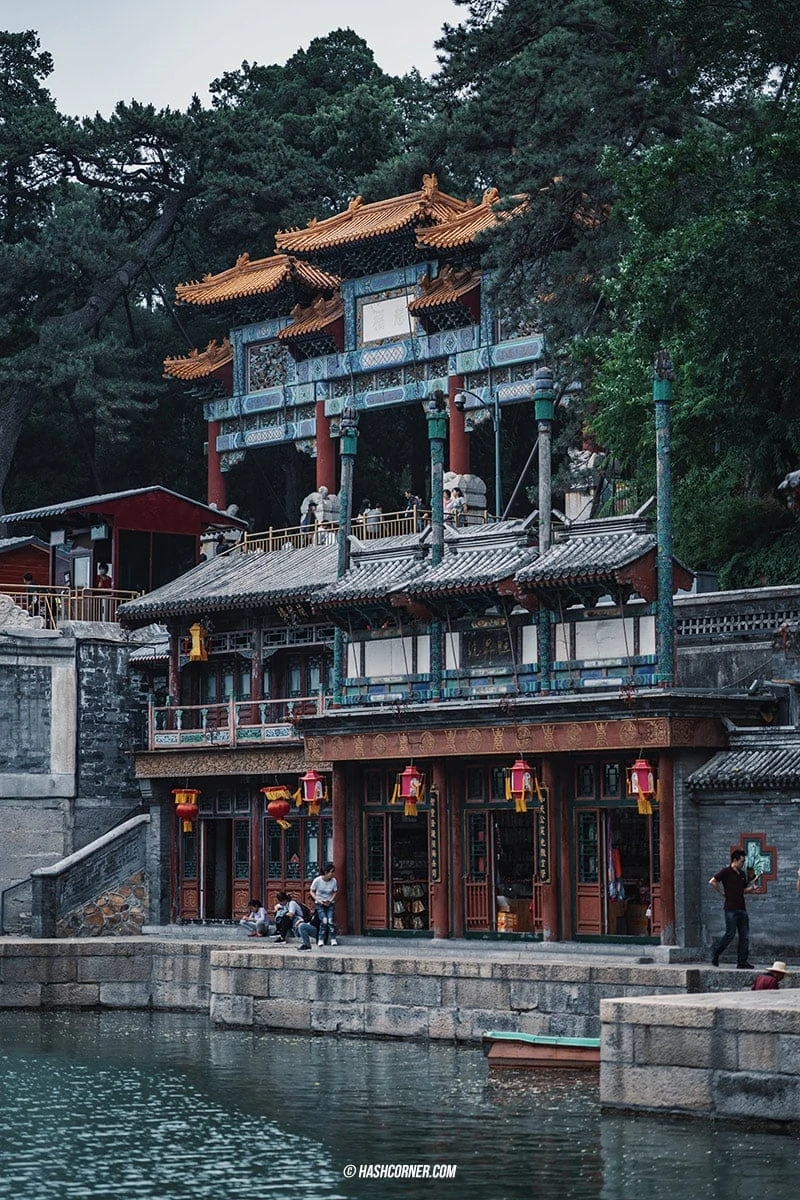
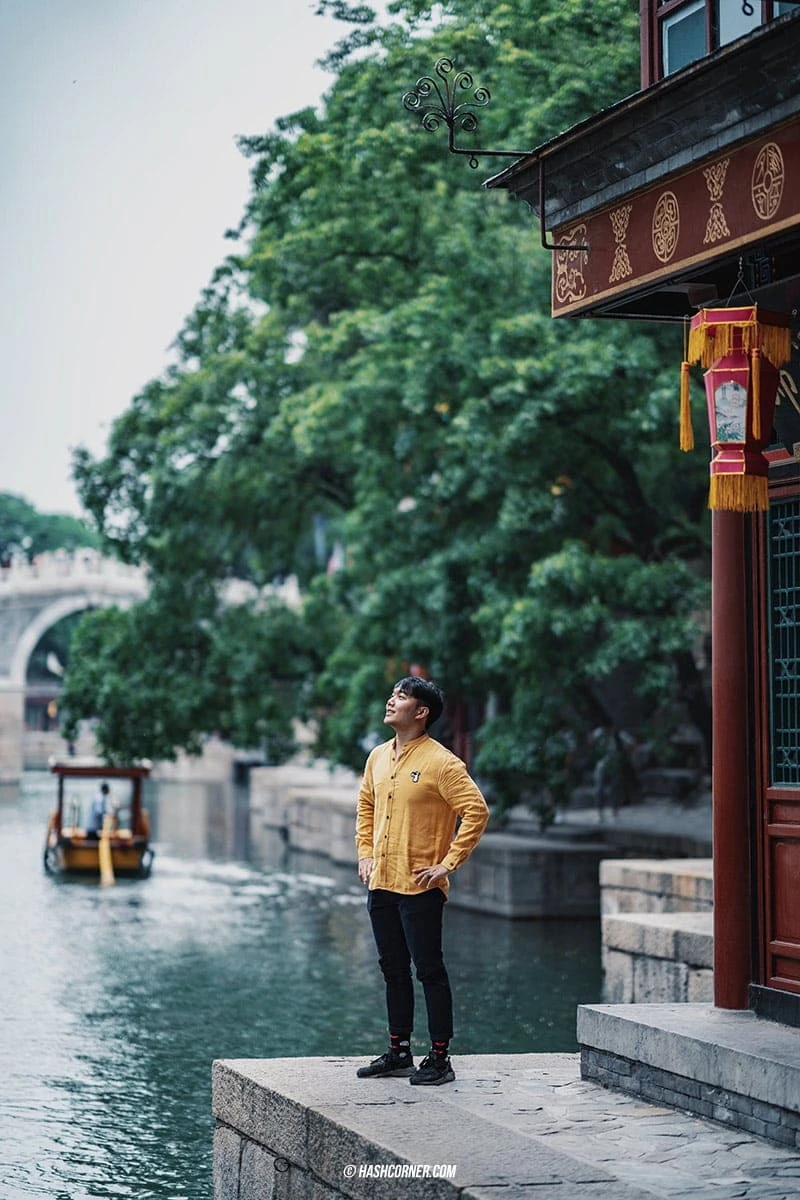
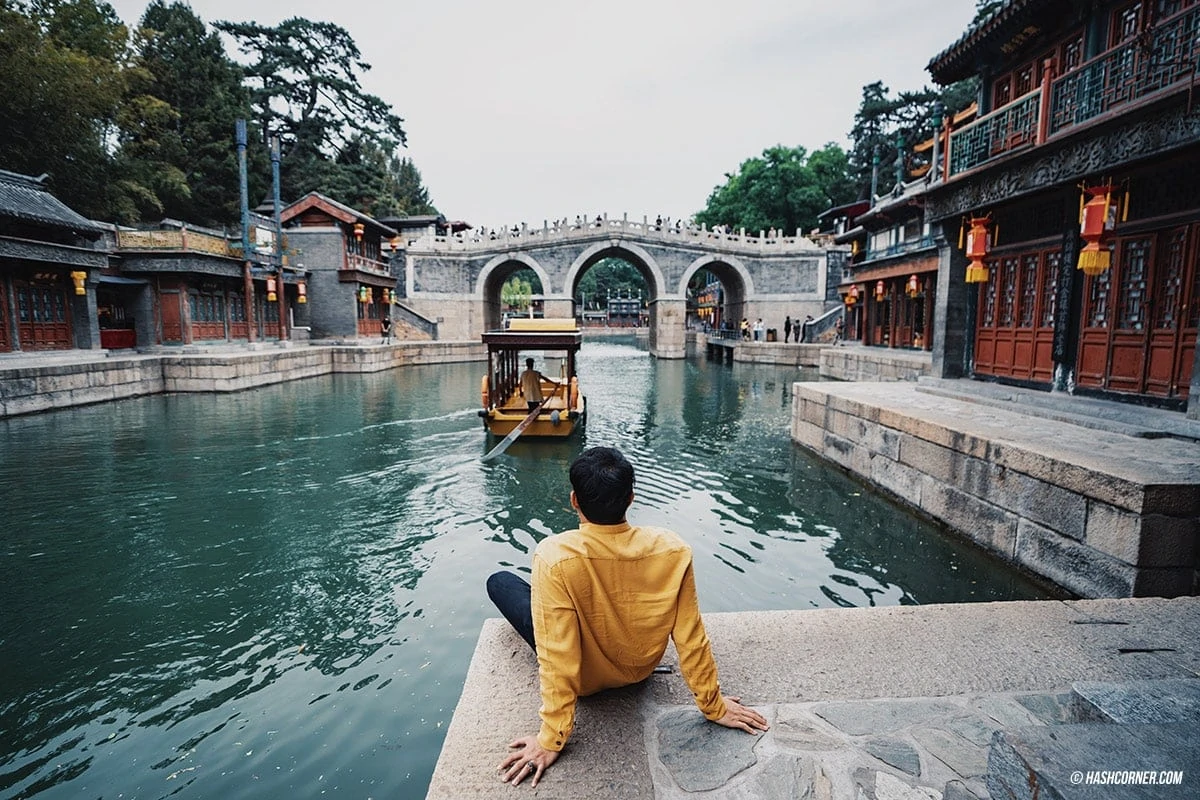
You may be curious as to why there are Suzhou Market Street in the Summer Palace? It is a story that Qianlong Emperor traveled a long way to Suzhou until he met a beautiful nun and deeply fascinated by her attractiveness, he wanted to take her back to Beijing. But it was contrary the tradition to make a nun be a concubine. The Emperor, then, built a new temple for her in Beijing to easily keeping in touch. But over time, the nun missed her motherland. So the Emperor rebuilt Suzhou Market Street near the palace, then brought the nun to surprise as though returning to her hometown. WOW!
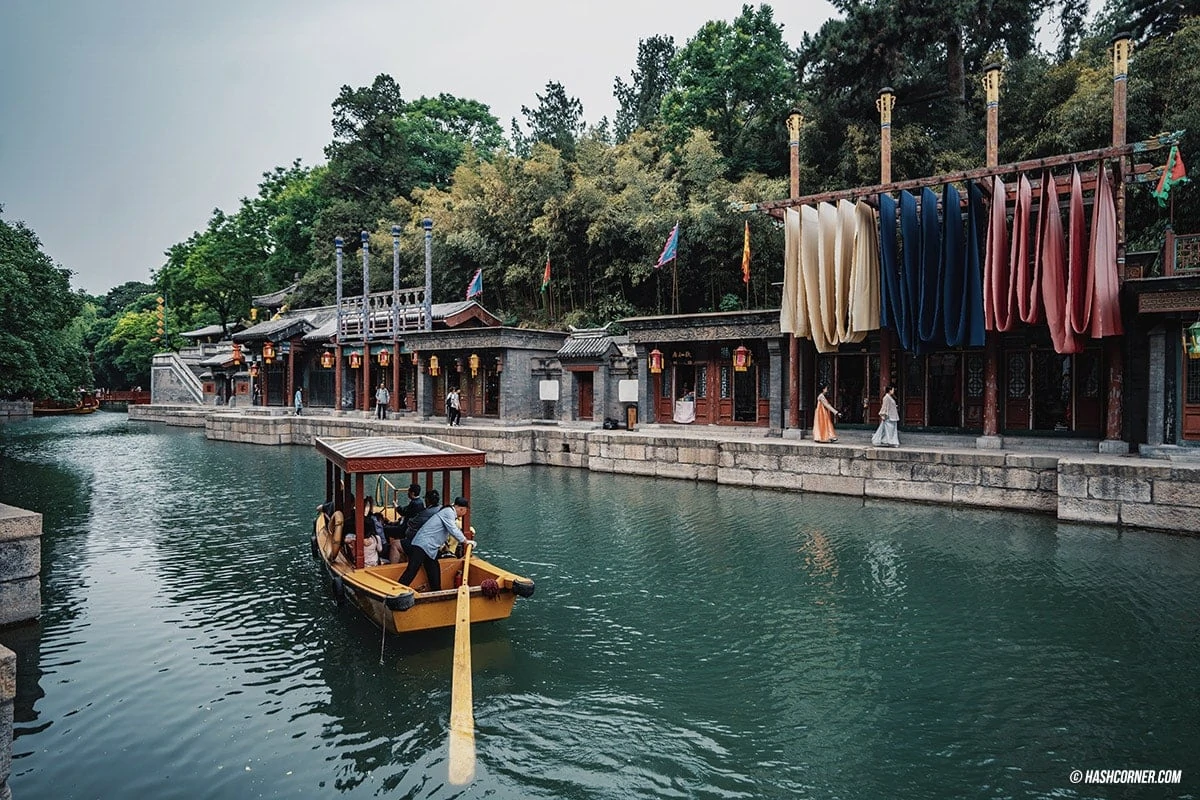
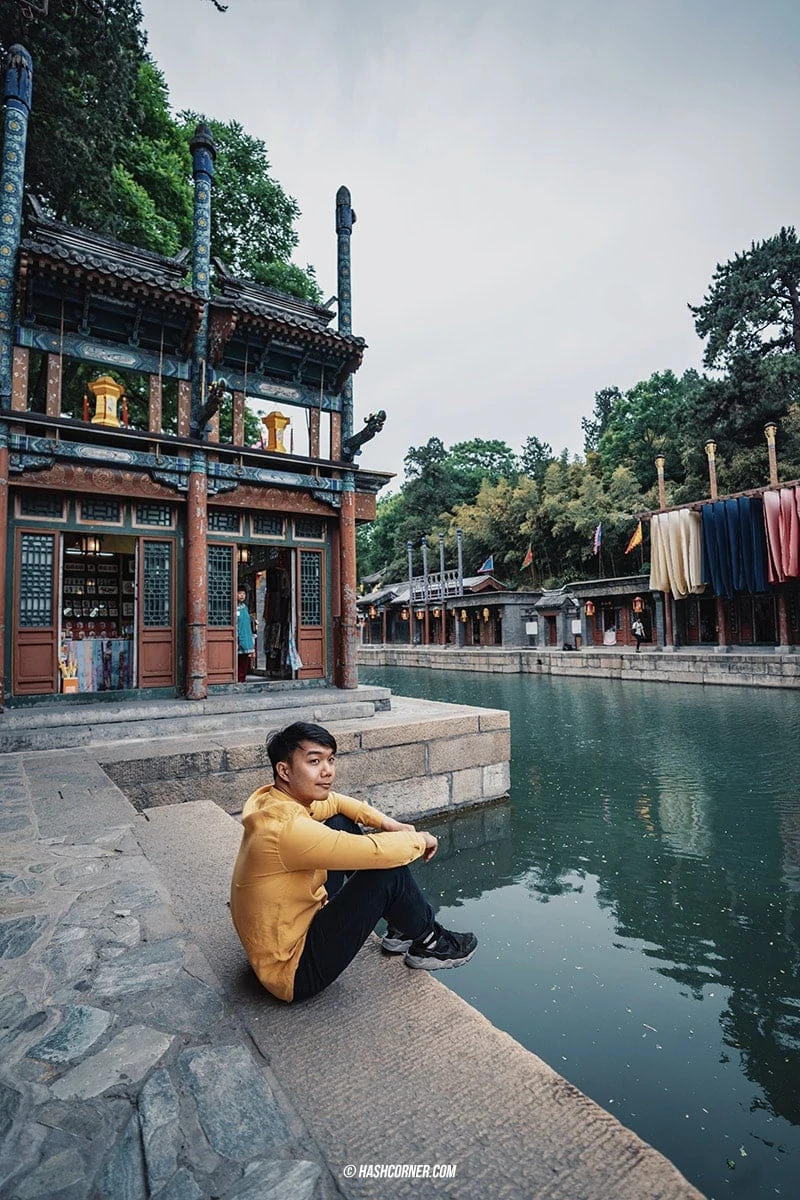
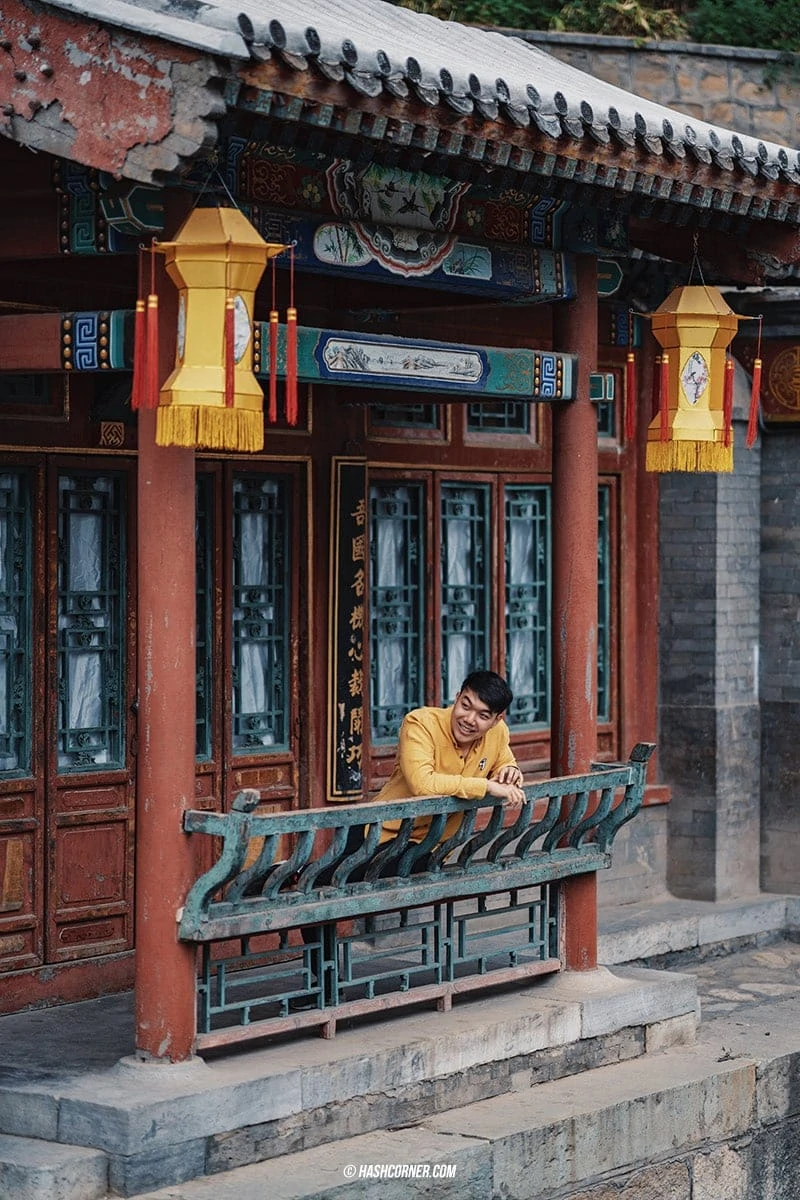
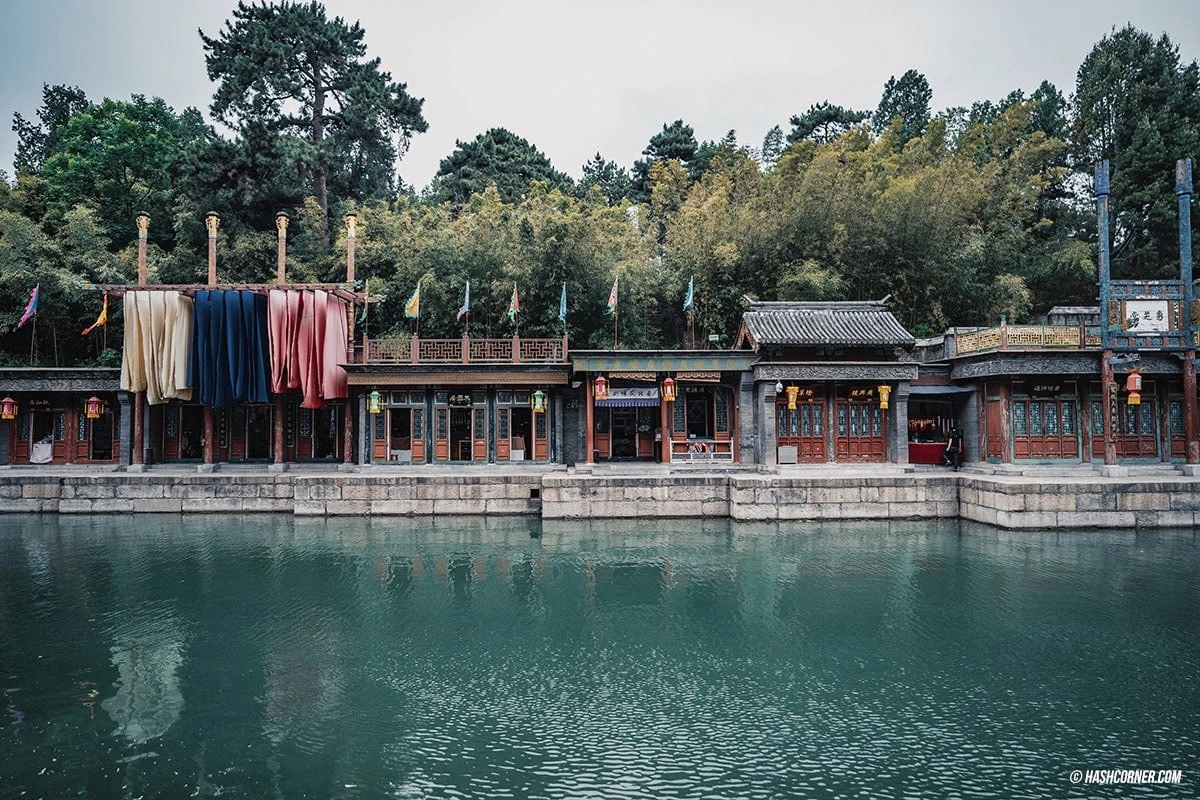
⭐️Four Great Regions
The Four Great Regions in the Summer Palace are the largest Tibetan Buddhist sites in Beijing. The perfect combination of this Tibetan temple is a mix of both Tibetan style buildings, located in the north part, and Han style buildings in the south part. If you have a chance to get there, just turn around and examine the structure’s different appearances. You also have to cross this Tibetan temple to continue on the next attraction, the Tower of Buddhist Incense.
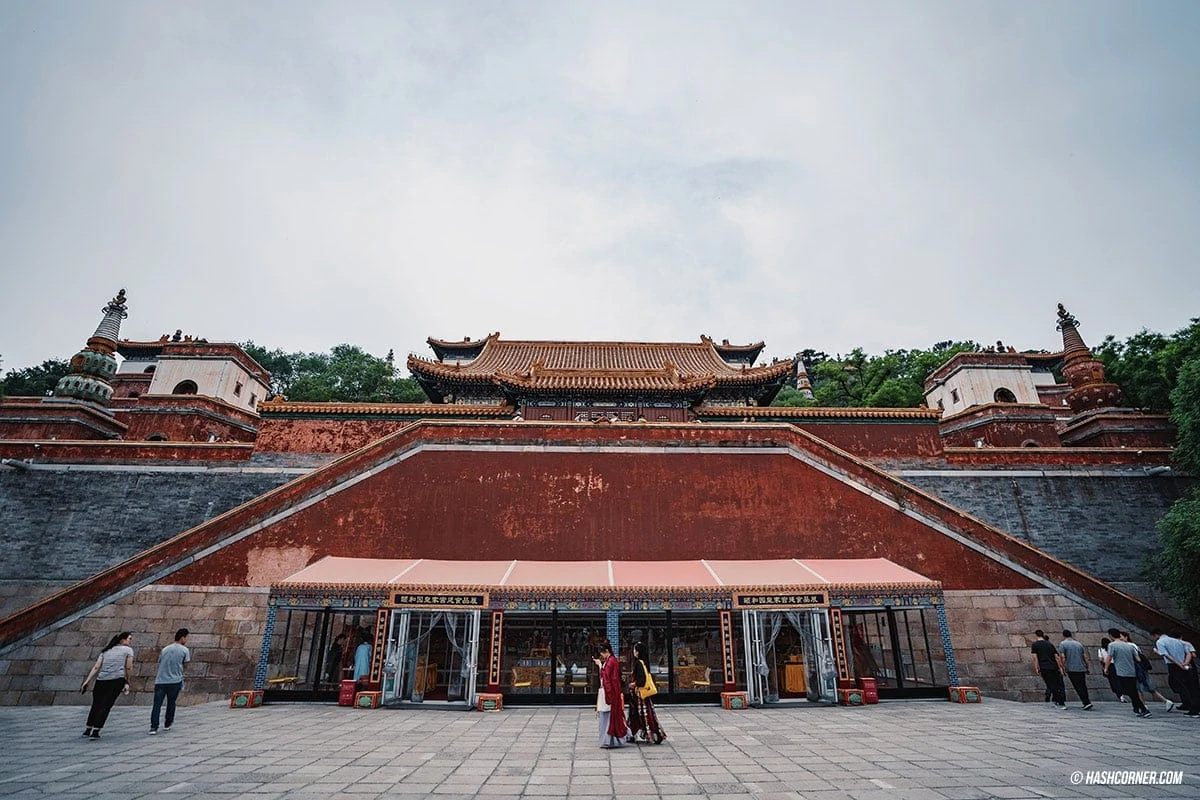
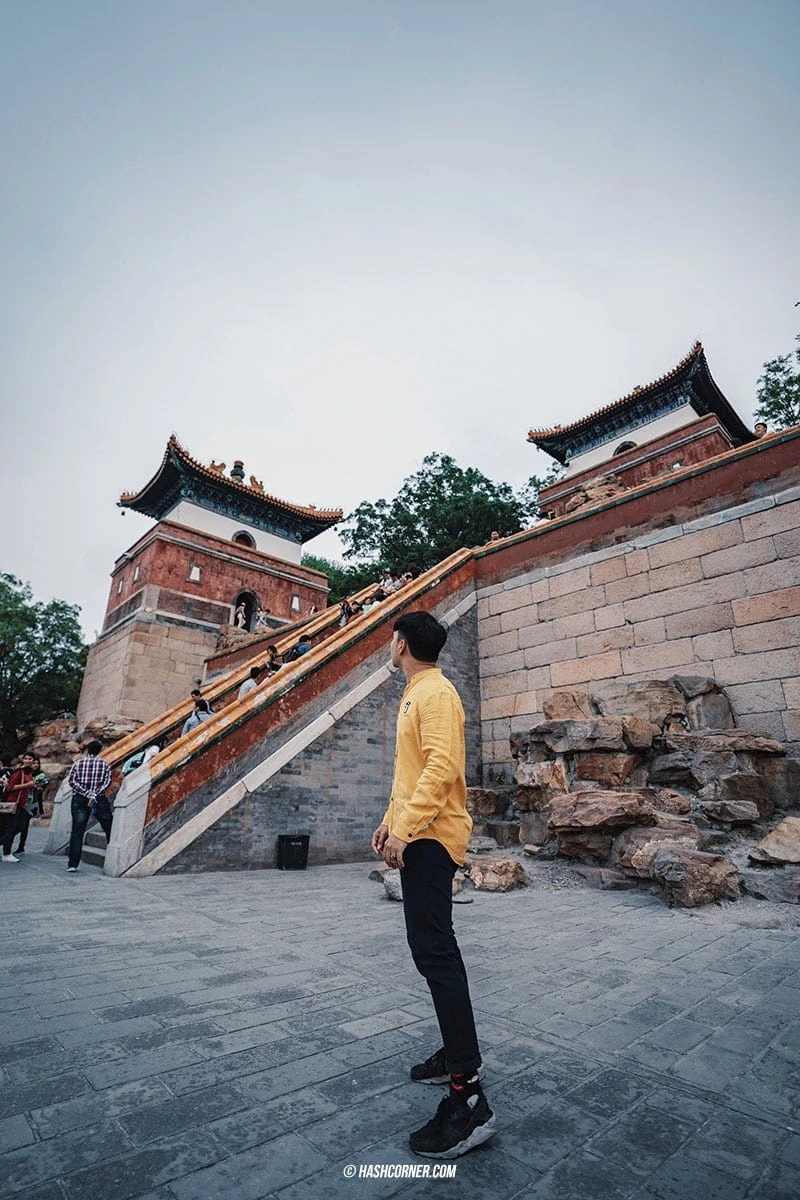
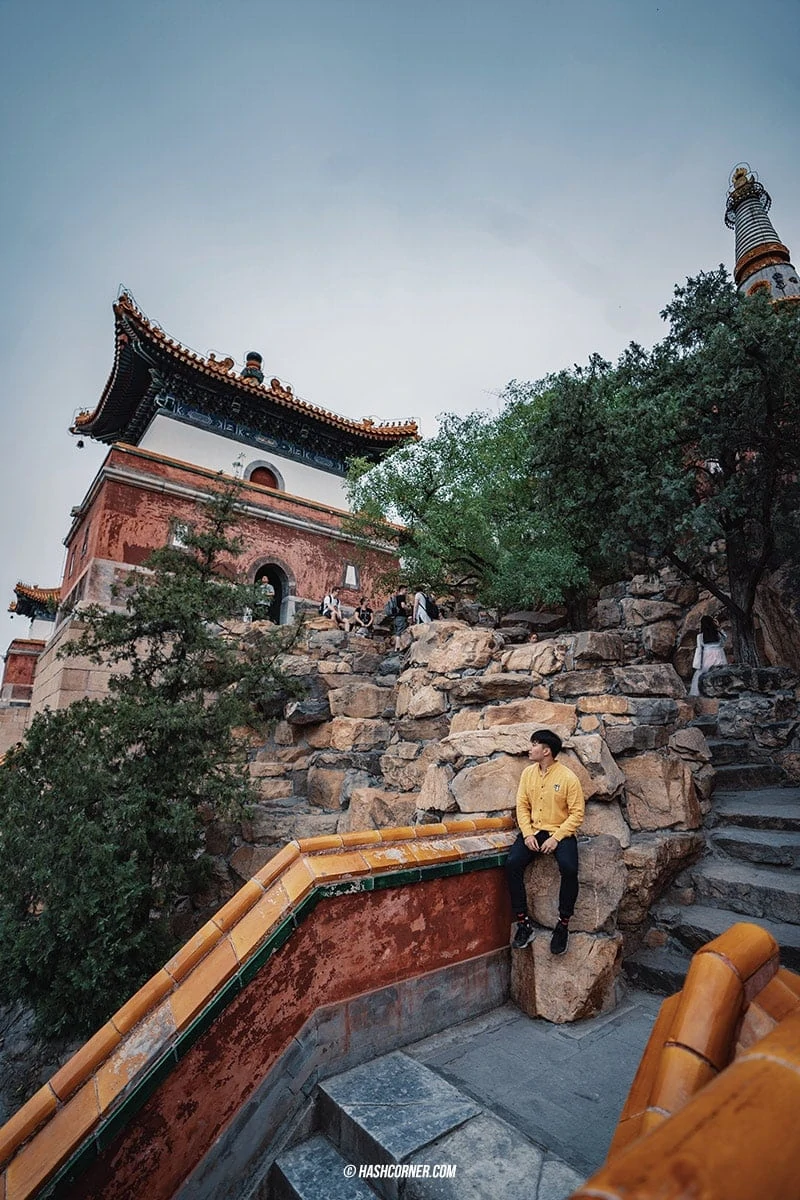
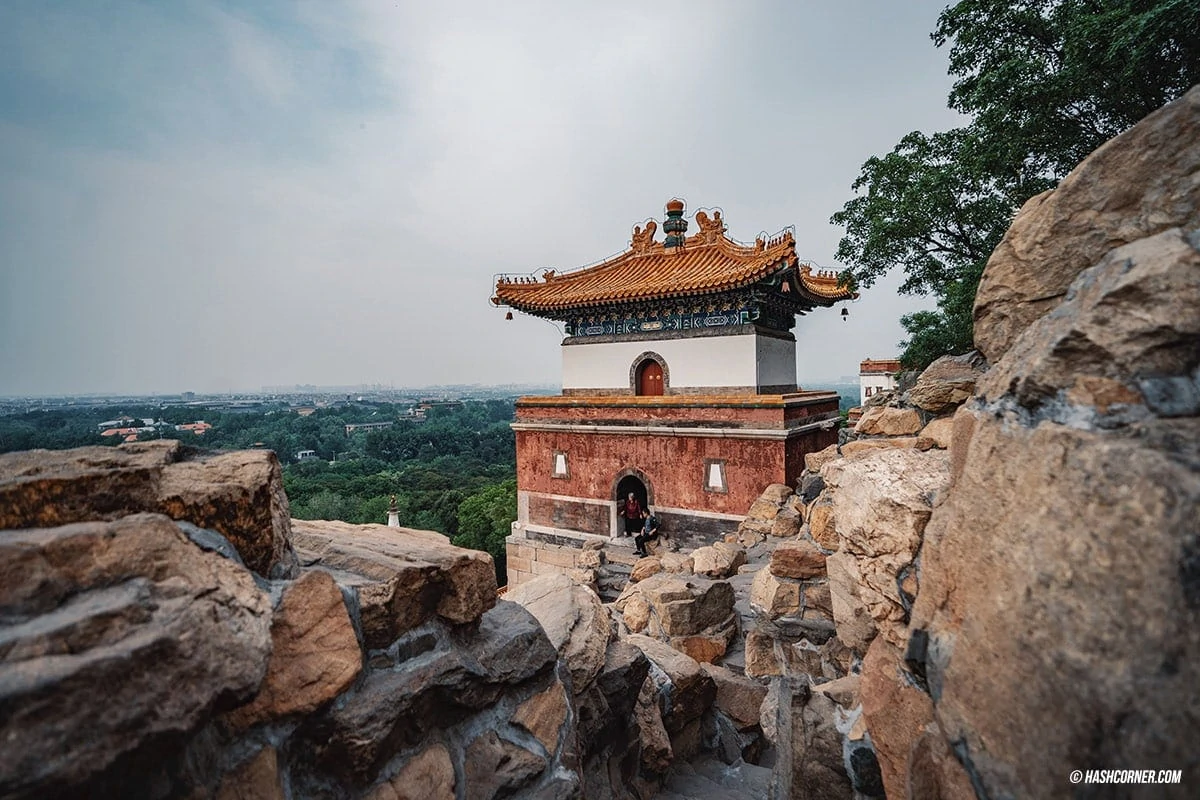
⭐️Tower of Buddhist Incense + The Hall of Dispelling Clouds — 10 RMB Admission Ticket
Tower of Buddhist Incense (Foxiangge) can consider as the symbolic structure in the Summer Palace, it was built at the center of the Wengshan Hill and can be seen clearly from every direction from inside of the Summer Palace compound. The Tower of Buddhist Incense interior houses a statue of the thousand-handed Kwan-yin Buddha stands on the 999 lotus flower petals. This Kwan-yin gilded statue is almost 450 years old.
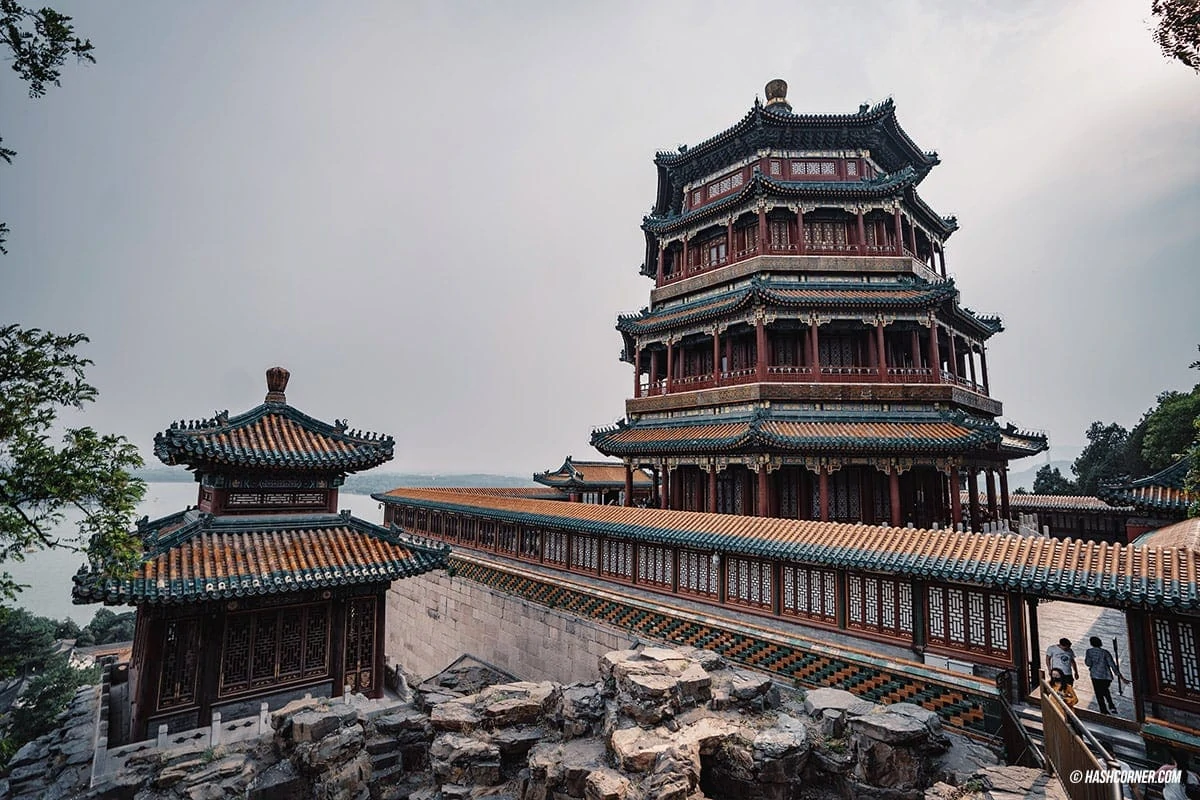
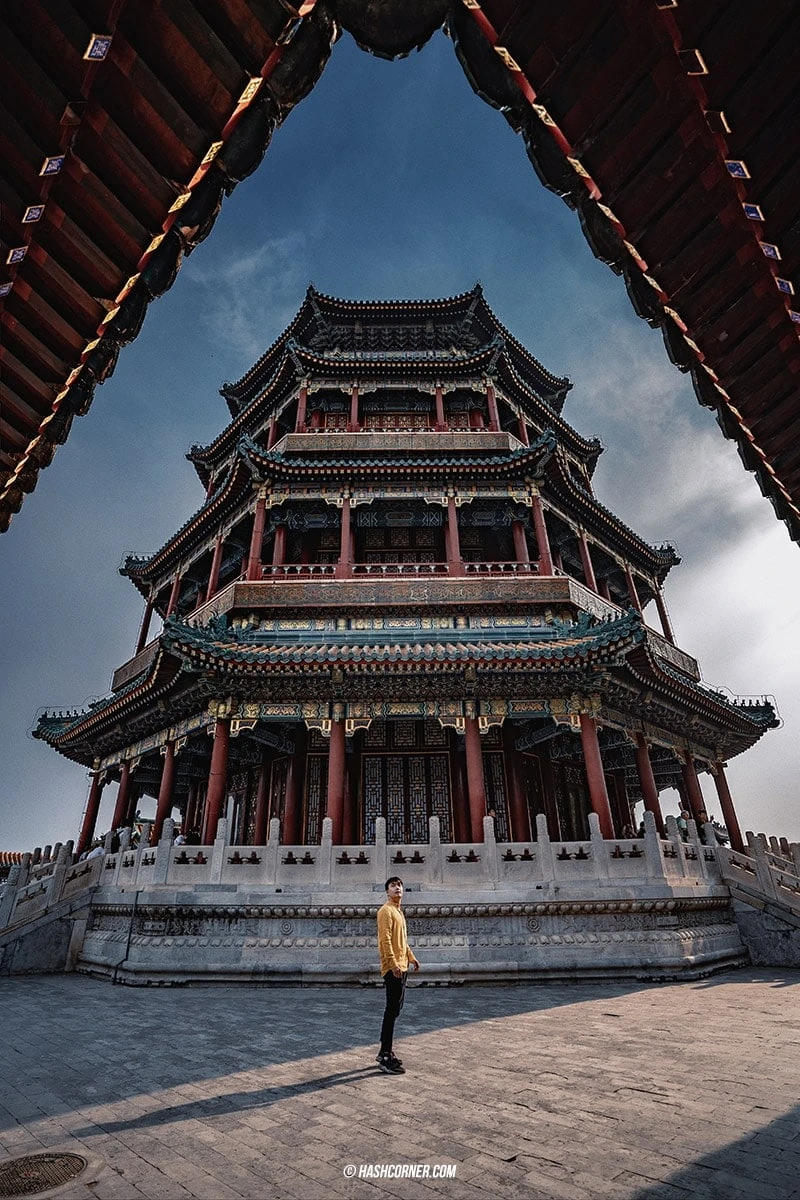
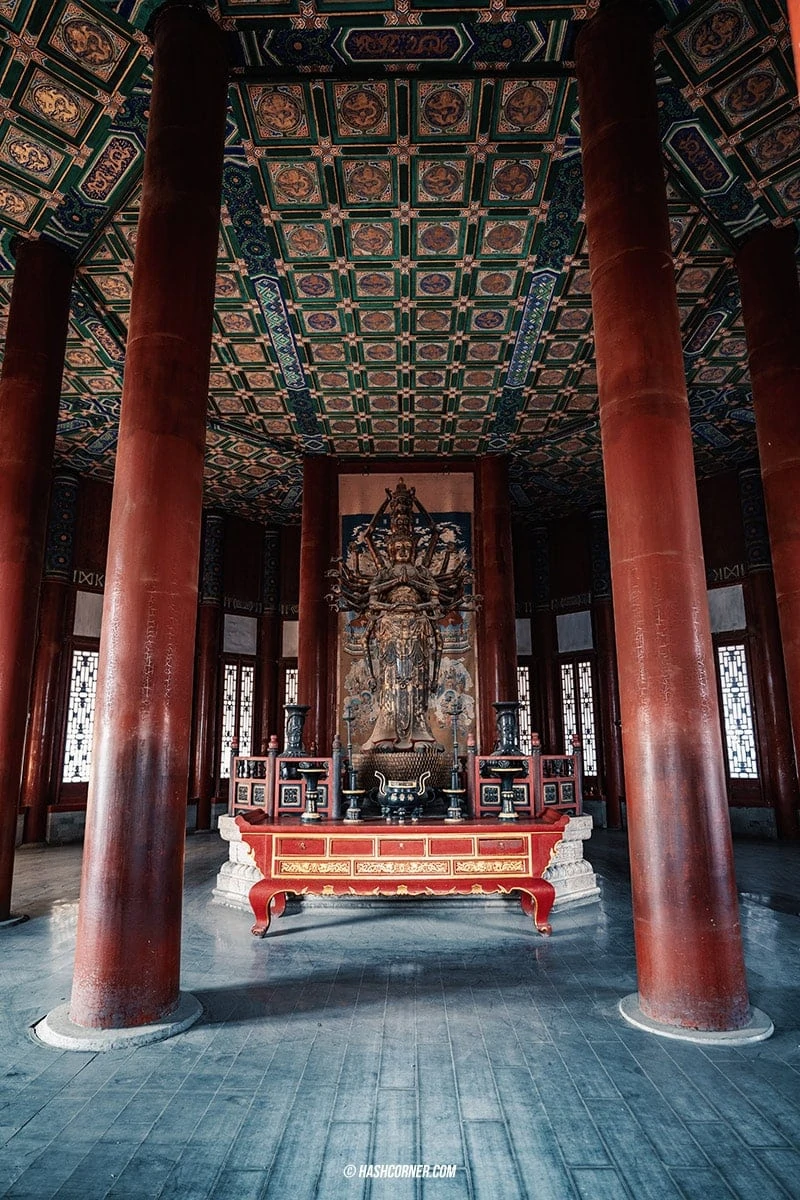
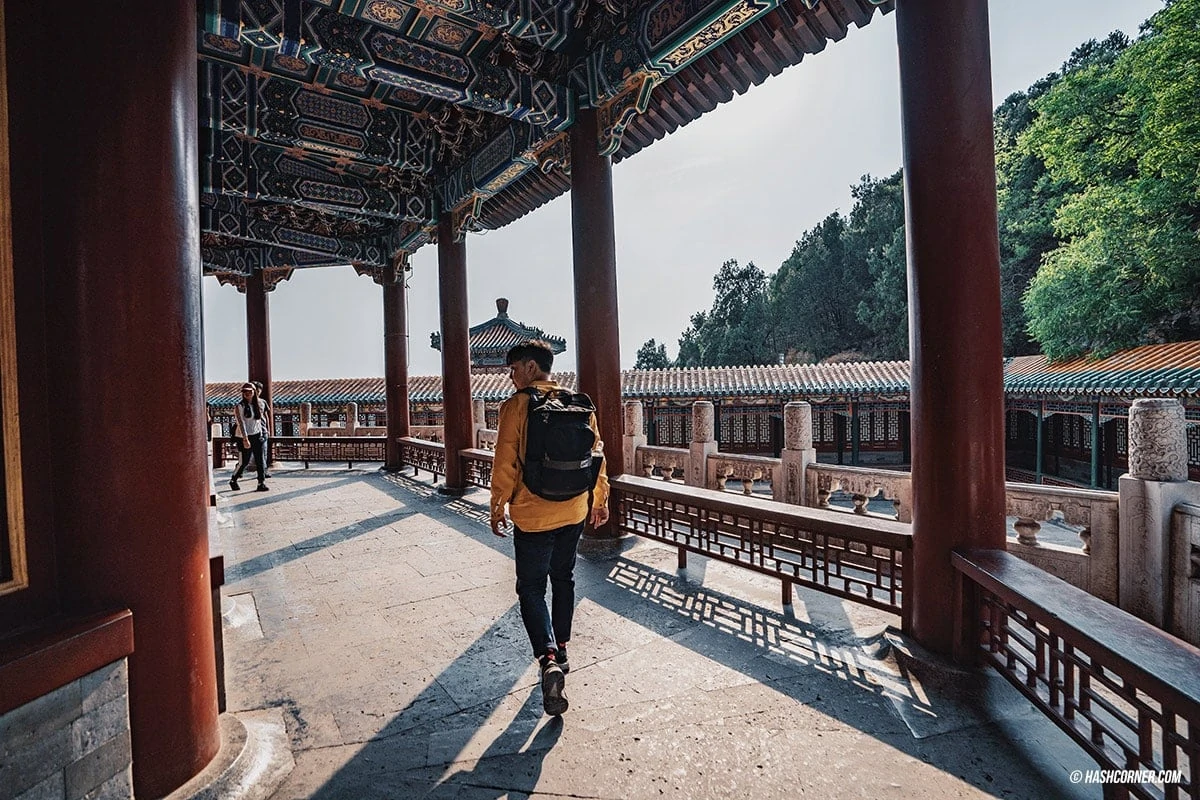
The most outstanding view of the Summer Palace is at the Foxiangge front gate. You can remotely see the waterscape of Kunming Lake. The panoramic image is incredible, I was truly impressive from what I saw! Therefore, if you come here but refuse to enter the Tower of Buddhist Incense because of the admission fee, you’re screwup big time!
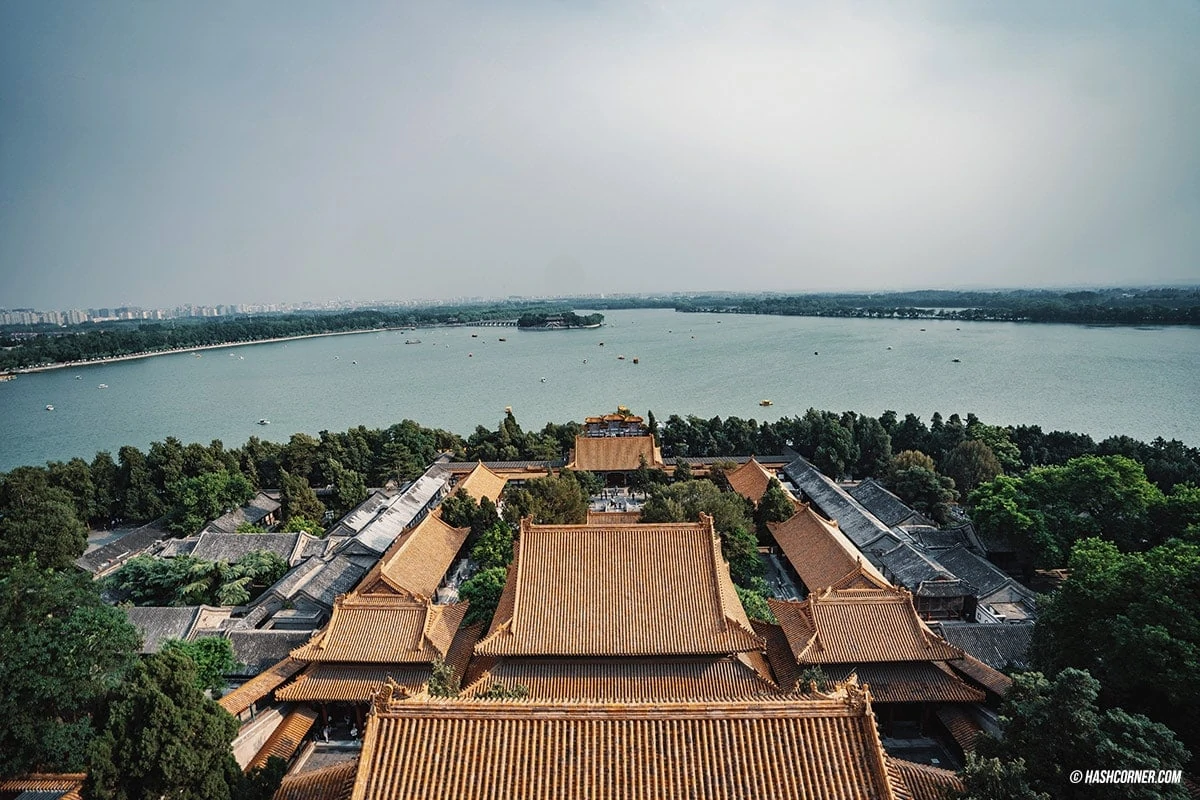
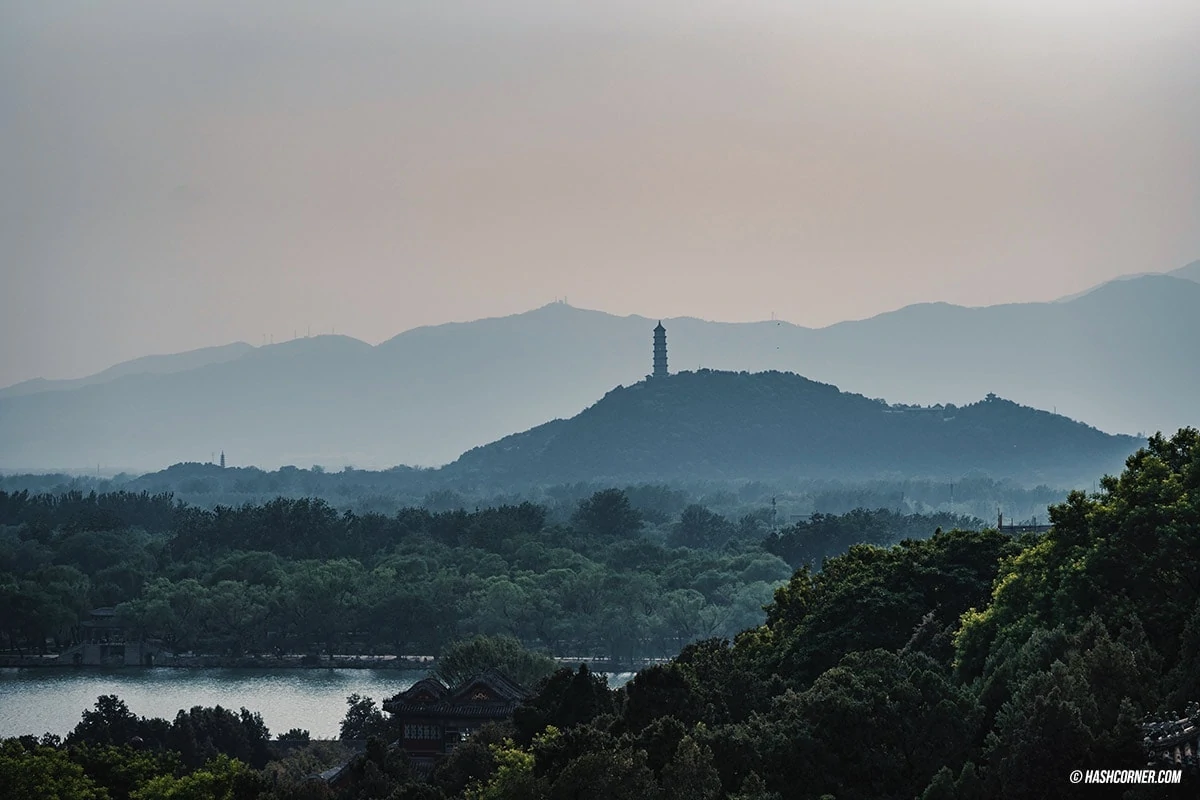
After admiring a nature landscape until fully satisfied, let’s walk down the stairs to the Tower of Buddhist Incense base. Here, you’ll meet The Hall of Dispelling Clouds (Paiyundian) which means ‘the blown cloud’ to describe the building design that looks exquisite as the heavenly palace. This building complex was served as the Empress Dowager Cixi’s bedchamber. Suddenly, when she moved in, she was ill for unknown reasons. She believed the cause of her illness may involve with the hall was so close to the Sanctuary (the Kwan-yin Statue enshrined in the Tower of Buddhist Incense), later, she moved to live in another part and only accepted congratulations and tributes on her birthday in the Hall of Dispelling Clouds.
⭐️Kunming Lake
The last place to visit the Summer Palace is Kunming Lake where you can stroll around and stop by a popular photo spot proposing the great setting of the palace with the majestic Foxiangge. Surprisingly, the famed vast lake of Kunming is human-induced with only 1.5 meters of water depth.
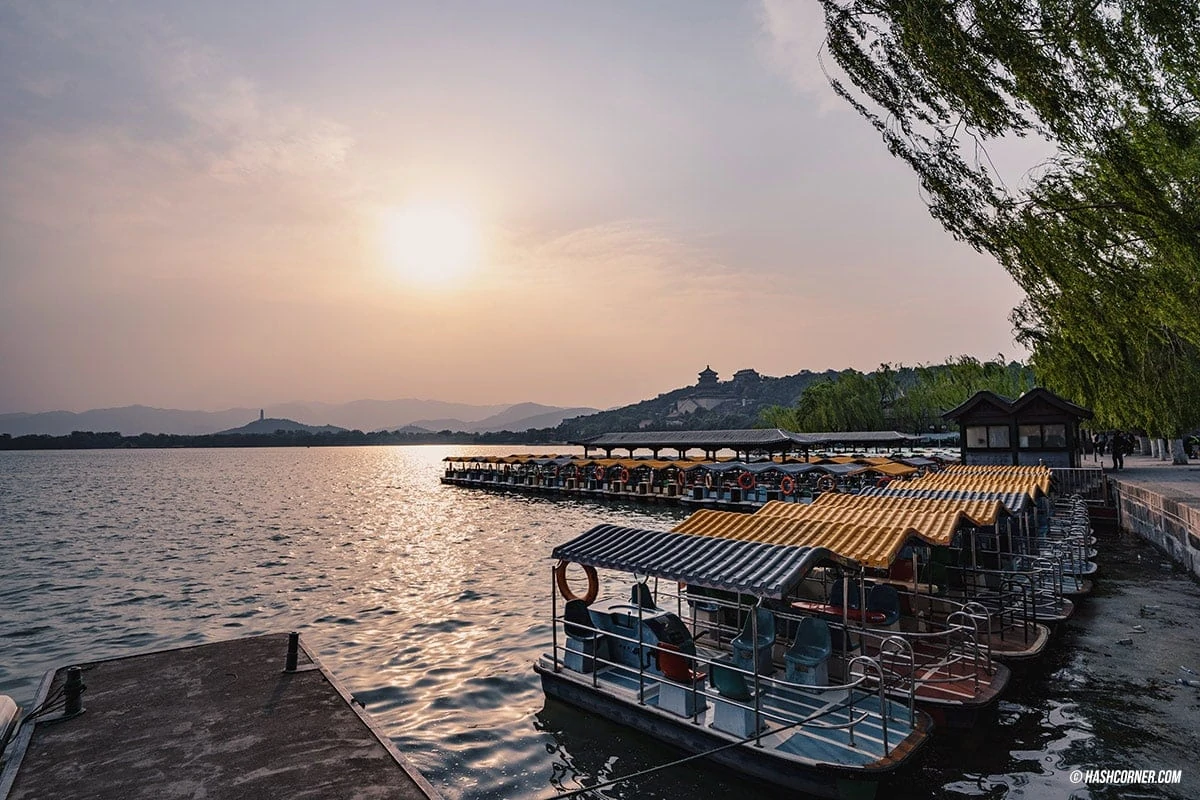
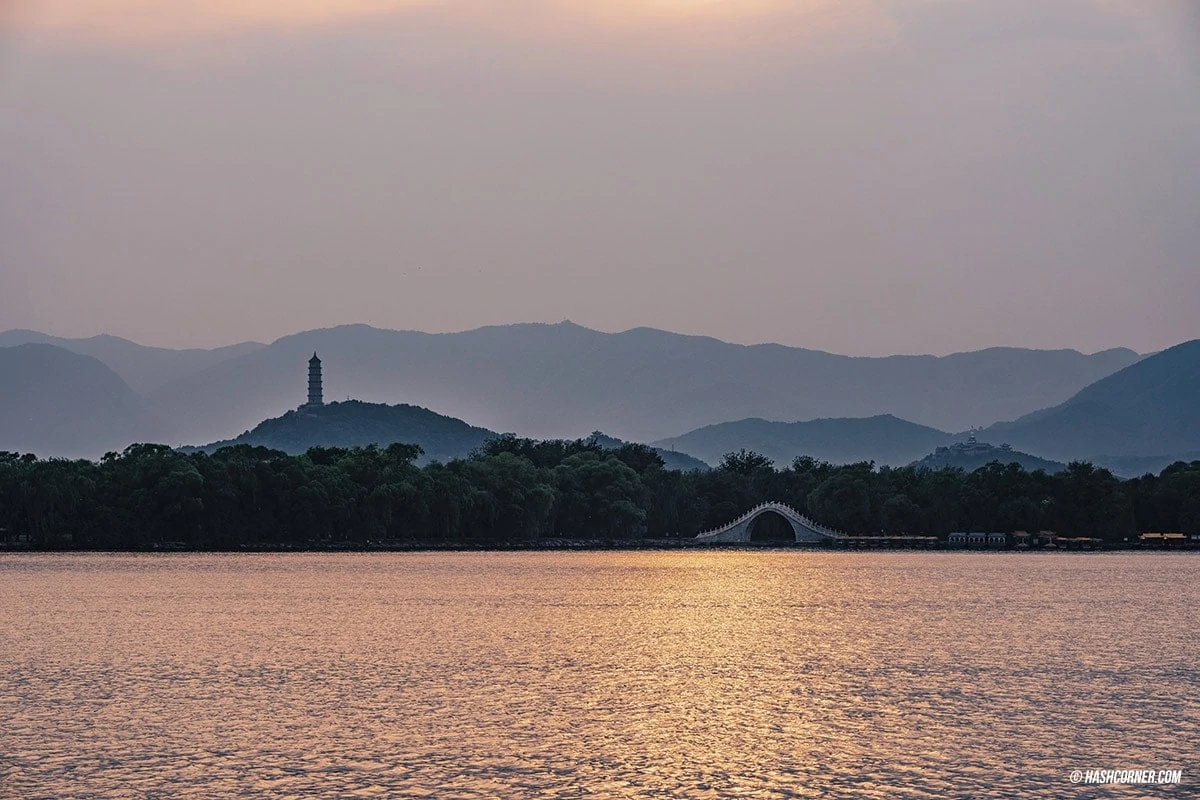
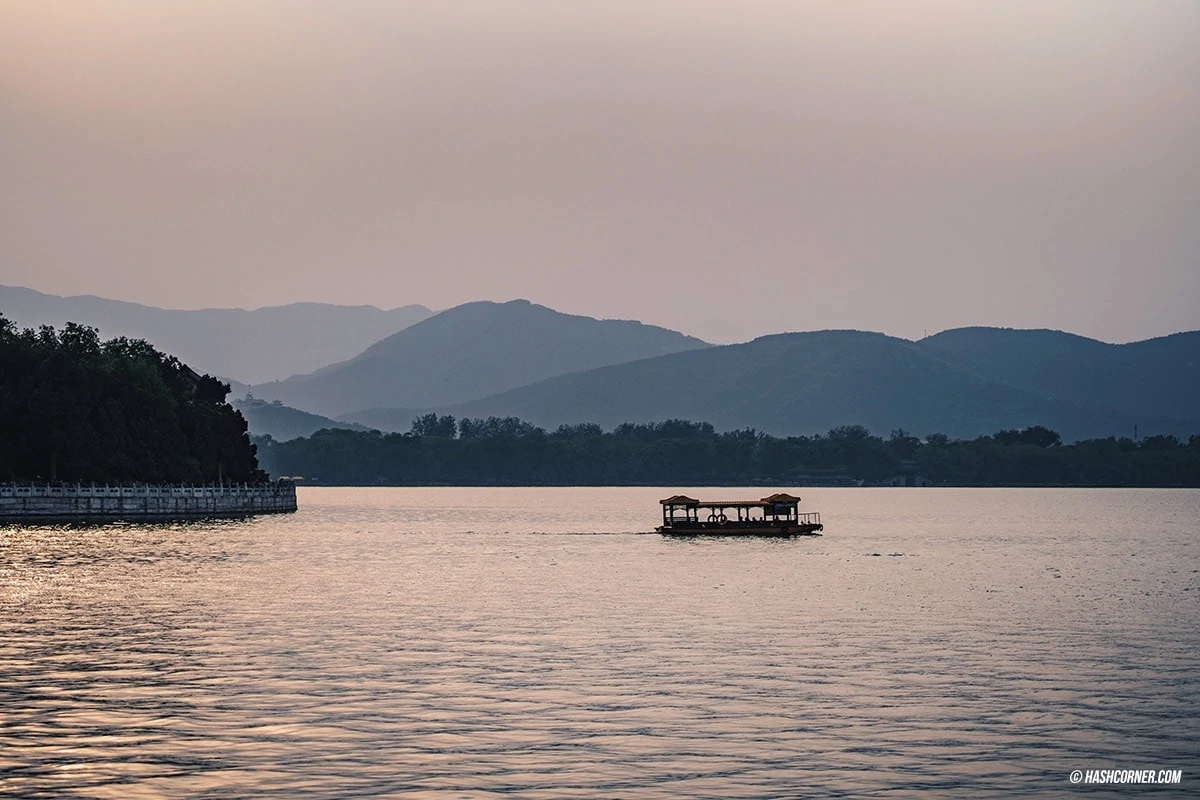
I recommend walking to a small island settled opposite the palace. When taking the linked causeway to the island, you’ll pass the bronze bull sculpture, pavilion, marble bridge, and also indulging the enhancement landscape of the Summer Palace along the way. When I visited the Summer Palace, it took almost a full day to travel. It was quite good timing back then because while I kept rambling, I saw the picturesque sunset sight before my eyes, the sight was a great way to end our second-day trip too. 🖤
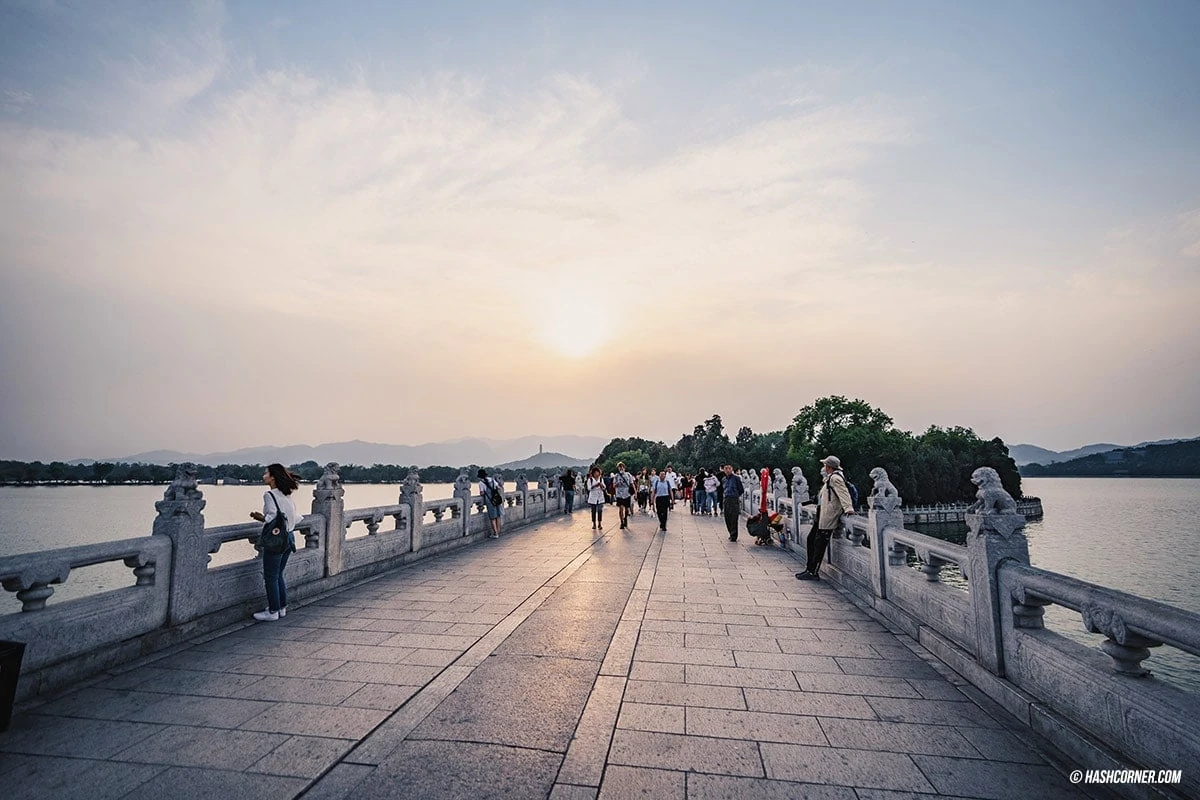
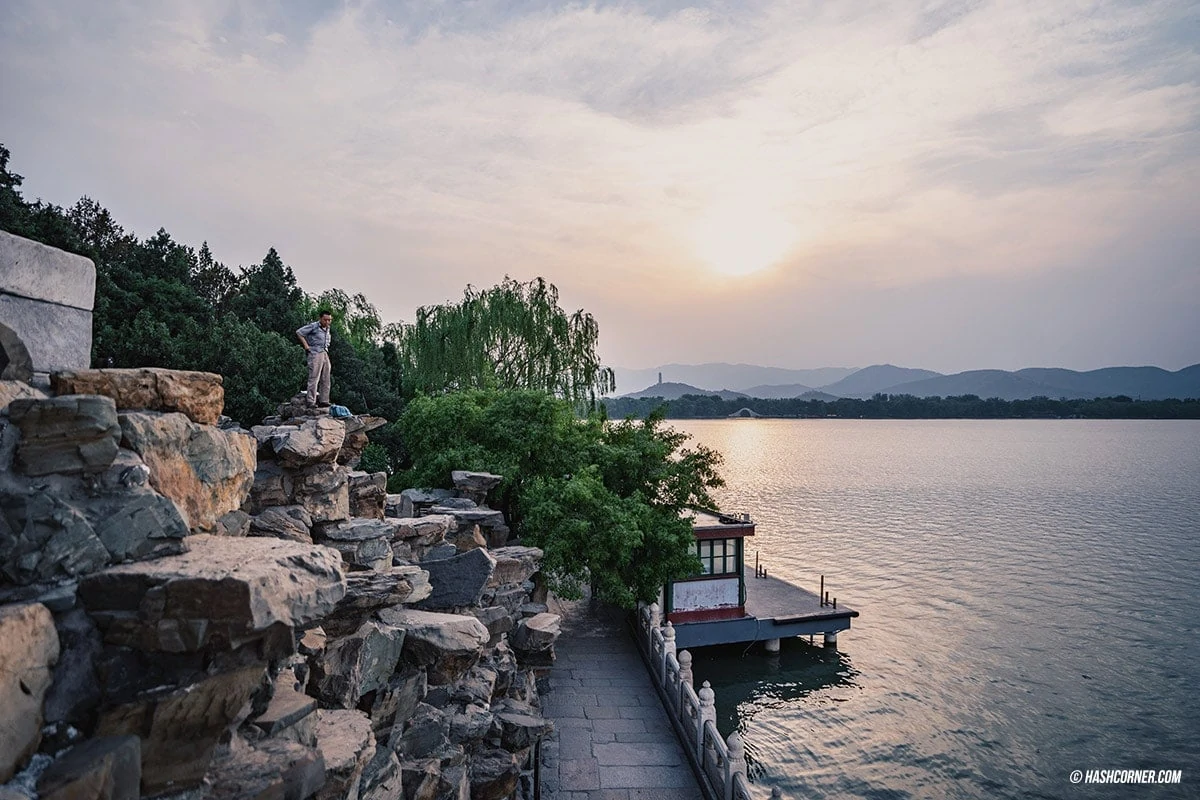
Beijing Day 3
Yonghe Temple
Let’s Begin our third day by visiting the temple to pay respect and make a wish at Yonghe Temple (Harmony and Peace Palace Lamasery), also known as the Yonghe Lamasery, or the Lama Temple, considered as the largest and most well-preserved Tibetan Buddhist Temple in Beijing. The temple built initially in 1694, in the past, the building was the residence of Prince Yinzhen, the fourth son of the Kangxi Emperor. In 1744, when Prince Yong ascended the throne as the third Emperor of the Qing dynasty. He granted the tract to build a lamasery, a monastery for monks of Tibetan Buddhism, and Yonghe temple became the national center of Lama administration to the present day.
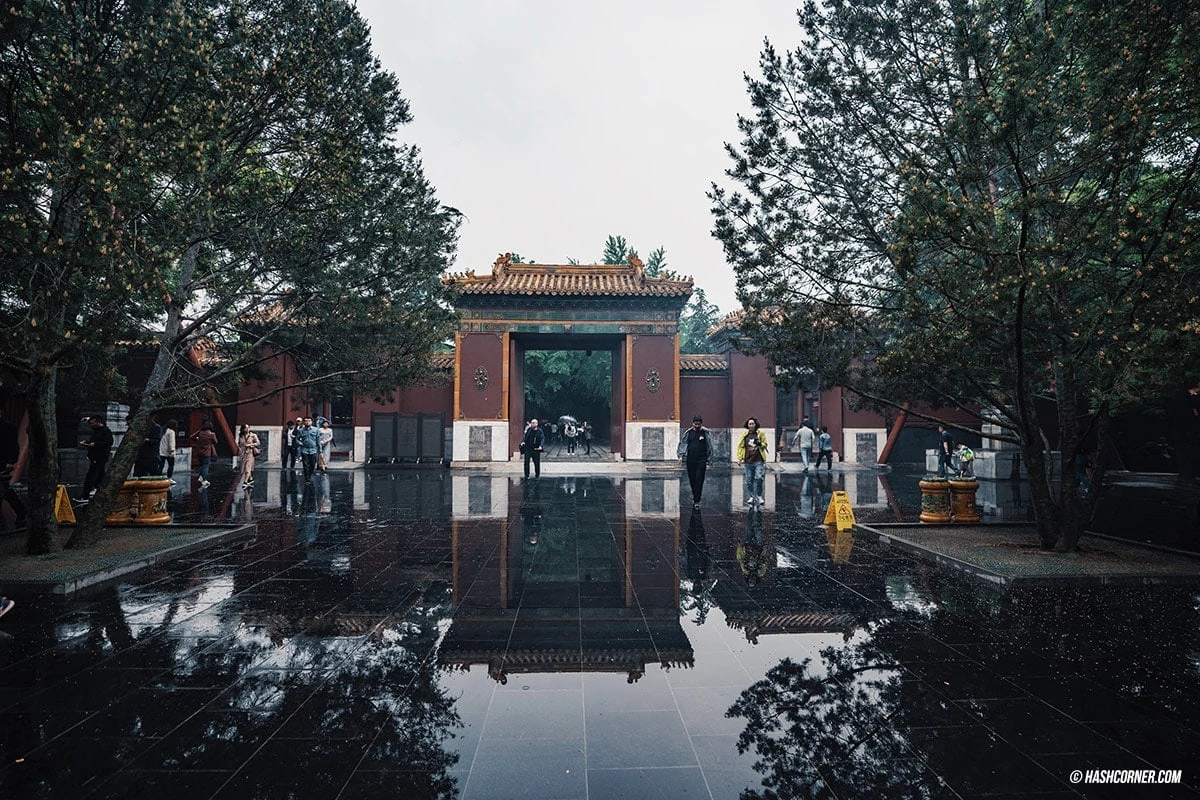
🚈The access to Yonghe Temple: Take the Skytrain Line 2 or 5, and get off at Yonghergong Station, take the exit at Gate C, you’ll come across the destination straightaway. But you may have to walk a bit before approaching the temple entrance. The entrance fee costs 25 RMB.
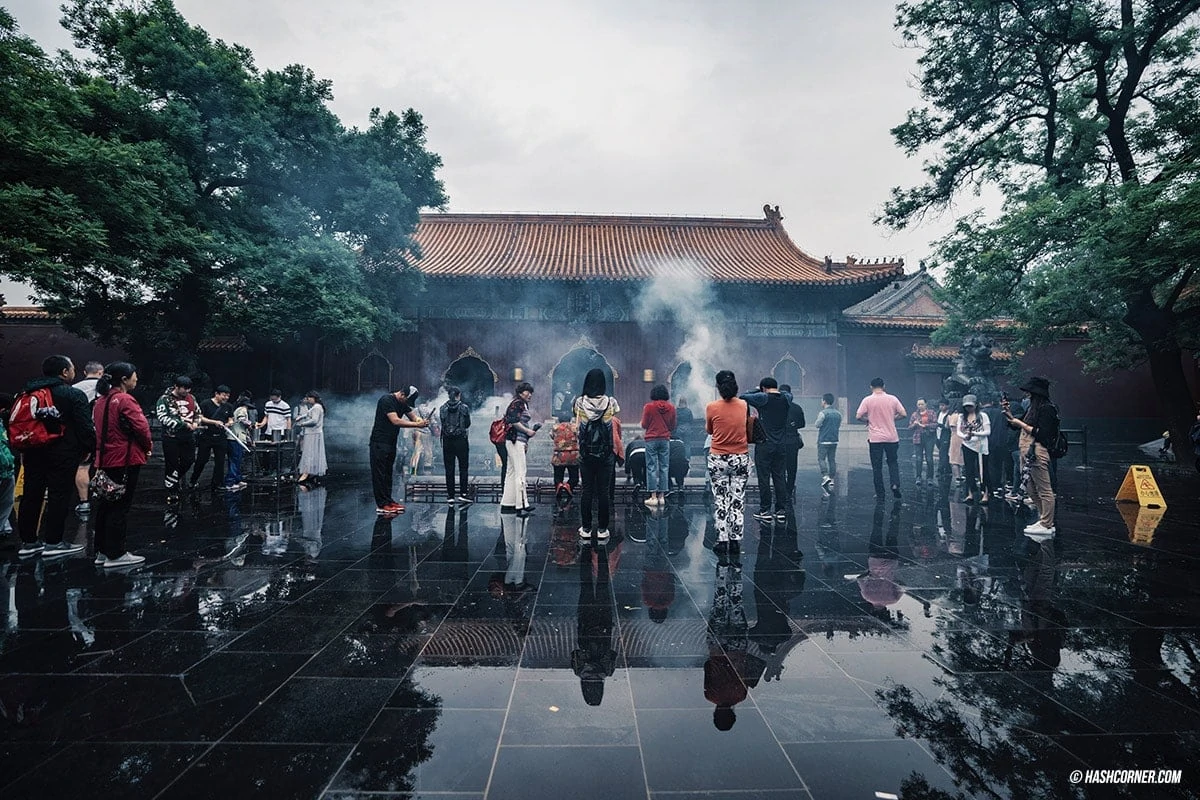
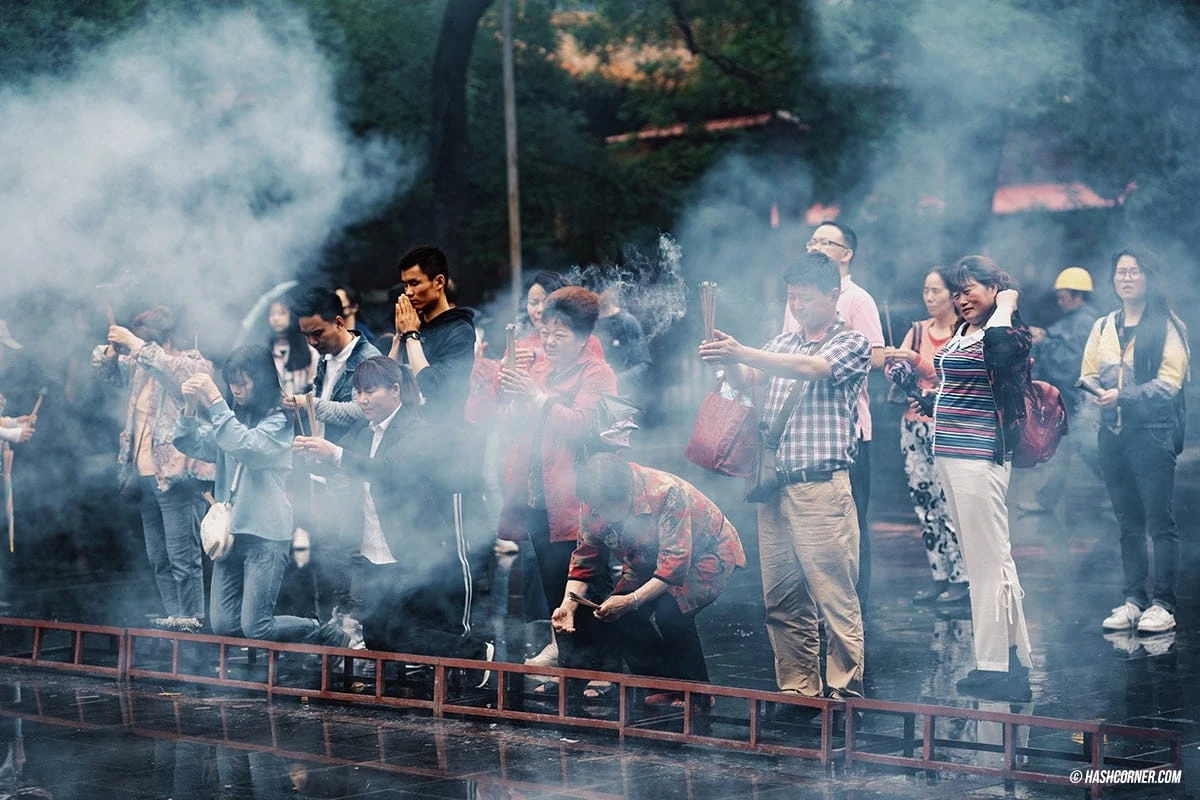
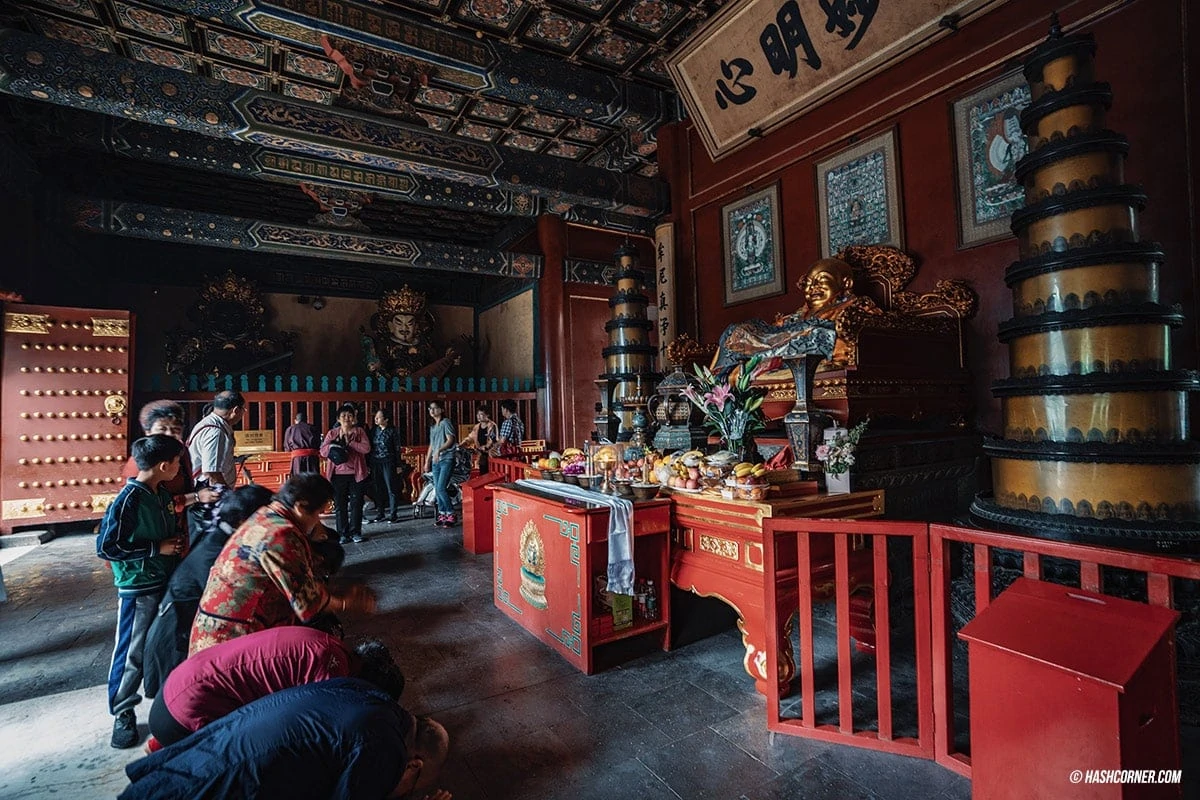
Completed buying the ticket and walked through the gate, let you walk straight to admire and pay respect to the Buddha images in each of the halls. The temple layout is a rectangle which you can pass through each hall constantly, from the Gate Hall of Harmony and Peace (雍和门大殿, Yōnghémén Dàdià), the Hall of Everlasting Protection (永佑殿, Yōngyòu Diàn), the Hall of the Wheel of the Law (法轮殿, Fălún Diàn), and the innermost, the Pavilion of Ten Thousand Happiness (万福阁, Wànfú Gé). At first, I reckoned not to take a long visit here. But the temple is unexpectedly huge, before reaching the inner hall and walking back out. I took quite some time. LOL
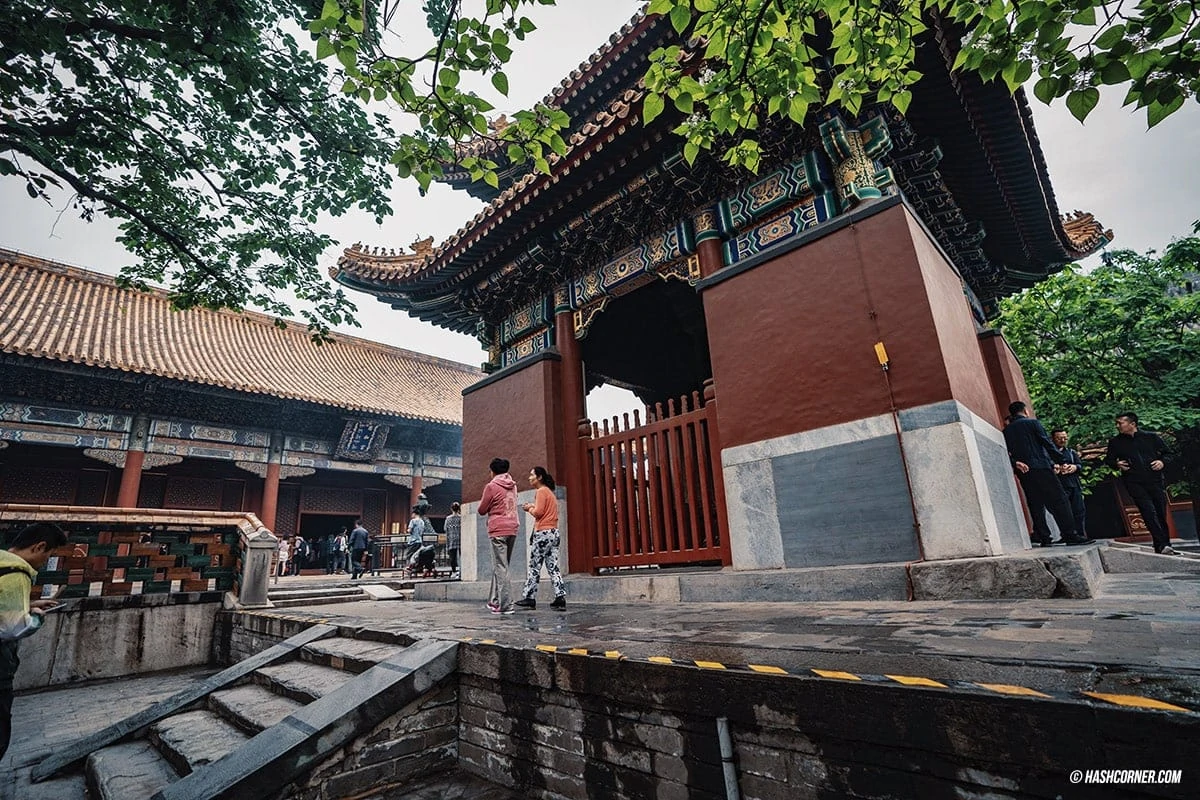
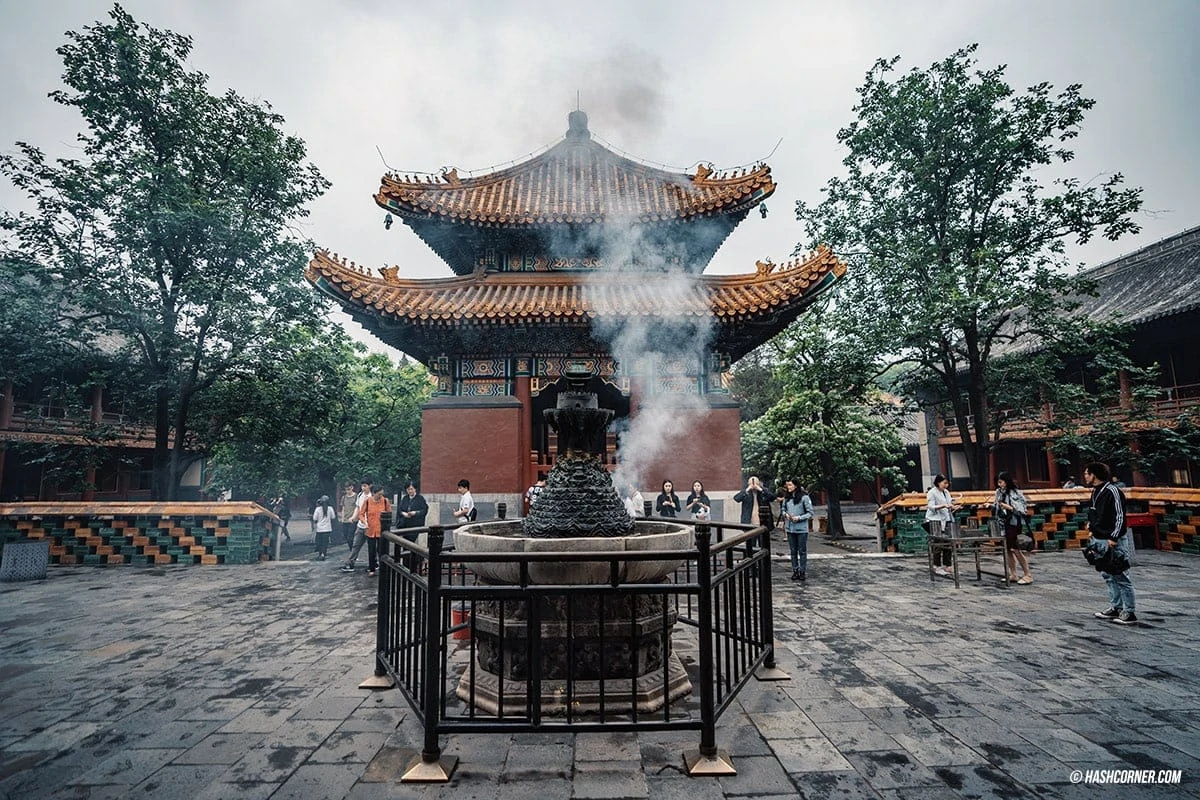

The most essential hall you should not be missed is the Pavilion of Ten Thousand Happiness (万福阁, Wànfú Gé). At the far end, there is a 26-meter standing statue of Maitreya Buddha, carved with one piece of white agarwood from Nepal. The 7 Dalai Lama dedicated to the Qianlong Emperor in 1753. The greatness of this Maitreya Buddha statue is respected to be the highest carved wooden Buddha in the world. And also recorded in the Guinness Book. The real piece is delicate and brilliant.
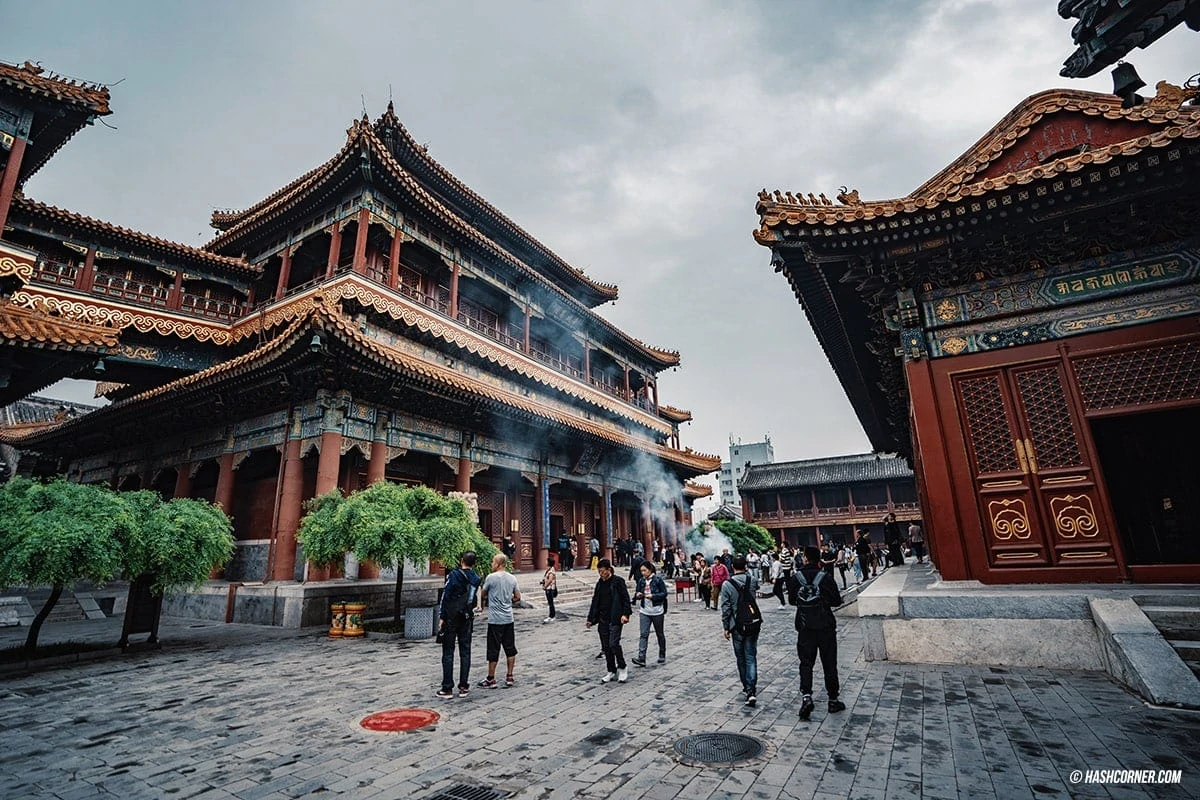
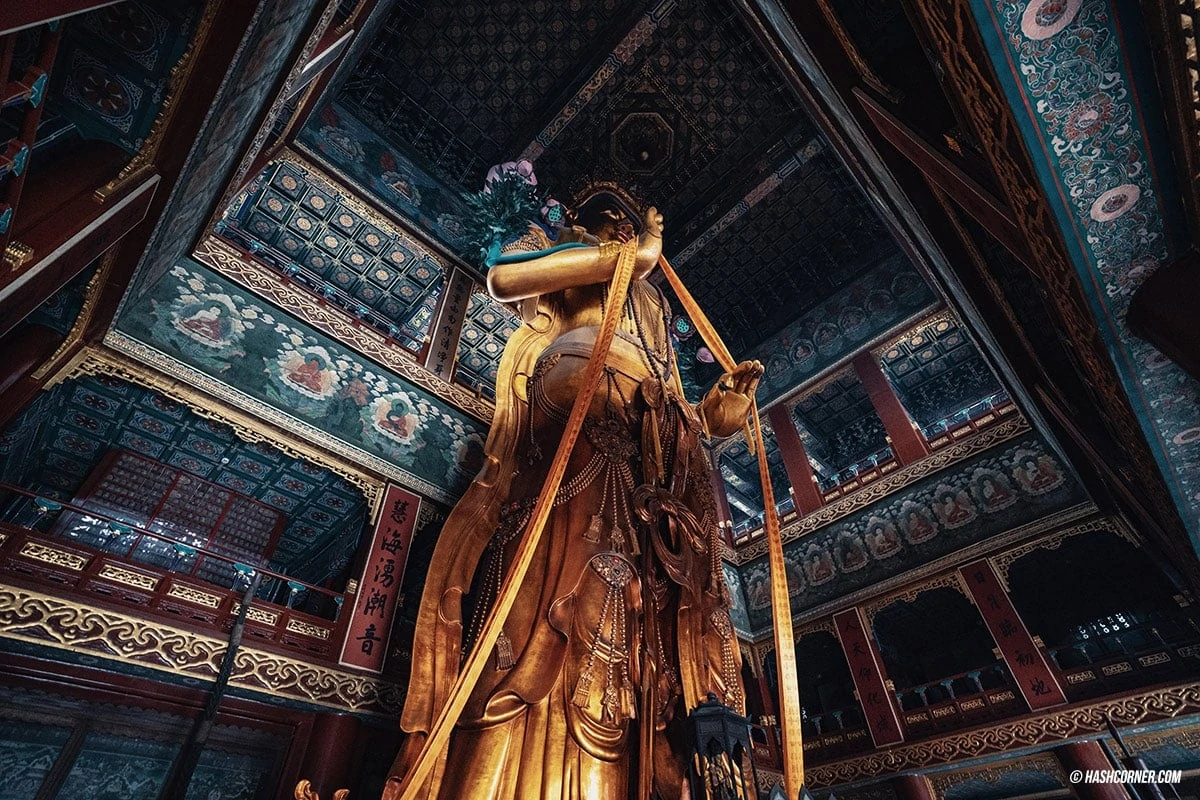
Tiantan Temple of Heaven
Tiantan Temple of Heaven is another Beijing’s famous landmark next to the Forbidden City and the Summer Palace. Many of you may have seen a magnificent triple-gabled circular building. I dare saying not only the architecture may surprise you, but also the total area here is vastly jaw-dropping.
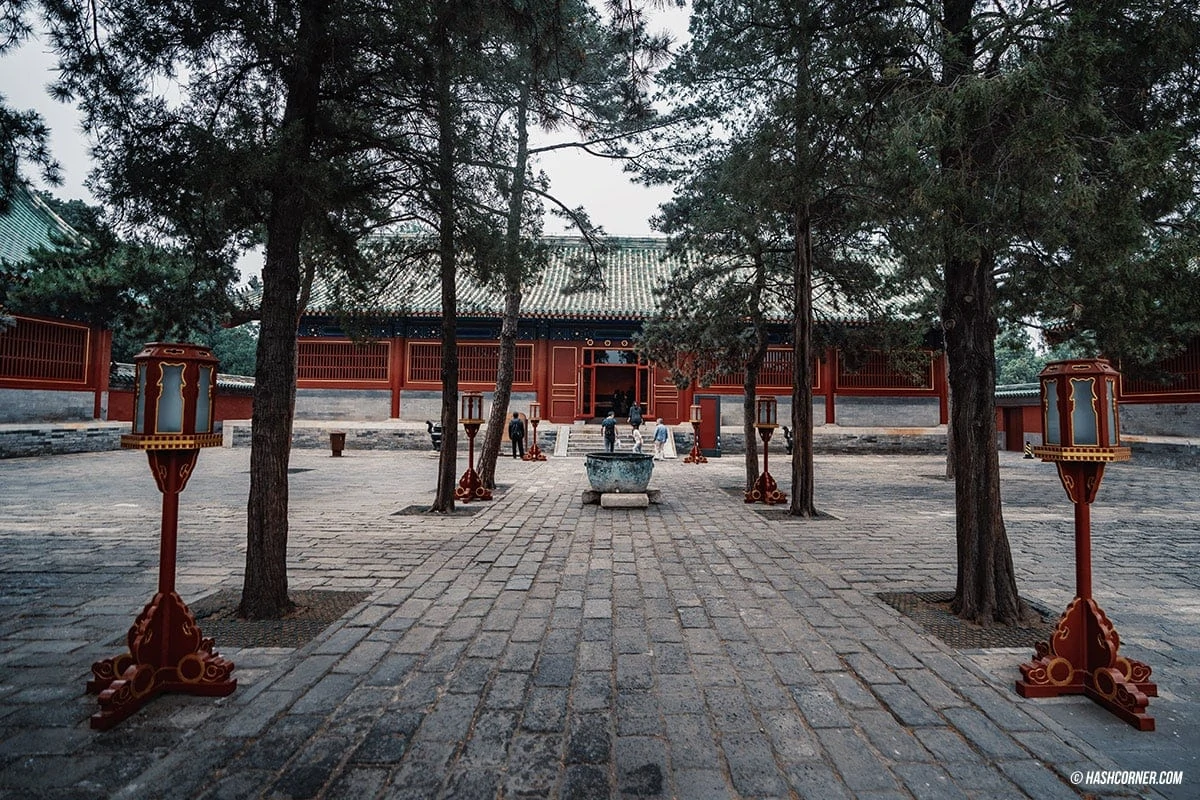
⚡️The Tiantan Temple of Heaven was constructed in 1406 during the region of the Yongle Emperor, Ming Dynasty. The temple complex built exactly the same year with the Forbidden City. But when comparing the sizes, this place is 4 times larger. After reading this, you may be frightening whether to walk as tired as the Forbidden City or not. I’m happy to tell you that, Nope! Not that much. Because we will visit just only the 3 highlights. YEAH!
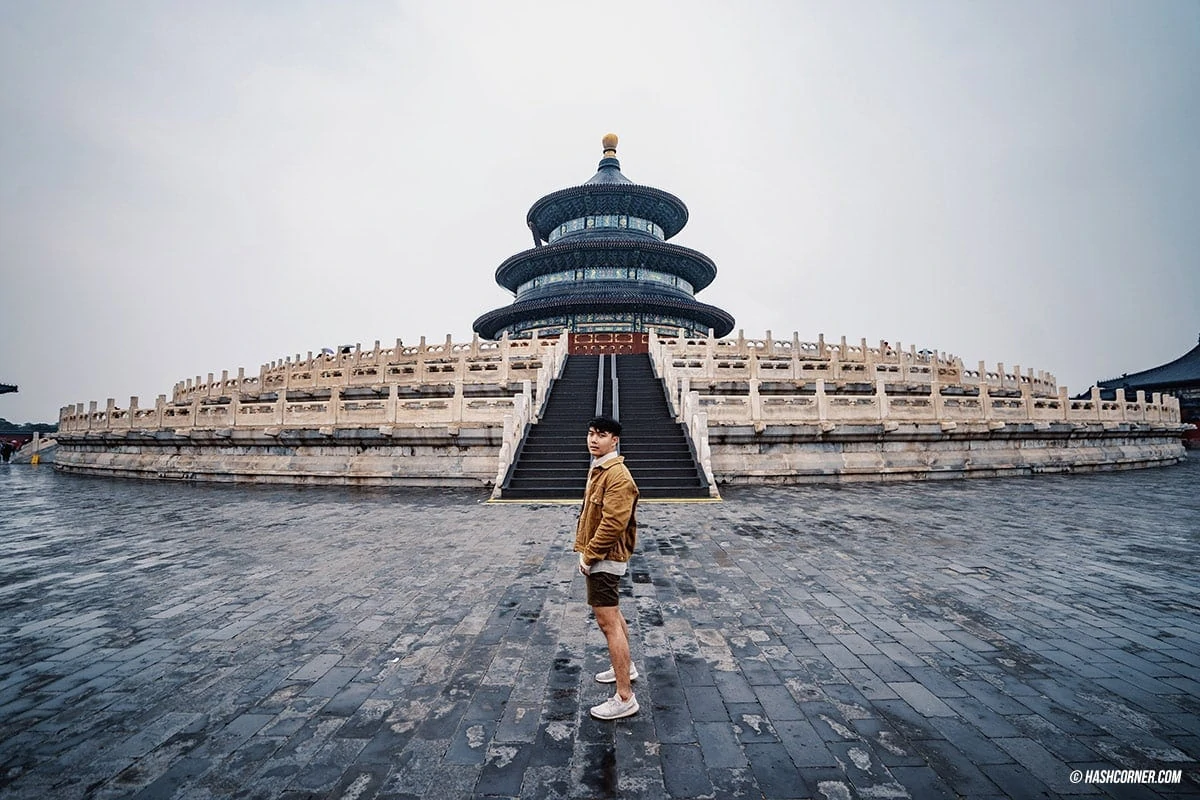
🚈The access to the Tiantan Temple of Heaven: Take the Skytrain Line 5 and get off at Tiantan Dongmen Station, exit Gate A1. Then, take a short walk to enter the east gate of the Tiantan Temple of Heaven. When buying the entrance ticket, I recommend buying a combo ticket for 34 RMB. No need to buy separately in the temple complex. Because the price includes the admission fee to the 3 highlights of the venue: The Hall of Prayer for Good Harvests (Qinian Pavilion / 祈年殿), The Imperial Vault of Heaven (Huangqiongyu Pavilion / 皇穹宇), and The Circular Mound Altar (Huanqiu Altar / 圜丘).
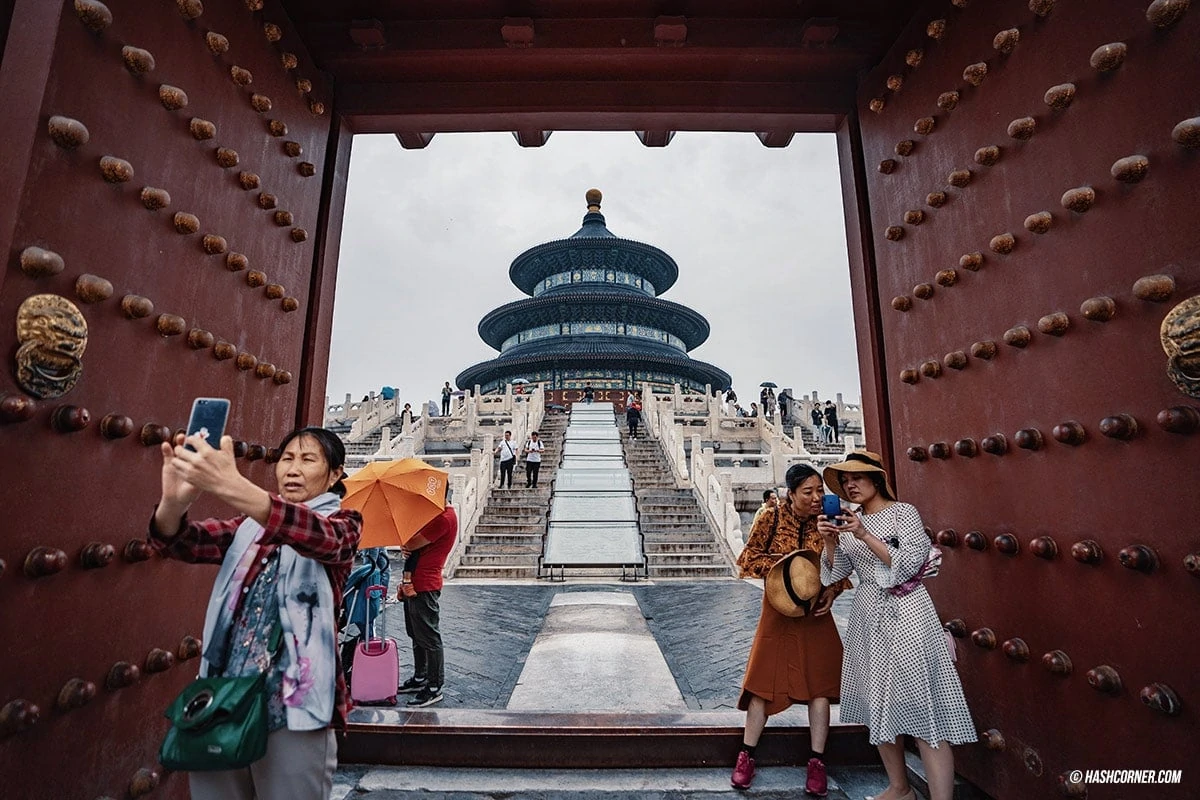
Let’s start with the most popular attraction here, which I frequently see millions of pictures on Instagram, the Hall of Prayer for Good Harvests (Qinian Pavilion / 祈年殿), there are a lot of stunning pictures shown in social media, right? OFC, it was relevant because during my visit. The place is crowded! HELLO! But that wouldn’t be a problem, Let’s just focus on the enormous and beautiful of its structure. The brilliant about the building design is, regardless of which aspect of the building you look at, you’ll get the same image. The inside of this wood building has no single beam or nail.
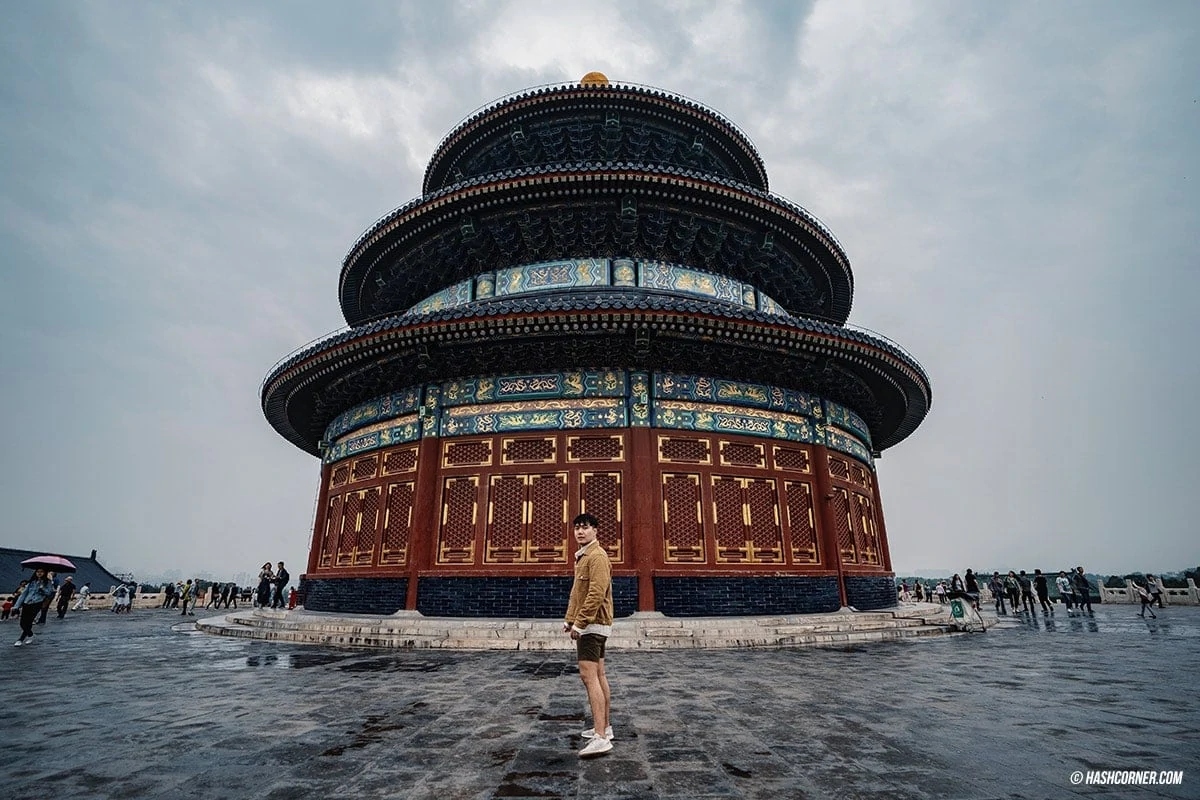
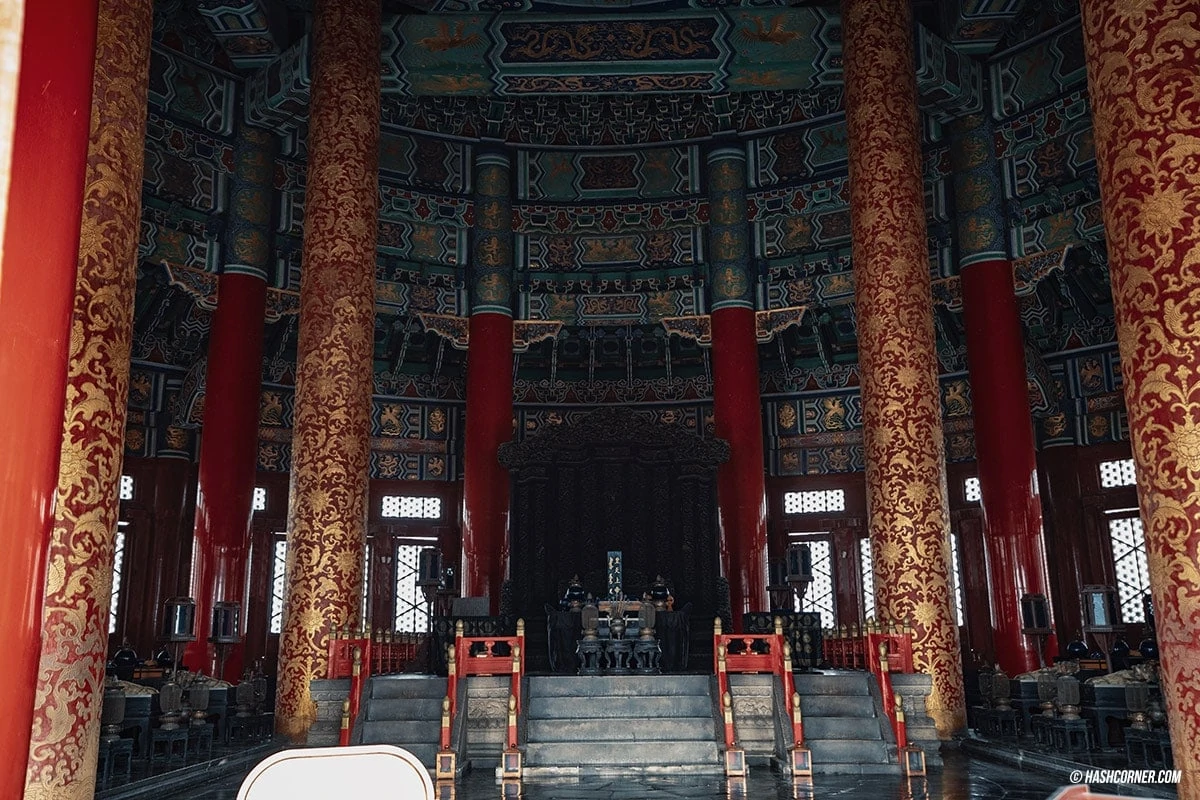
A trivial knowledge I want to tell you is Chinese people believe that heaven has a curved sphere. And as this building was constructed for the Emperor to perform celestial worship and deities to comprise prayers for good harvests, including, seasonal rain. Causing this wooden building to have a round-curved shape. As for the ground, they are believed to have a square shape.
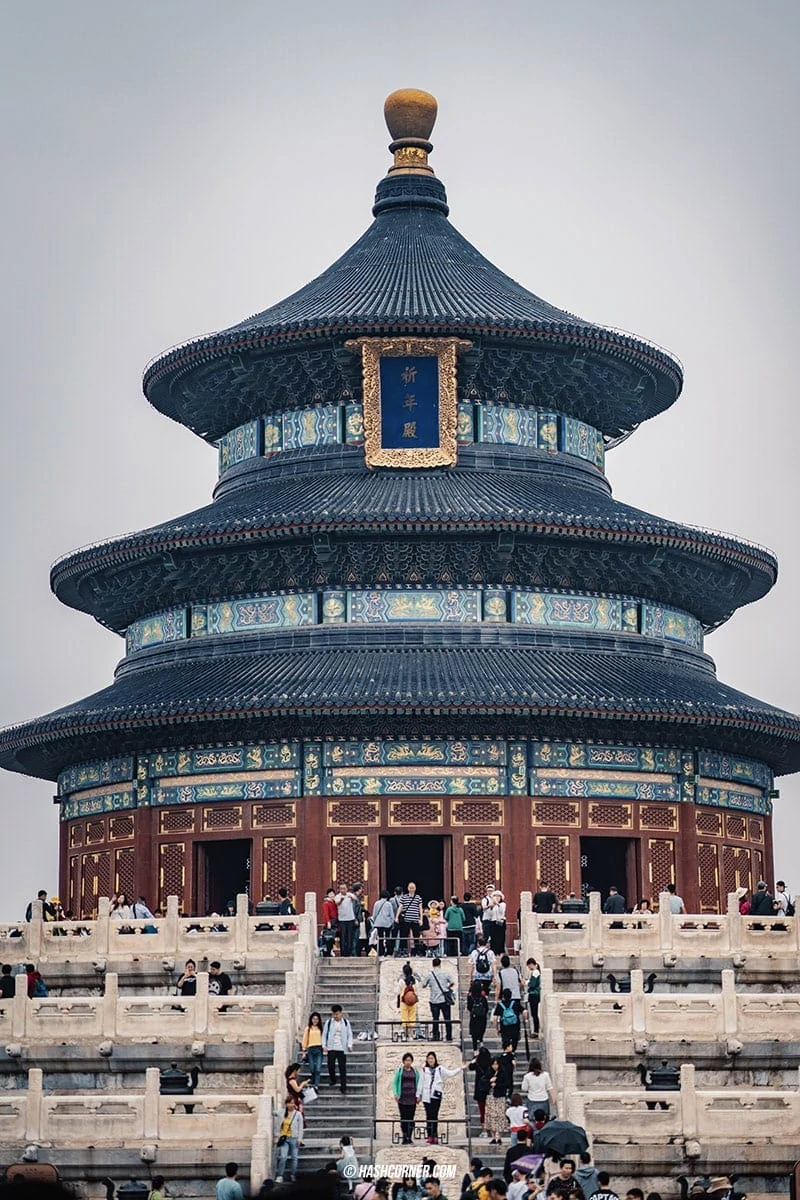
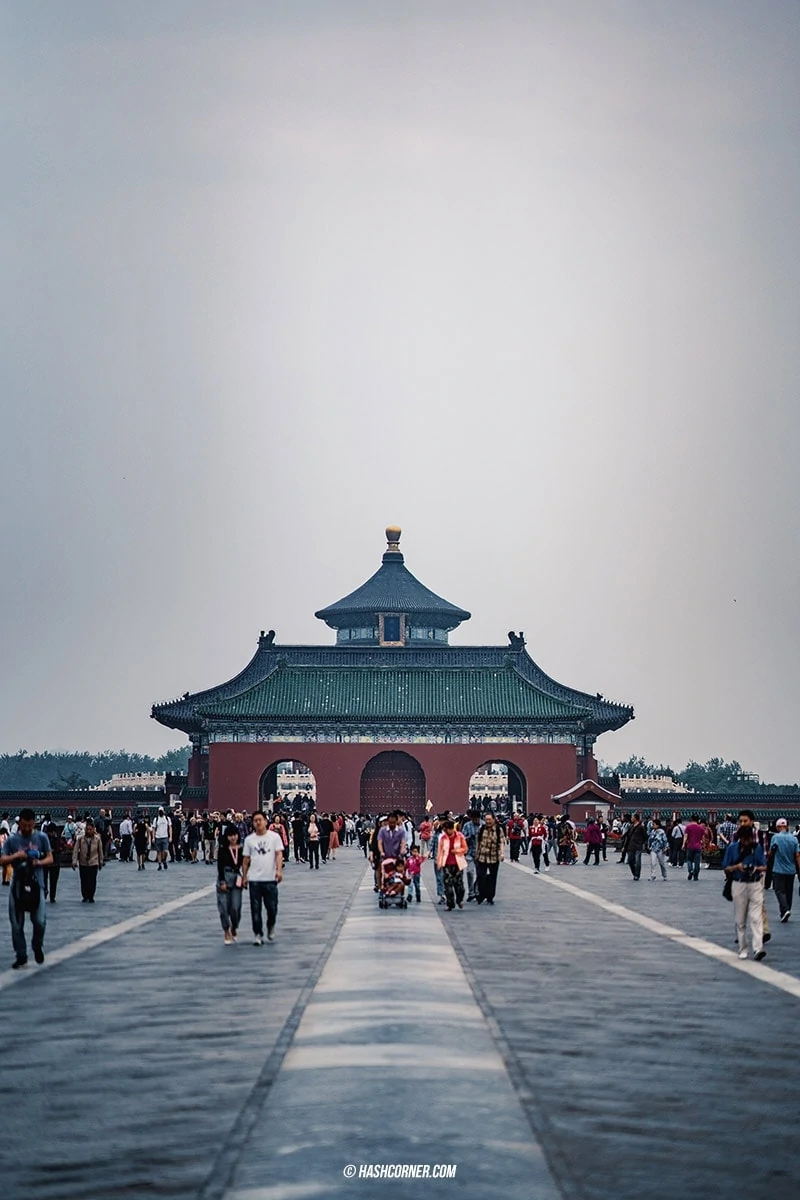
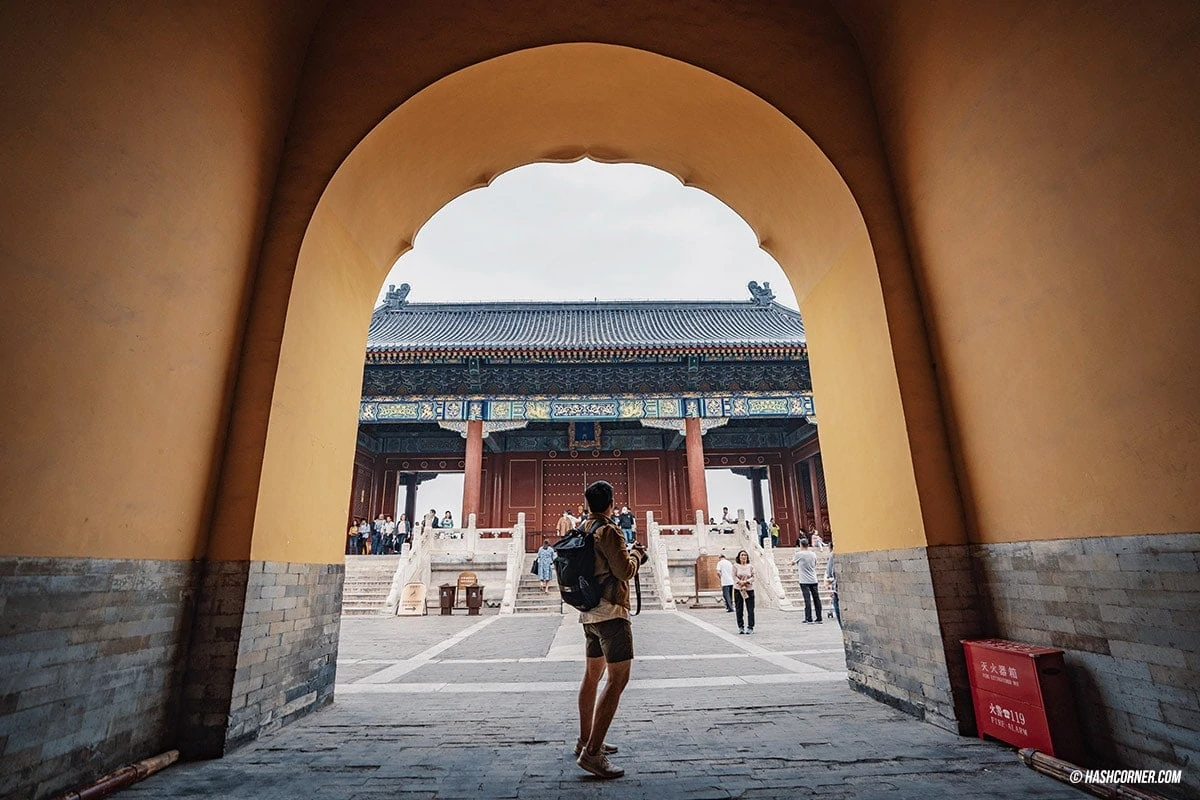
Let’s continue with the second attraction, The Imperial Vault of Heaven (Huangqiongyu Pavilion / 皇穹宇), which is the place to collect the deity sign used in the Heaven worshiping ceremony. The distinctive point of this place is a surrounded circular wall or best-known as the Echo Wall where two people can whisper through the wall on either side. I don’t know if this is true because I didn’t try it. So, I’ll hand the task to you then. LOL
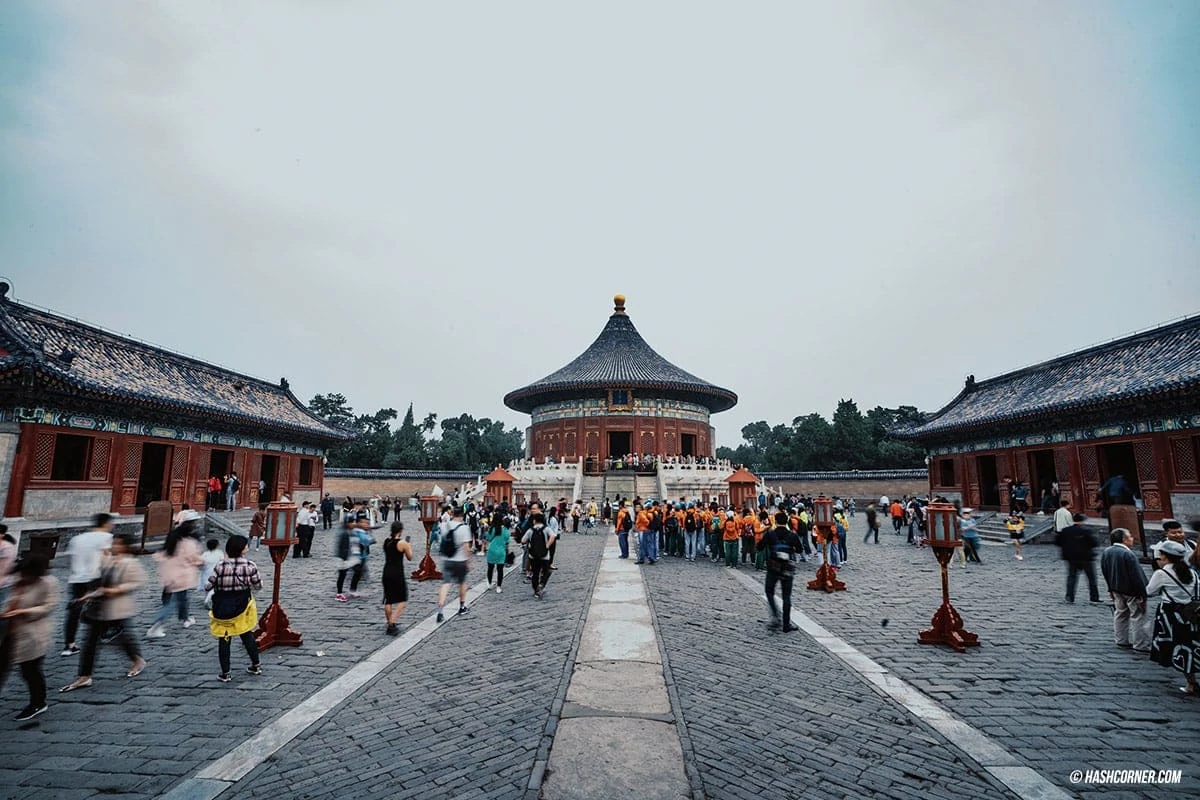
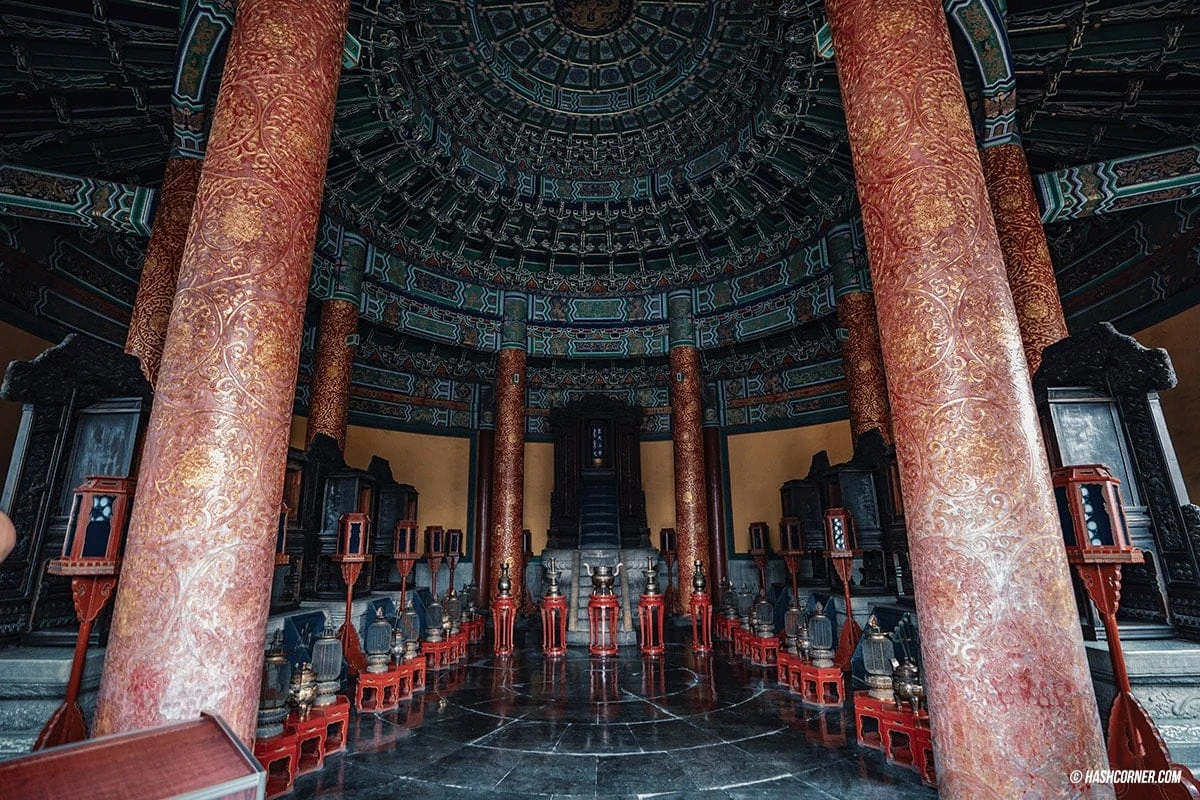
The last spot is the Circular Mound Altar (Huanqiu Altar / 圜丘), an outdoor empty circular platform on the three marble stones where the Emperor held the ceremony offering sacrifices to Heaven. In the center of the platform, there is a circular stone slab built, it’s called Tianxin Shi (天心石)or the stone in the center of heaven. If you raise your voice through this stone. The sound will expand until everyone can hear it. During the visit, no one comes to make a sound at all. Most of them were standing on the stone and taking pictures. If you’re curious and want to try making some noise. I, again, hand the task to you, I want to know too how much it can be amplified LOL.
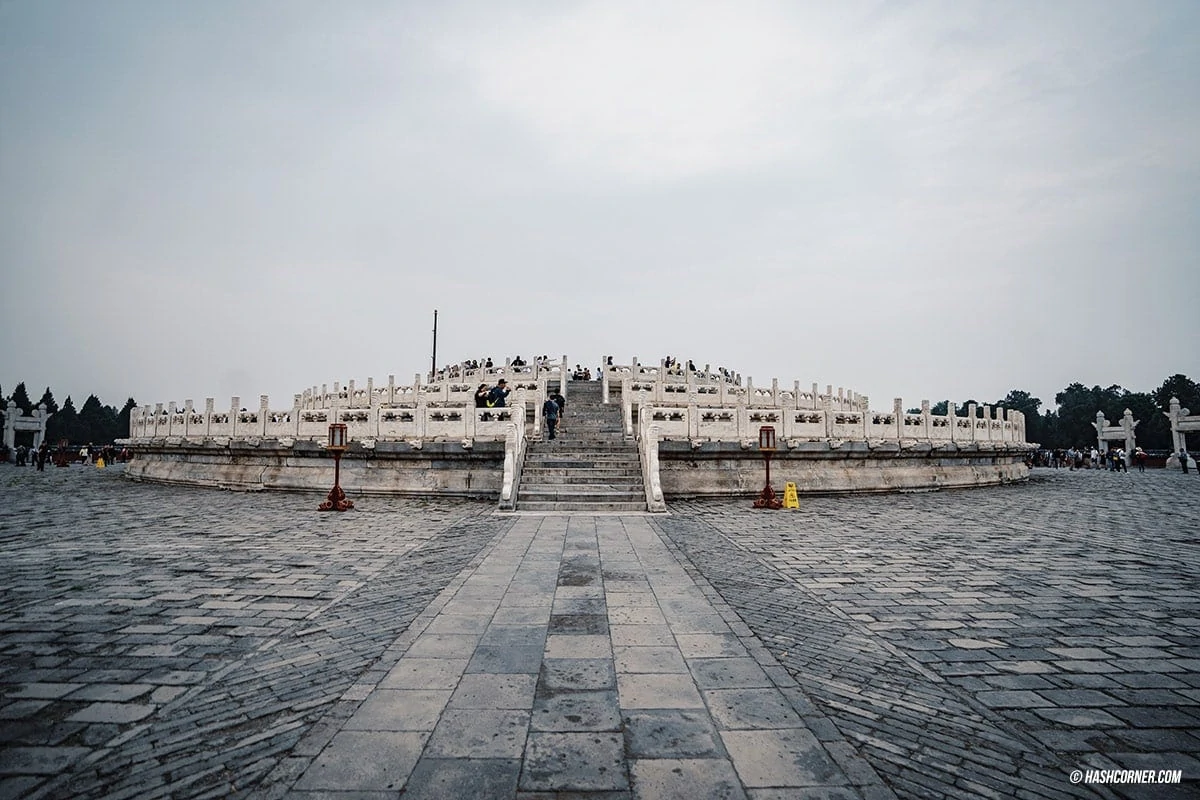
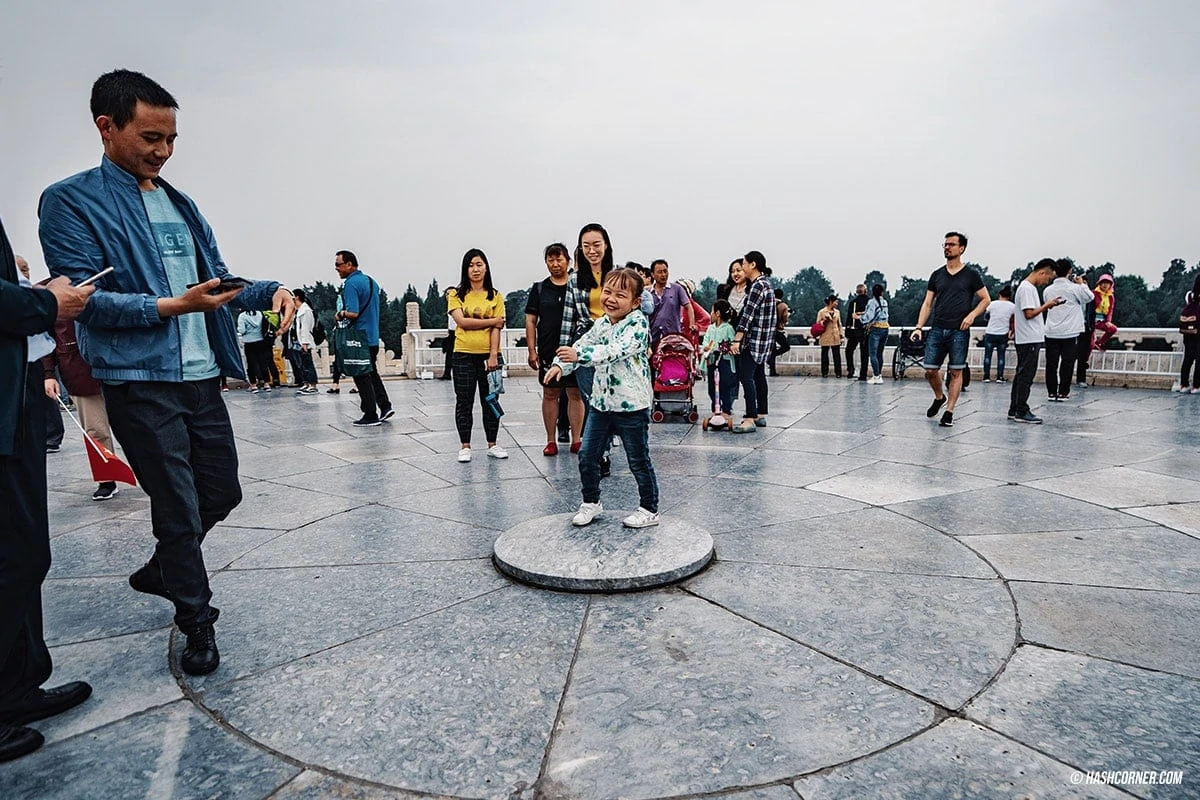
To recap, the area of the Tiantan Temple of Heaven may be tremendous, but it does not take very long to travel. Because there are only 3 highlights. Another place in this complex, if you have free time, you can continue exploring around. But personally, it’s a better idea to manage time traveling to other tourist destinations.
Red-Brick Art Museum
Cover to almost all important landmarks in Beijing, after this, I’ll take you to the most stylish contemporary museum in this region, which is the Red-Brick Art Museum, I assure the place is very cool in both high-quality exhibitions and architecture design to let you take a great picture, well-suited for posting it on Instagram and getting positive feedbacks. I was overwhelmed with enjoyment during the trip.
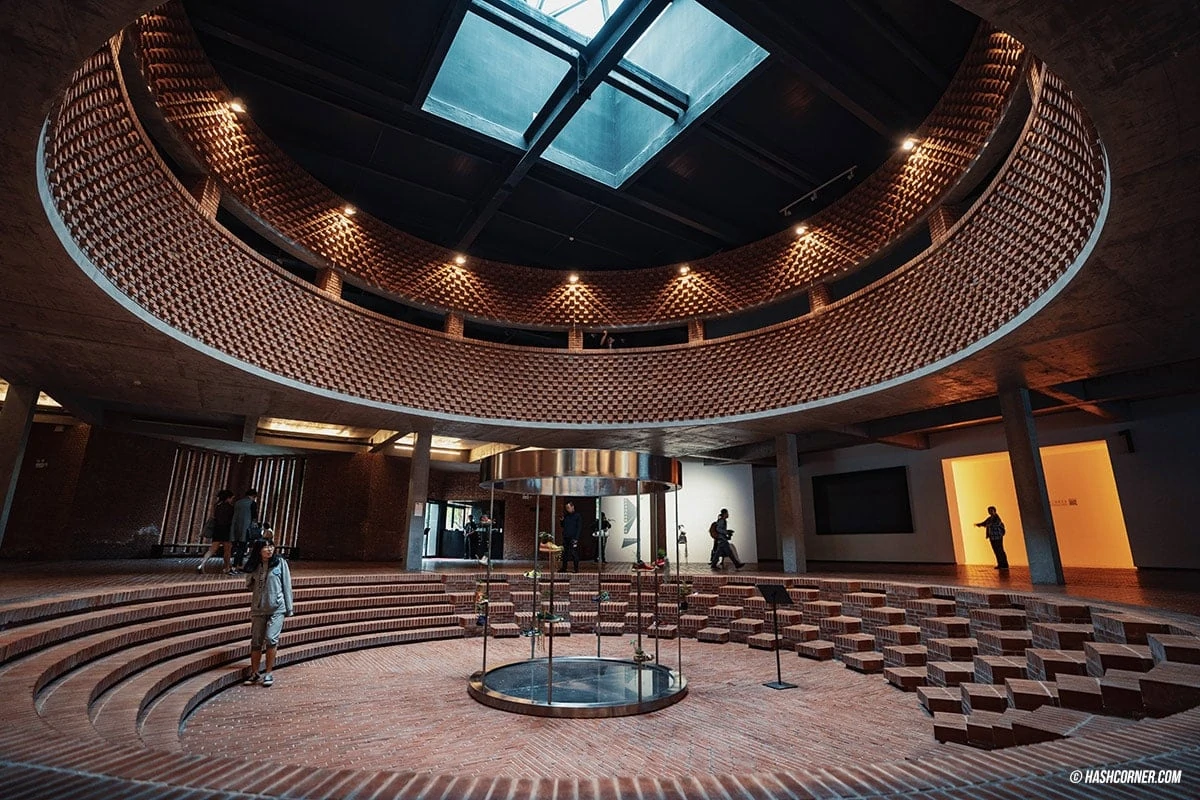
The access to Red-Brick Art Museum: Take the subway Line 15 to Maquanying Station, Exit B. You’ll meet Scitech Outlets, then walk to Red-Brick Art Museum bound for approx. 1 km. Or you can call a tricycle around the area.
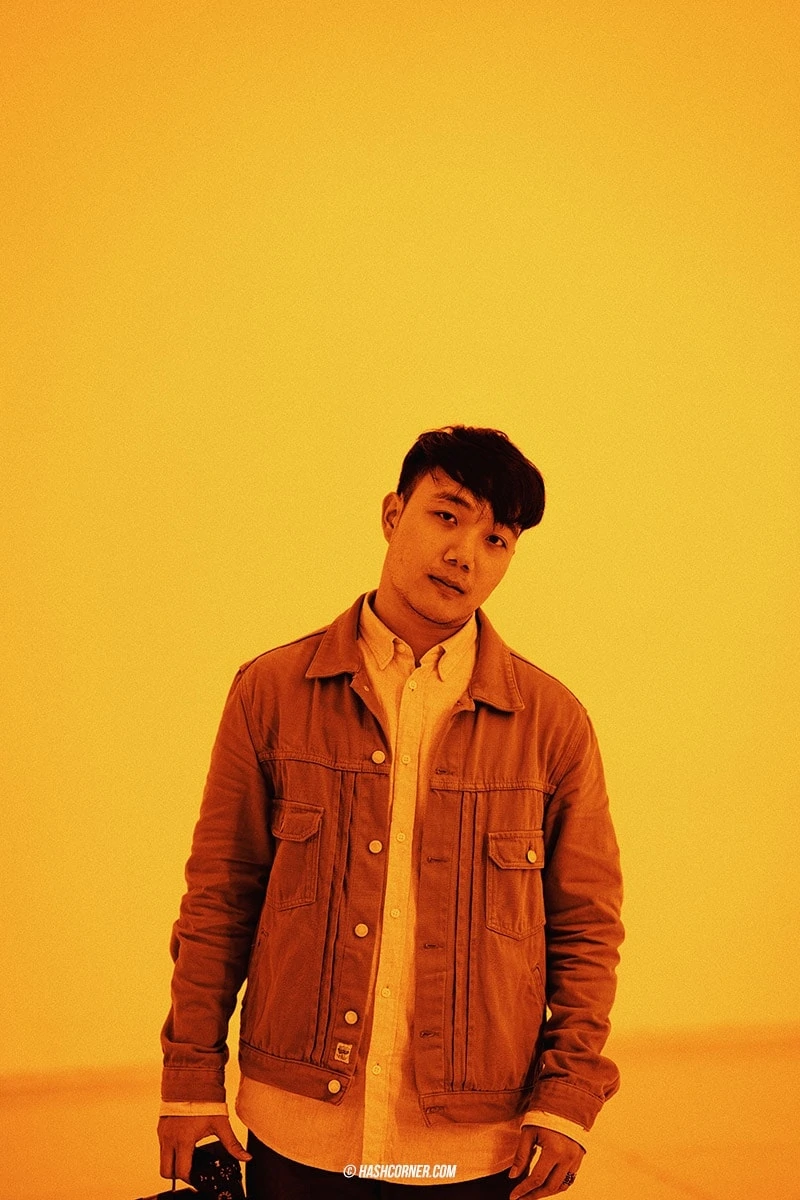
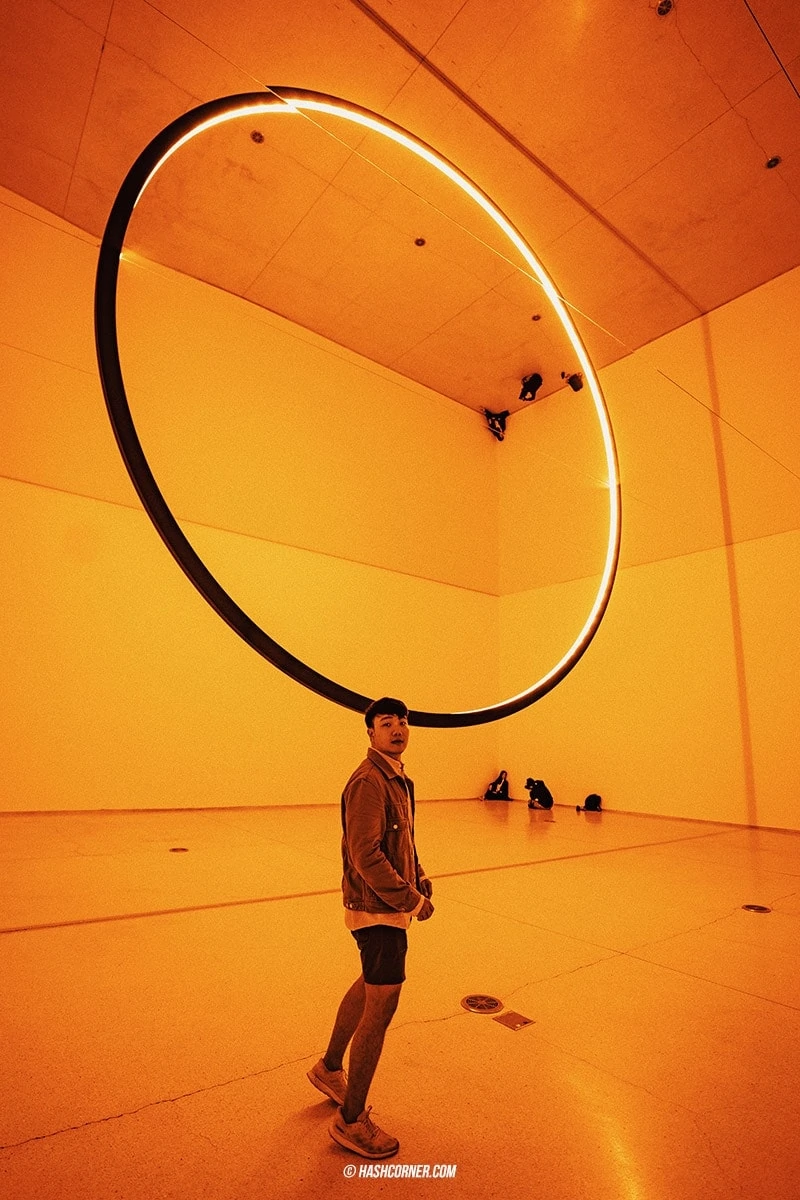
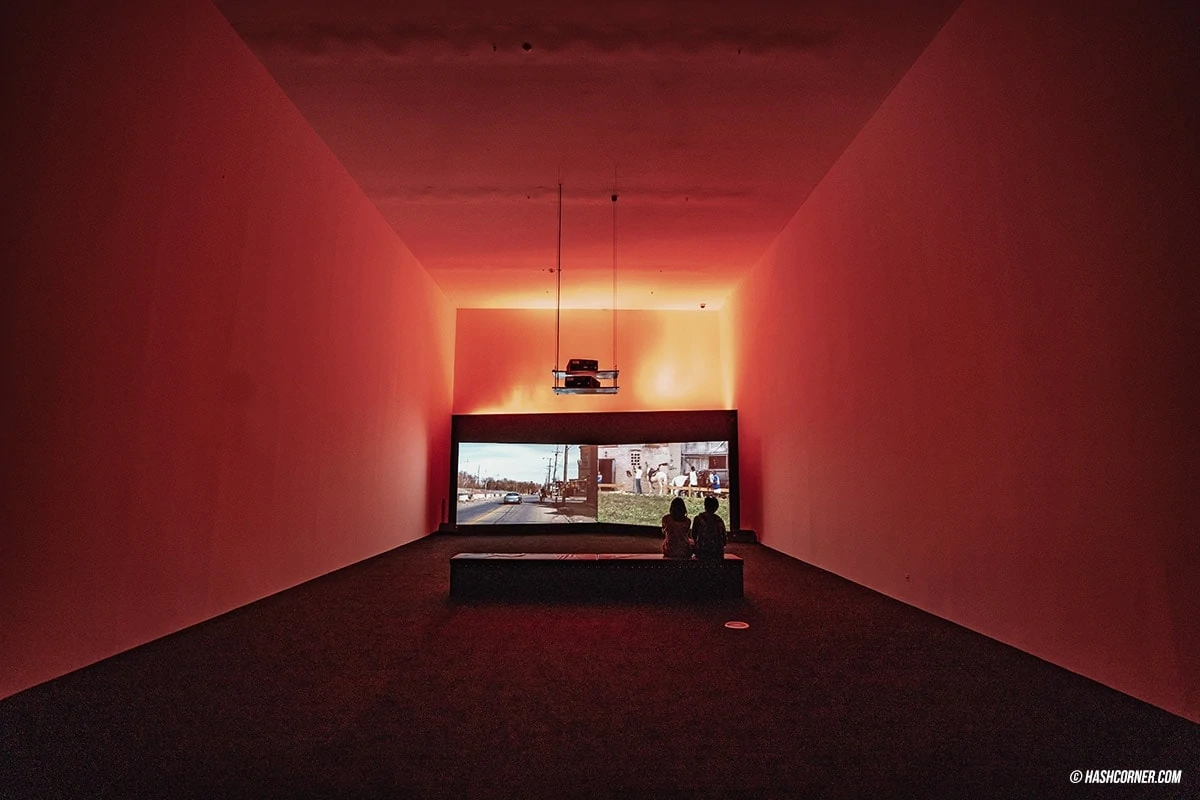
The museum admission ticket is a bit pricey, it costs 130 RMB. If you have a student card, do not miss to show it because you can get a discount to 110 RMB. (it’s still expensive though. LOL)
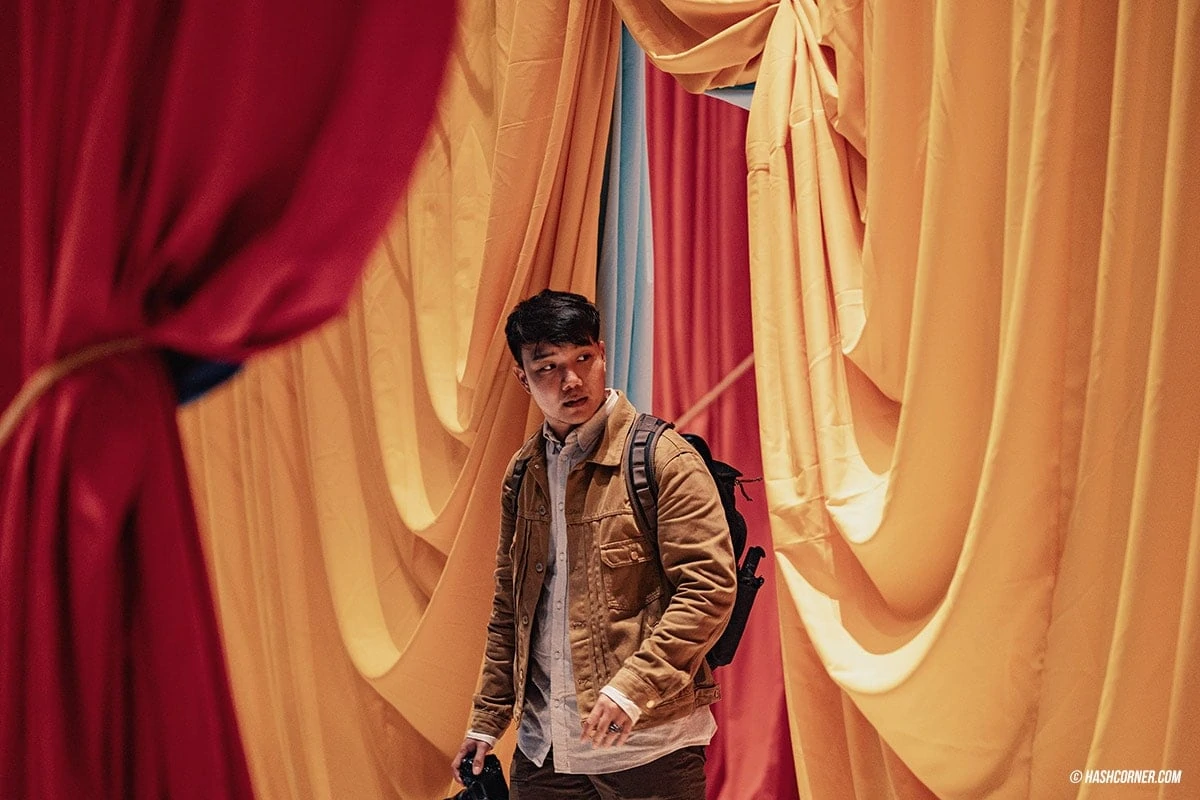
The museum provides a rotating exhibition and event. Those who come after me might not have seen the same event as in this travel guide review. Each part was extraordinary. Most of them are Contemporary Arts combines with a variety of media. There are also dividing zones consist of manifold art pieces display in the multiple showrooms. I approved the Red-Brick Art Museum as one of the best Art Museums in China.
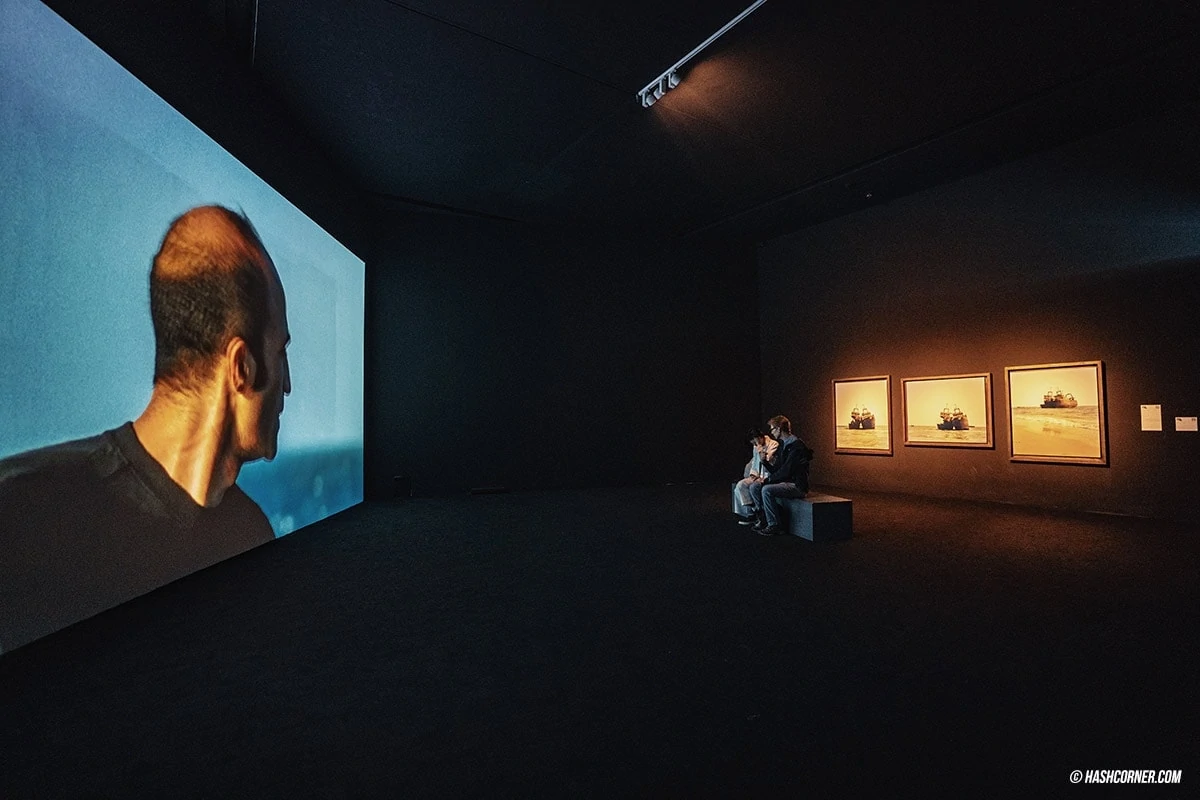
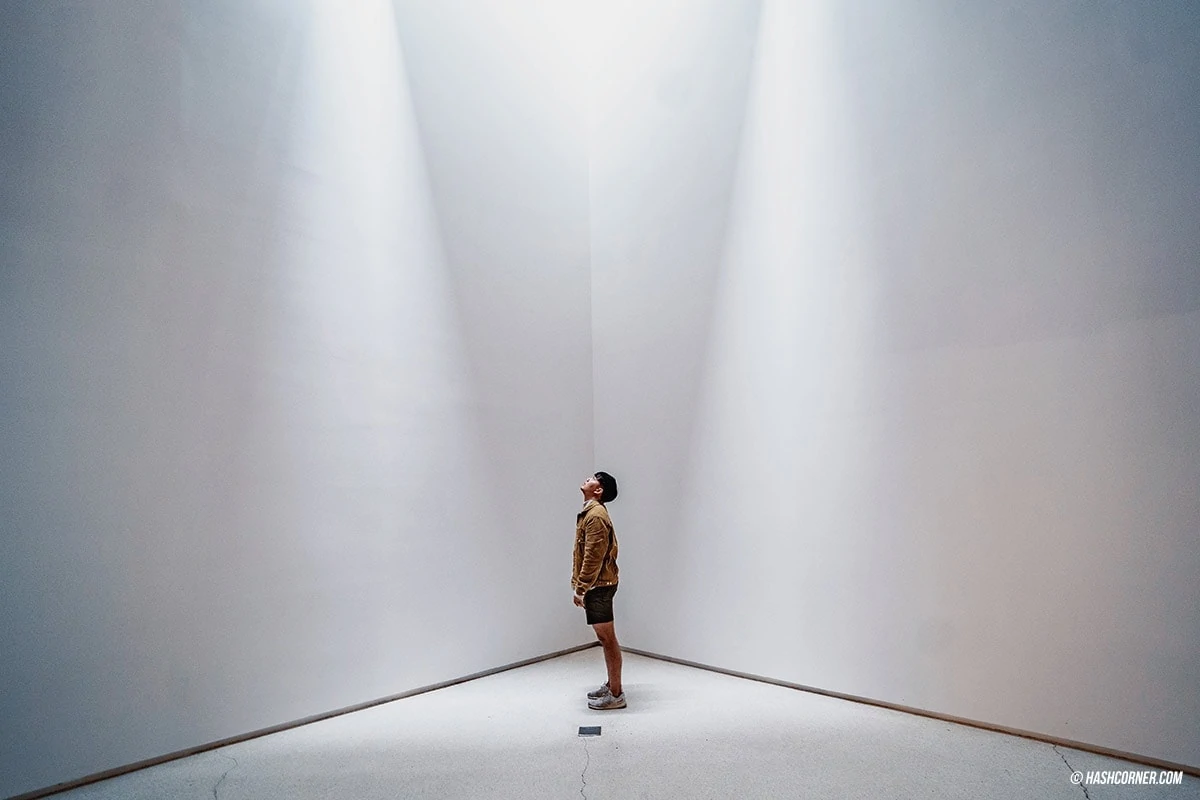
Finished checking out the internal section, don’t forget to walk outside through the back-door museum. You’ll experience the architectural design employing red bricks. It’s eye-catching when you take a picture. Local teenagers praise the museum as one of China’s most impactful Instagramable Spots.
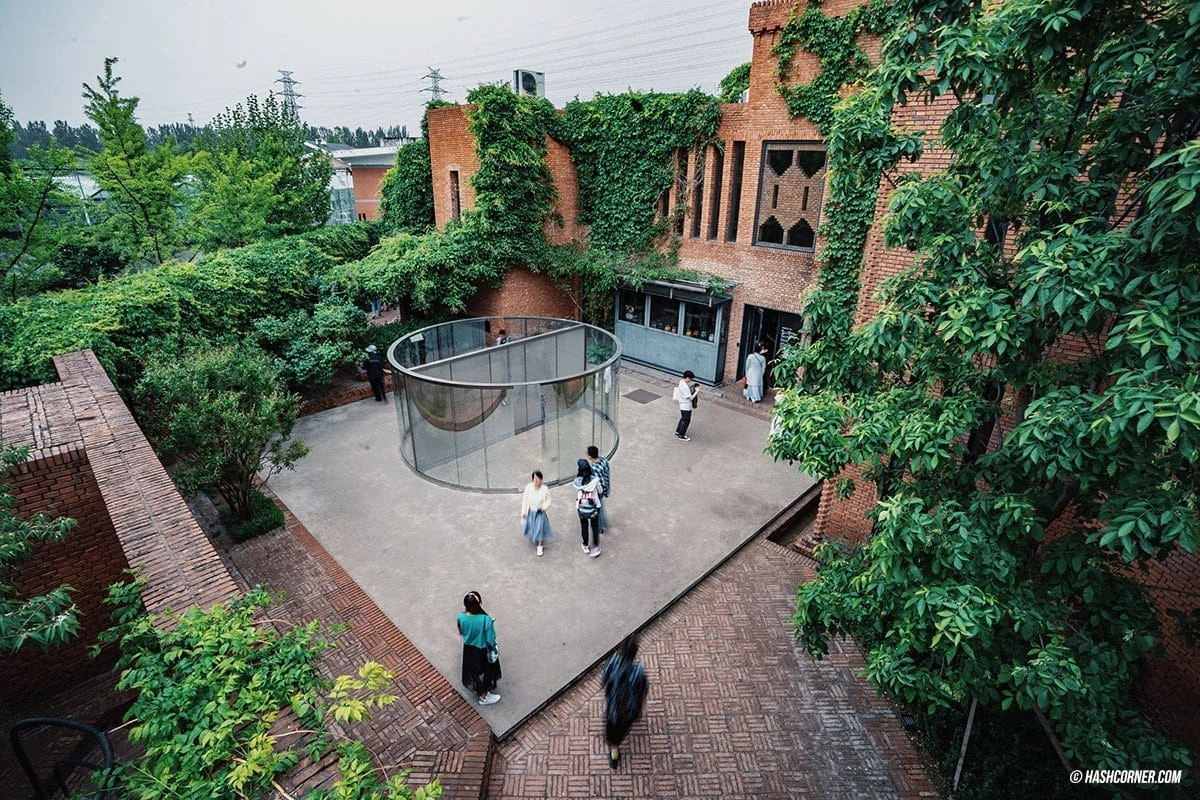
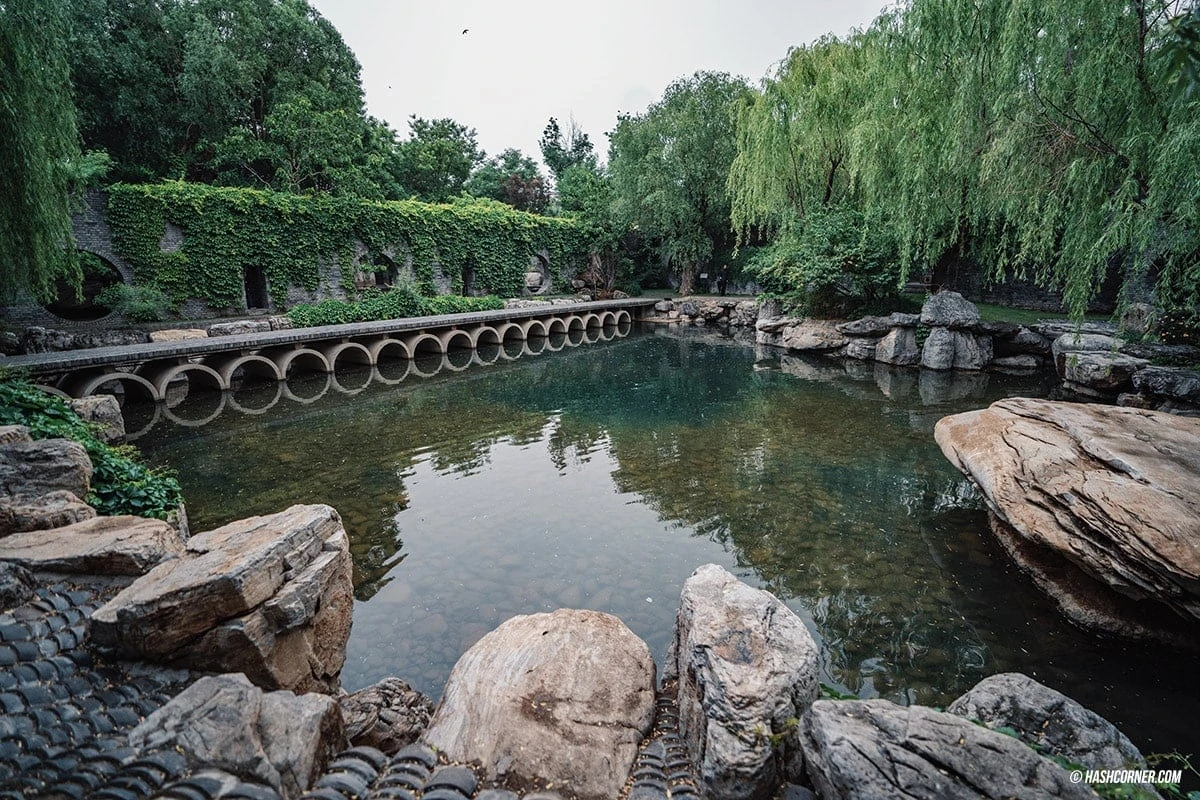
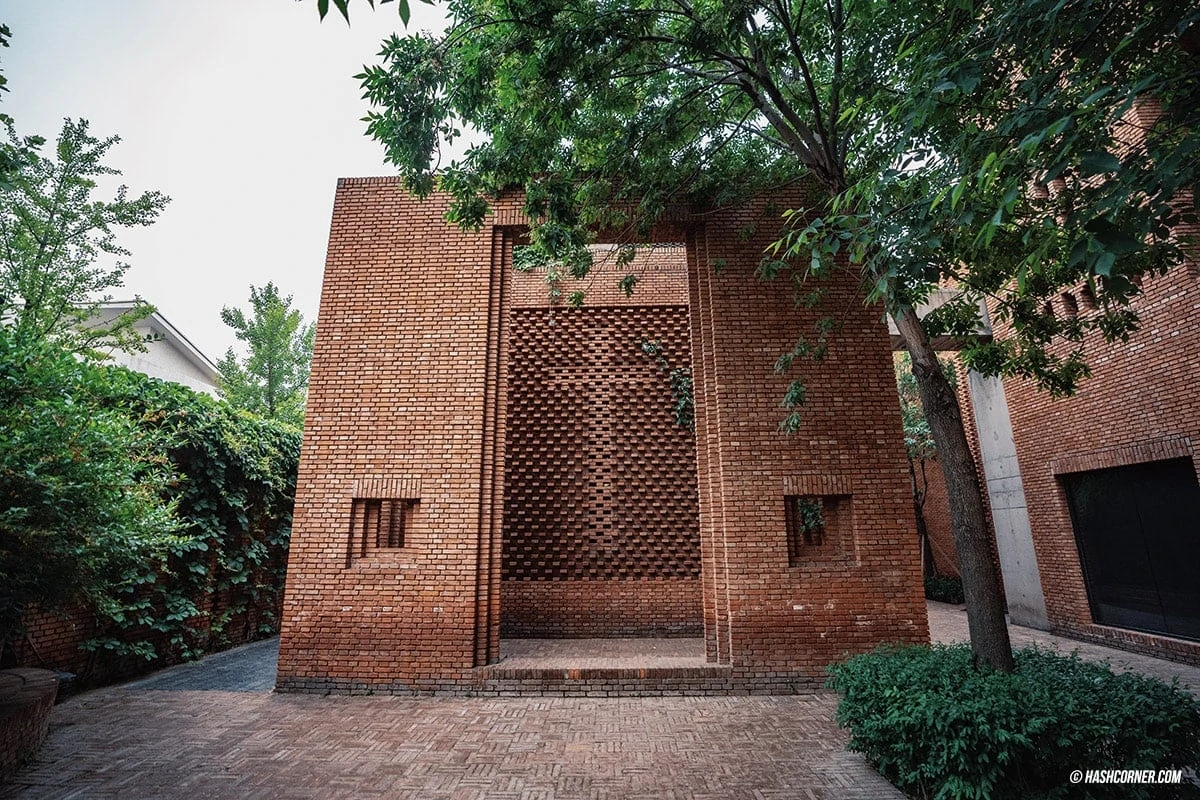
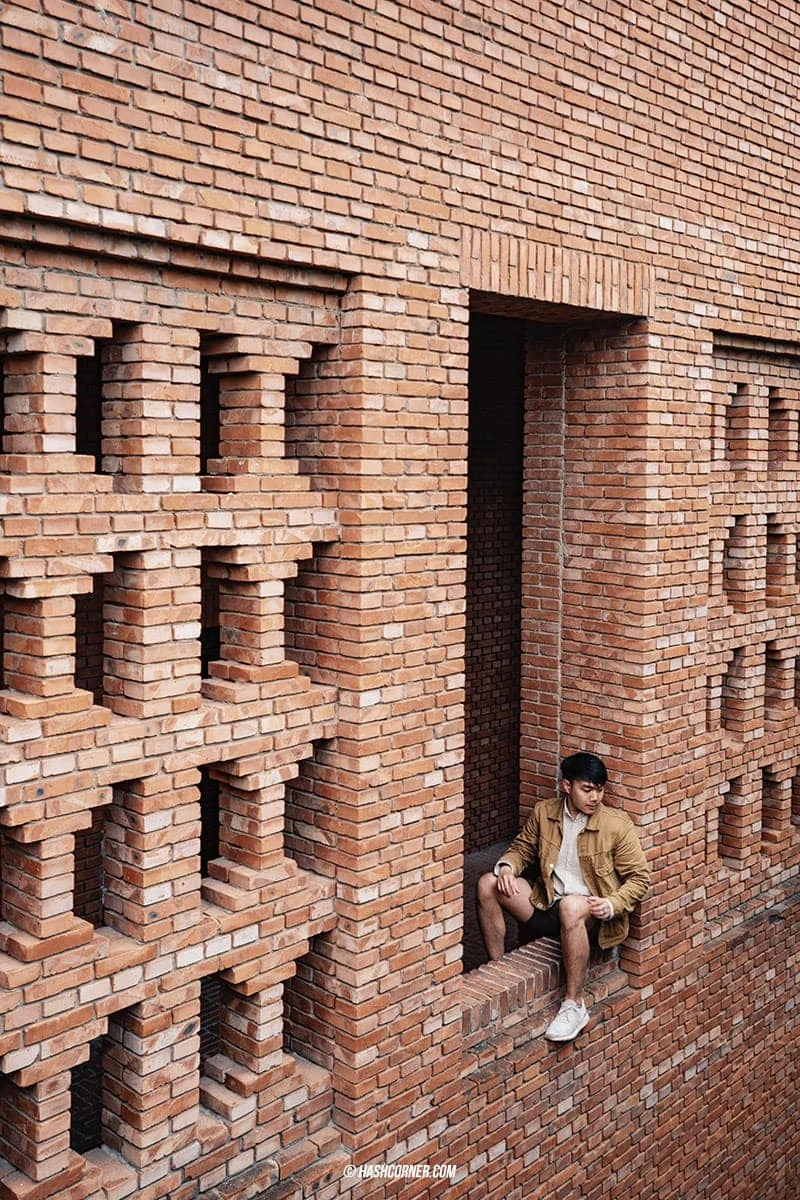
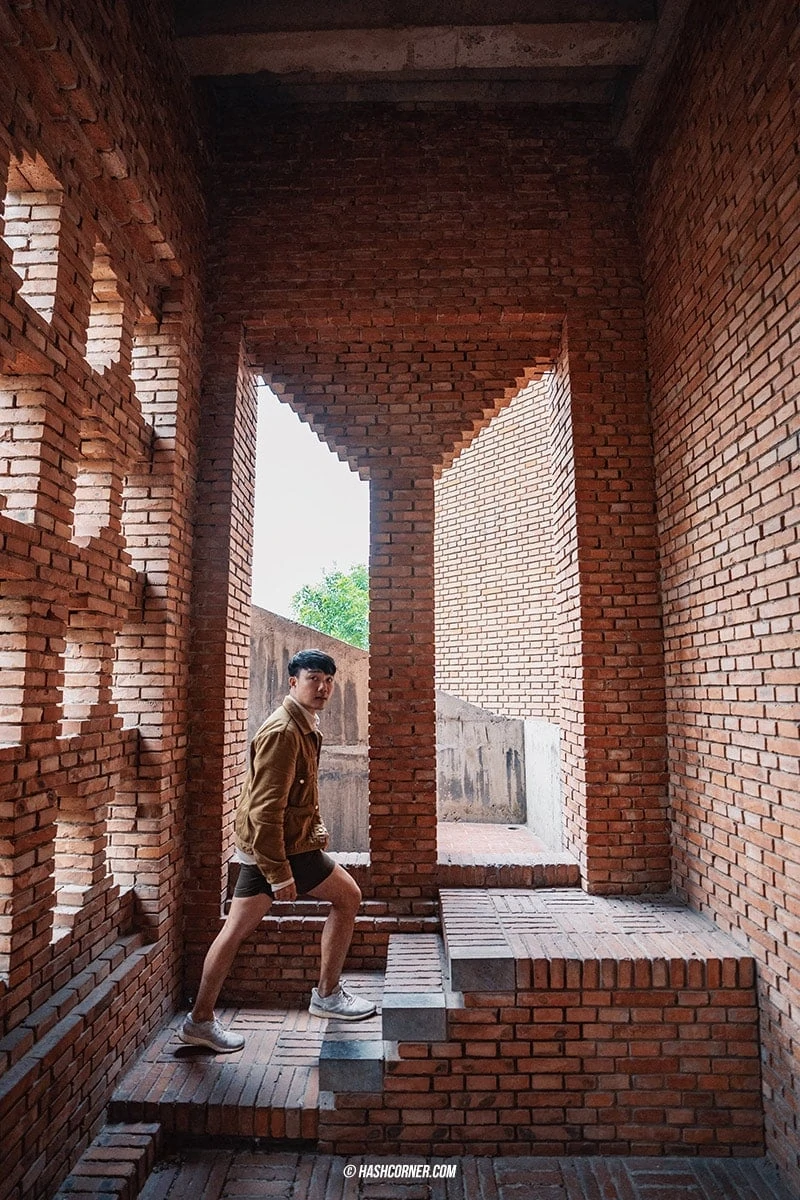
The popular photo spot that oftentimes posted on Instagram is the long walk path with a continually circular-pierce brick wall. With the sophisticated formation and design, this spot reflected to be a favorable target to take pictures when visiting the place. It looks awesome, don’t you think?
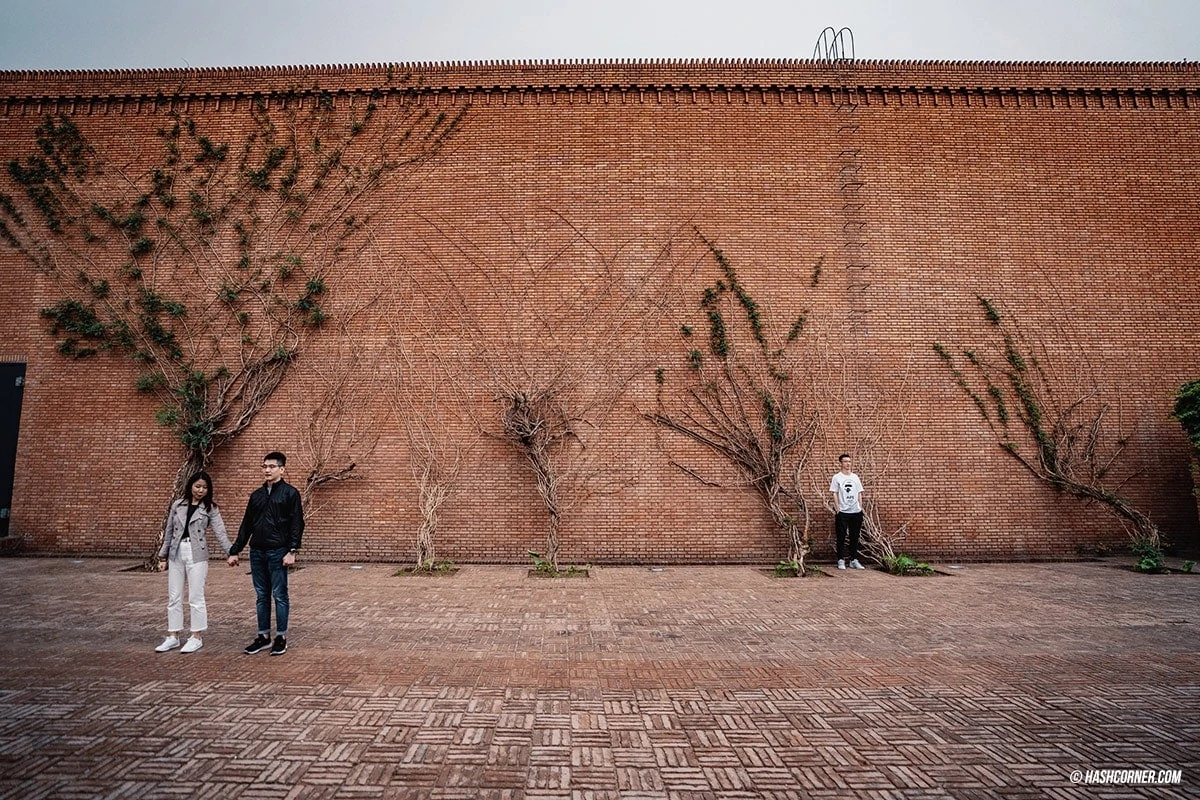
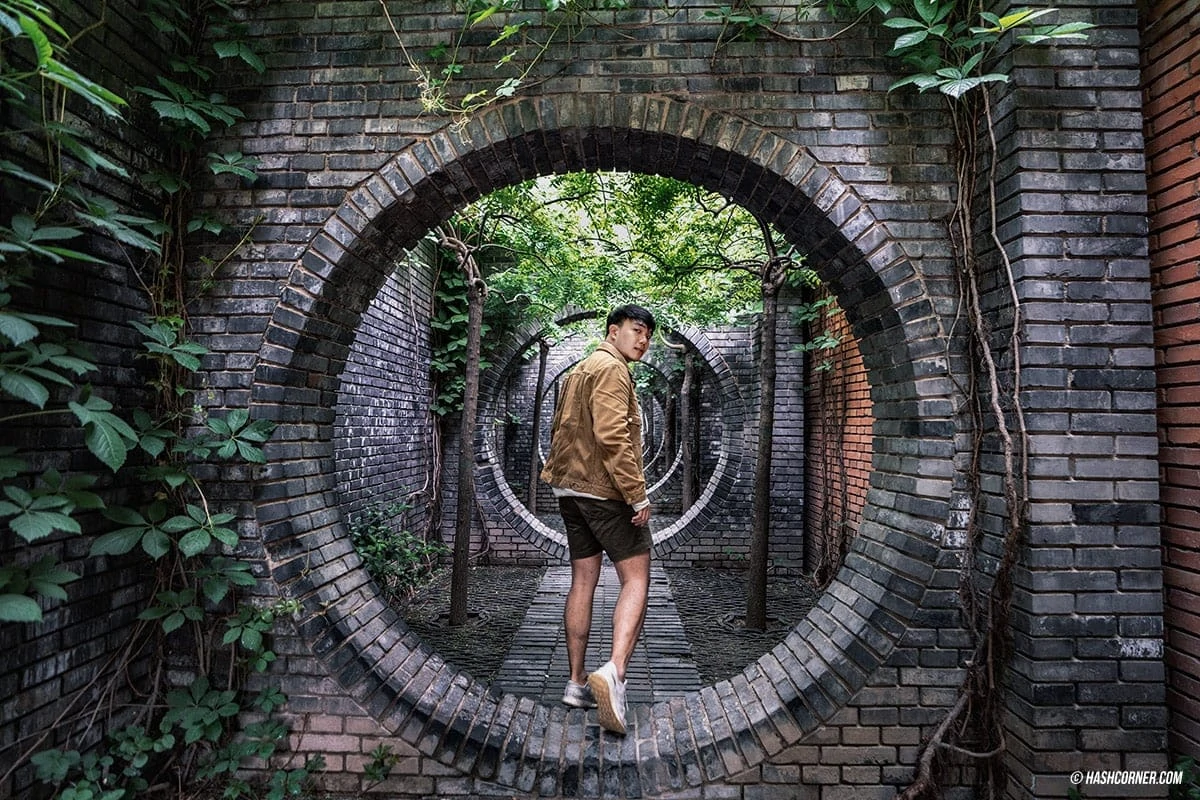
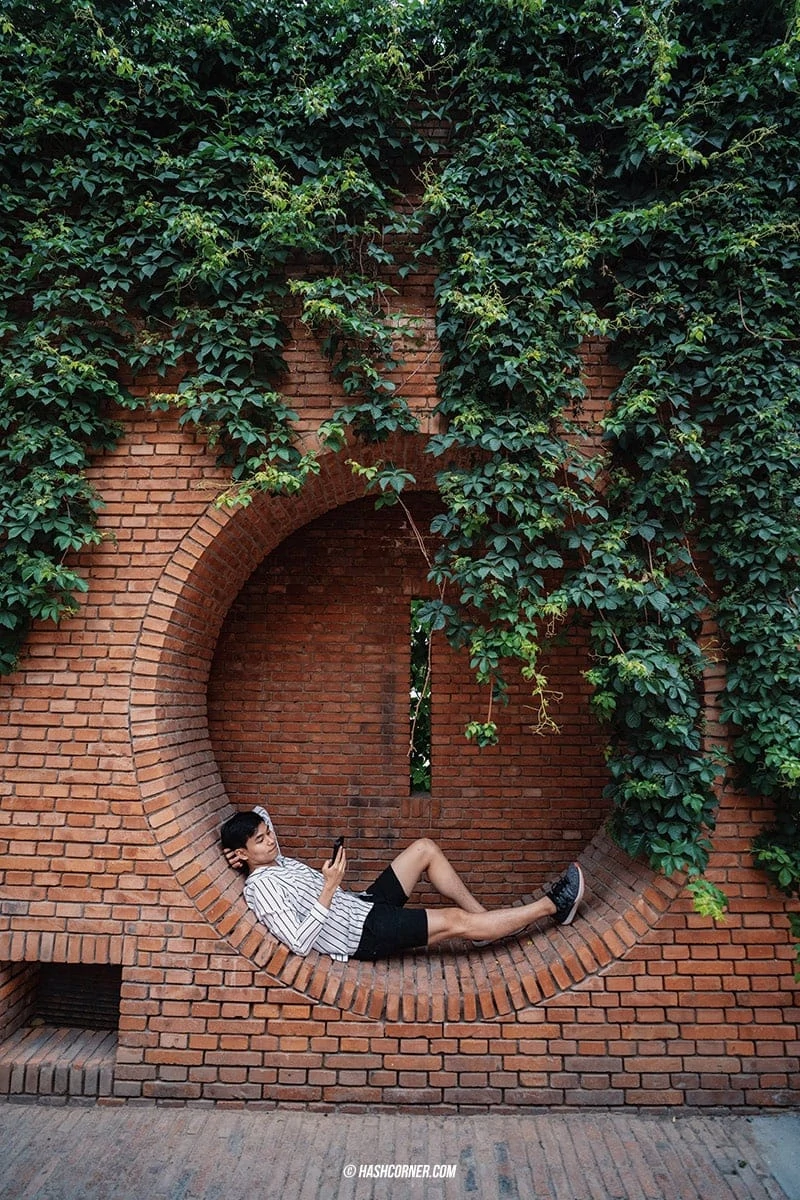
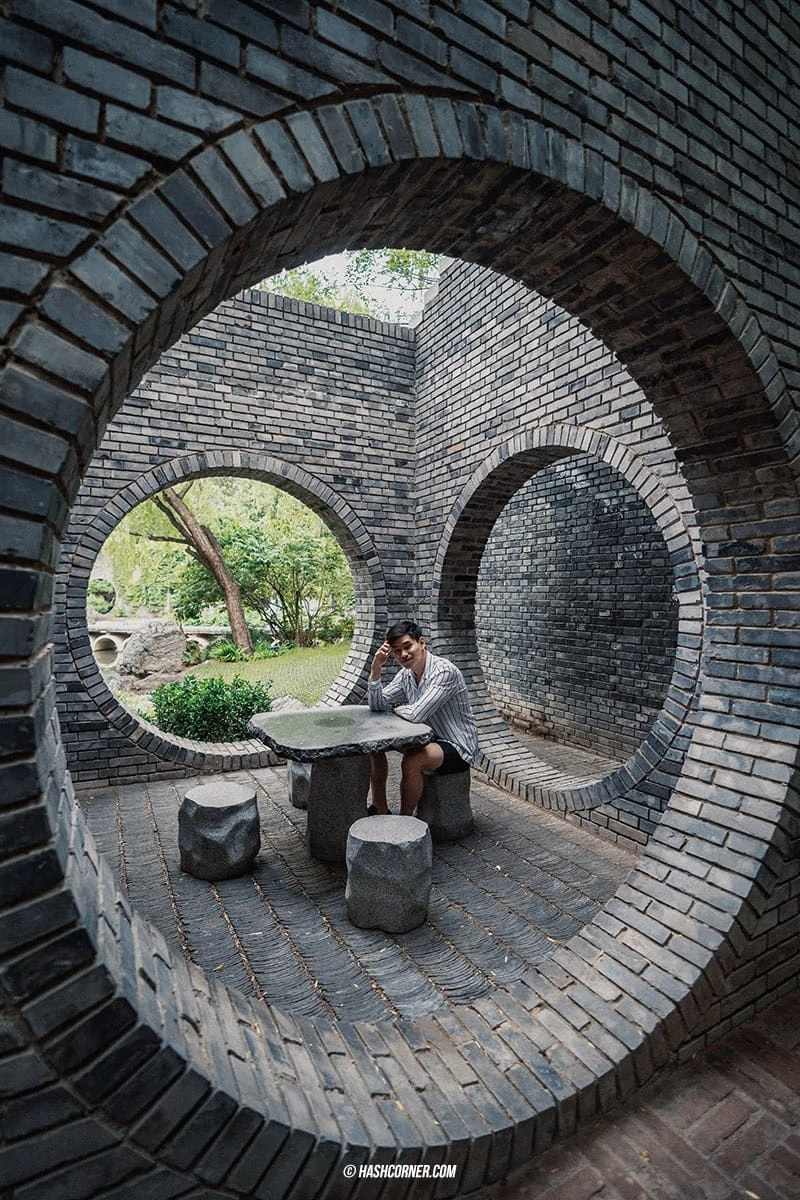
Qianmen Street
Even if it was late evening, but I didn’t feel like going back to the hotel yet. So, I continued roaming at Qianmen Street, where is adjacent to the Qianmen Gate Tower, located in the South part of Tiananmen Square. The traveling here is not complicated, you can take subway line 2 to get to Qianmen Station.
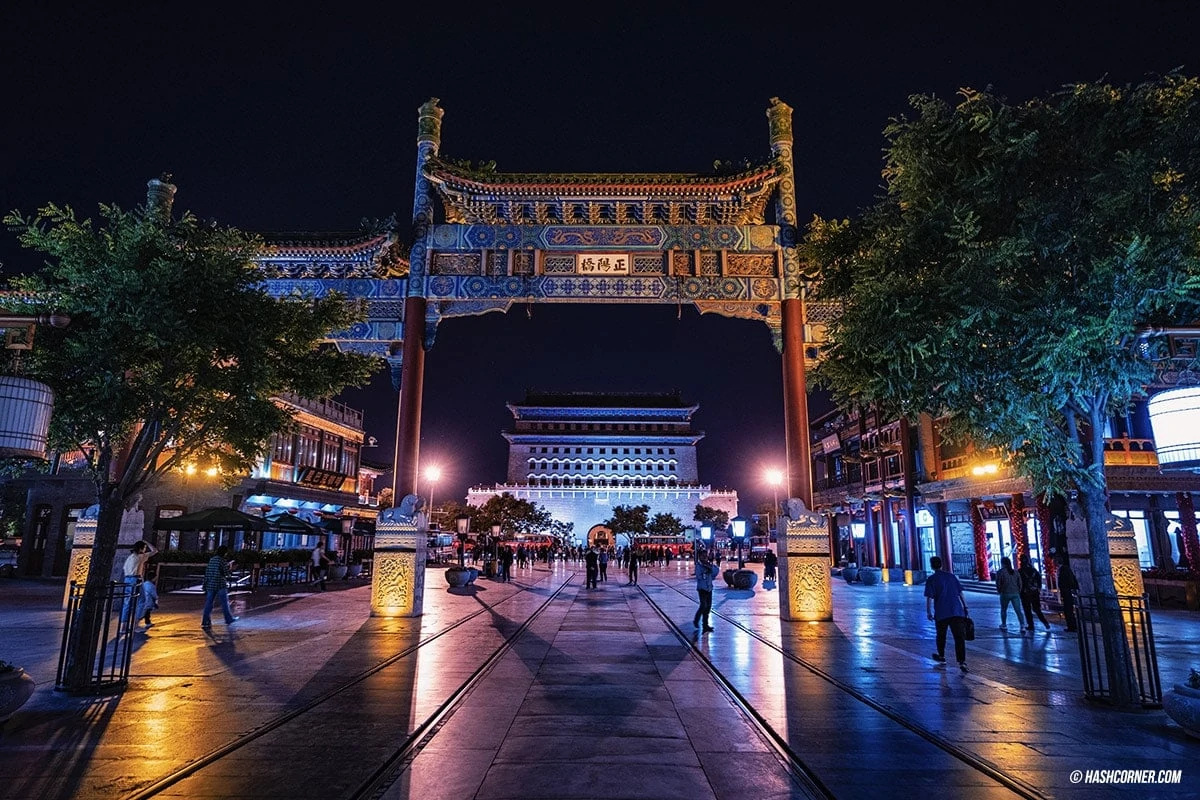
If you ask what Qianmen Street offers? It’s a shopping street. Those who aren’t satisfied with the shopping walk at Wangfujing Pedestrian Street. I suggest continuing on here. Personally, it depends on your requirement, if you want to do earnest shopping. Wangfujing Pedestrian Street is a better choice because of various product lines and many more best-known brands. But if you prefer the touching of an old town filled with ancient buildings in the Qing Dynasty period, Qianmen Street is your answer. For those who have time left like me, just experience both of them. LOL
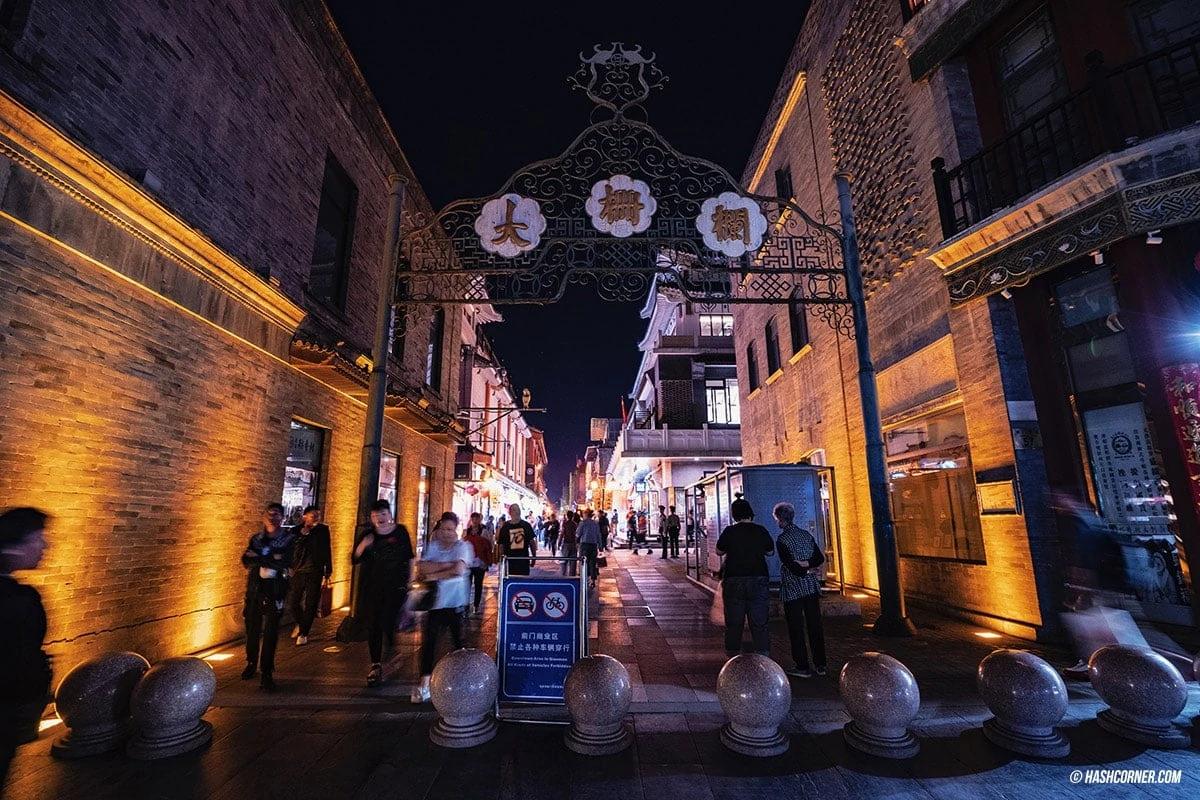
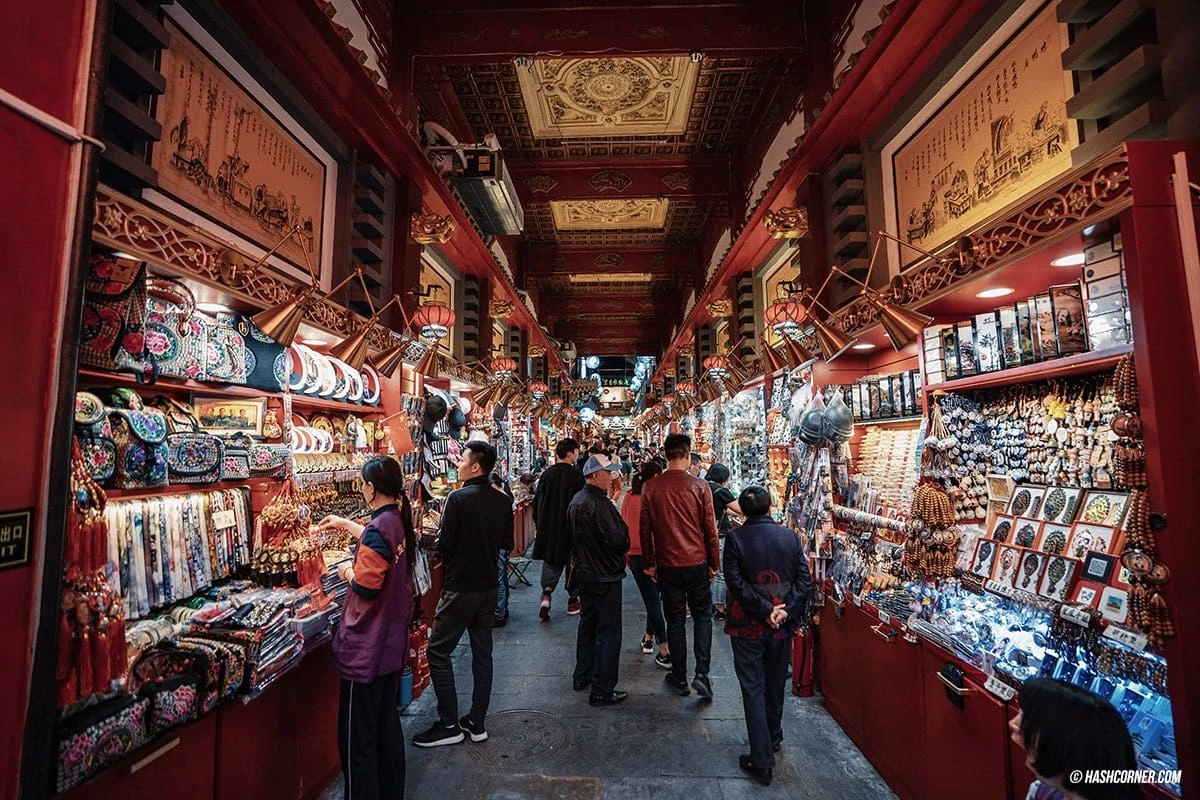
My purpose for visiting here was to traverse and sightsee the city. When I arrived, it was at nightfall, many stores were already closed. But there would be some alley from the main road I discovered, was still vigorous, Dashilan Commercial Street was like a bustling parallel world, providing shops, street foods, and crowded. I took this chance surveying around to find some food to eat. if you come to Qianmen Street, don’t ignore stopping by Dashilan Commercial Street as well.
Beijing Day 4
Great Wall of China – Mutianyu
It’s the 4th day of our Beijing trip. The whole day of the traveling plan is dedicated to the Great Wall of China. Our goal is to start off at The Great Wall of China – Mutianyu. The reason for selecting the Mutianyu section is due to the wall’s best-preserved condition. On my arrival day, the native visitors were less show up, most visitors were foreigners, which made quite an unexpectedly small amount of people. Plus, I could travel by public transport as well! I’d been researching for some time about where to stop. Consequently, I finalized my destination for the mentioned reasons, which is Mutianyu Great Wall.
Questioning about the history of the Great Wall of China. Well, you have to recall for a prolonged period, it’s more than 2,300 years! During the pre-period of the Emperor Zheng of Qin, each state of China had both small-large factions, and all constructed fortifications to defend their own borders from opponents. But when Qin Shi Huang of Qin state conquered war and unified all states into China, he established himself as the First Emperor. He ordered to connect the wall of every state until the wall became longer than 5,000 kilometers. The people named the wall as ‘Ten Thousand Leagues Long Fortification’ (Wan-Li Changcheng / 万里长城) which we are familiar with. The word ‘Li’ means half of ten thousand, it literally was the wall length in that era.
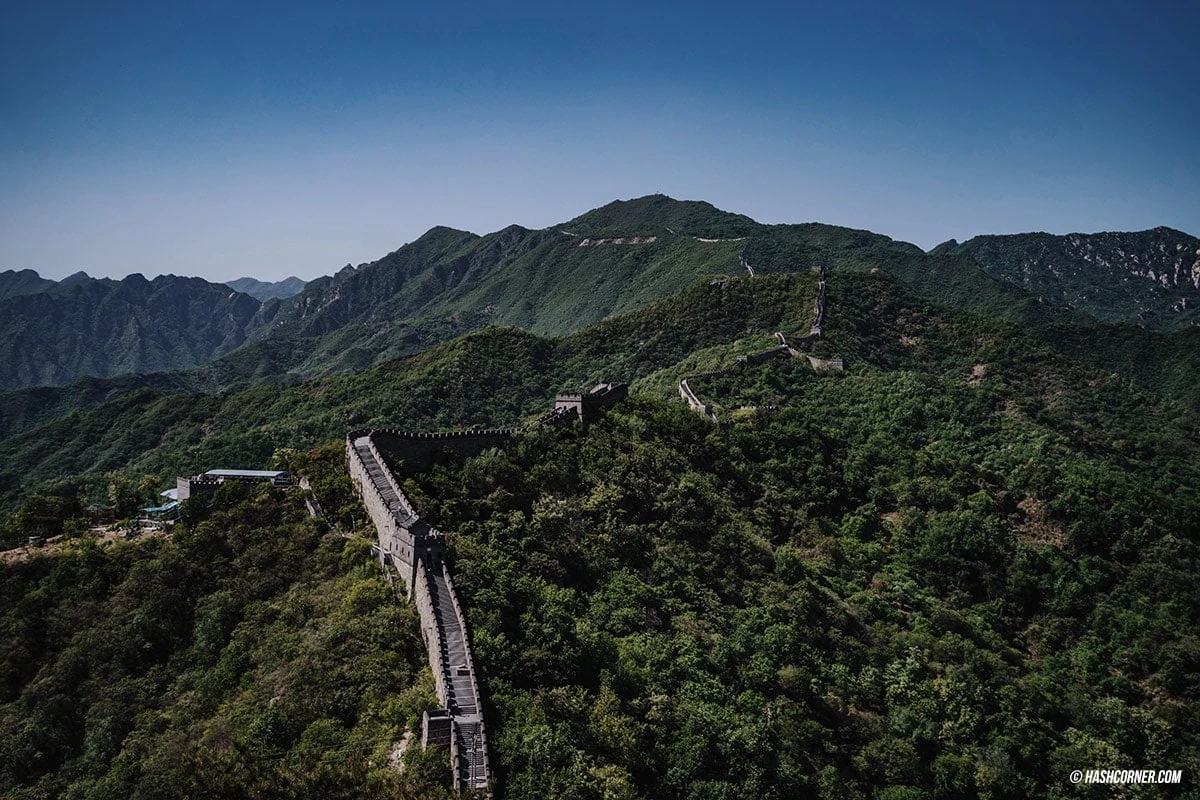
From the Qin Shi Huang era, the city wall had been built and extended for more than 2,000 years, particularly in the Ming Dynasty that repaired and reinforced the Great Wall of China, especially the famous section of the Great Wall whether it is Badaling section, Mutianyu section, or even the tourist popular Jinshanling section. All of these Great Walls had materialized during the Ming Dynasty.
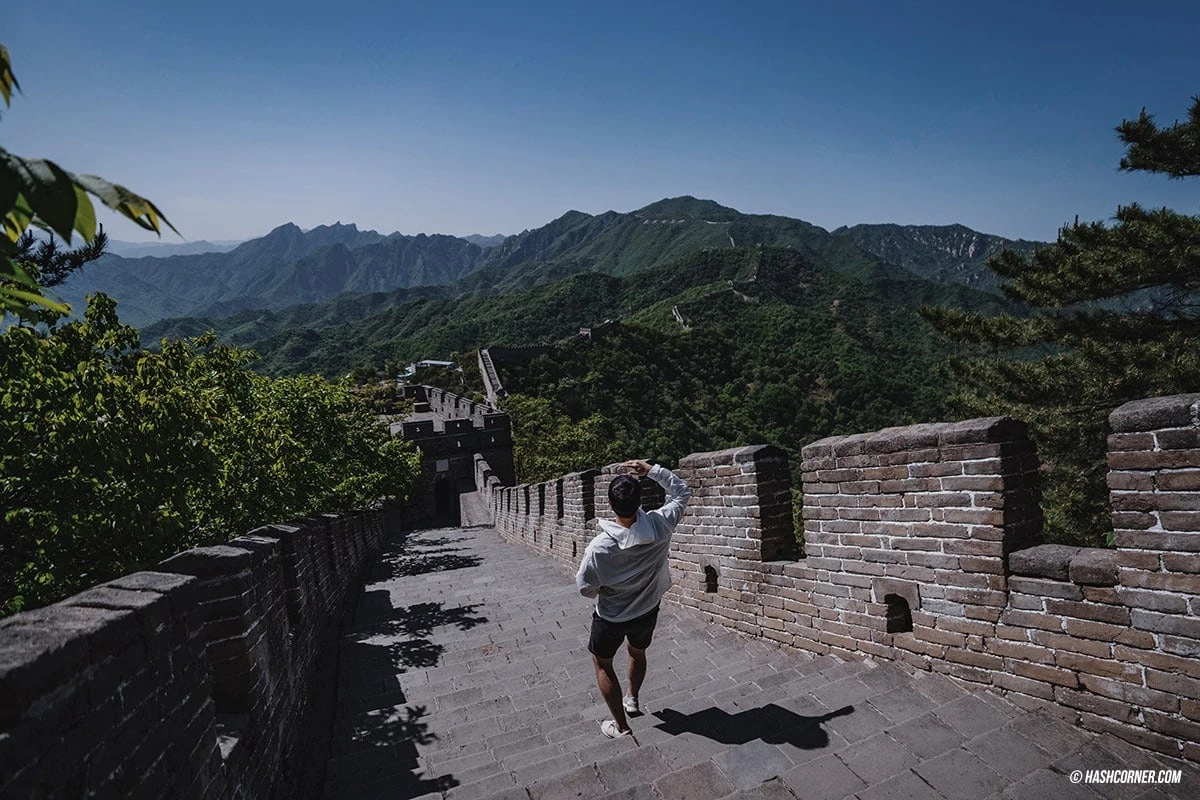
Whoever questioning on how different between the Mutianyu Great Wall with the other Great Walls? To be frank, I don’t know too! Haha. Because I stopped at only one section so I can’t compare which one is better than the rest. But the most visited section is definitely the Badaling Great Wall, as it is the easiest way to travel from Beijing downtown (I think), its surely more crowded, plus, local tourists choose to start at the aforementioned point a lot. So I first crossed Badaling out of my list. LOL
Once you arrive, buy a ticket and get to the Great Wall of China! Aside from paying the admission fee for 45 RMB, there is also a separate ticket whether to walk on your own (free), take a cable car – single trip (100 RMB), cable car – round trip (120 RMB), or cable car – slideway (120 RMB). OFC, I was lazy to walk up and down, so I chose the ticket type of cable car on a way up and take a slide on a way down. It looked thrilled and fun. As for my German companion. She chose to walk up and down by herself. So, we separated here.
When I took the cable car up to the Great Wall of China atop. I saw the wall stretching along with the mountain complex. It looked amazing, but it was a little regretful that the sun was very strong and hot. Causing me to reconsider my walking route, I walked the right way and climbed to the end of Mutianyu Great Wall. Then, walk back to the left (But not walking all the way because of its length. It was too exhausting. LOL)
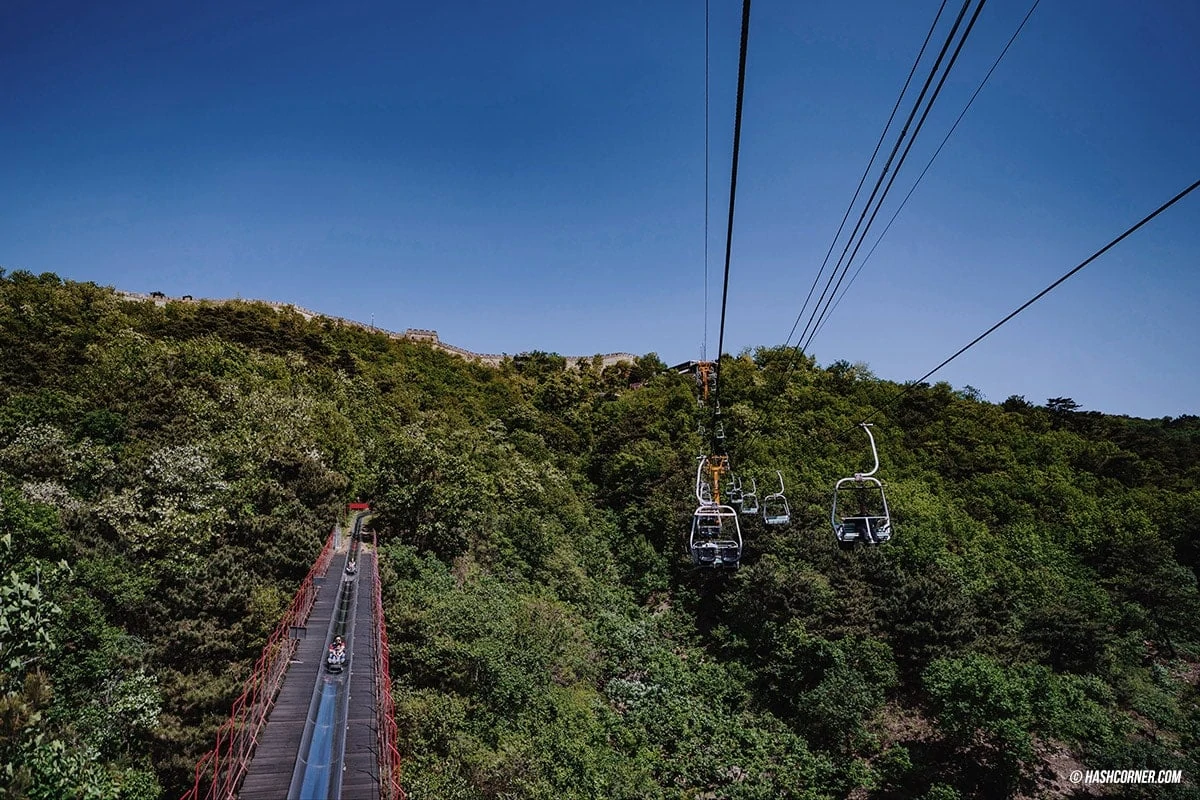
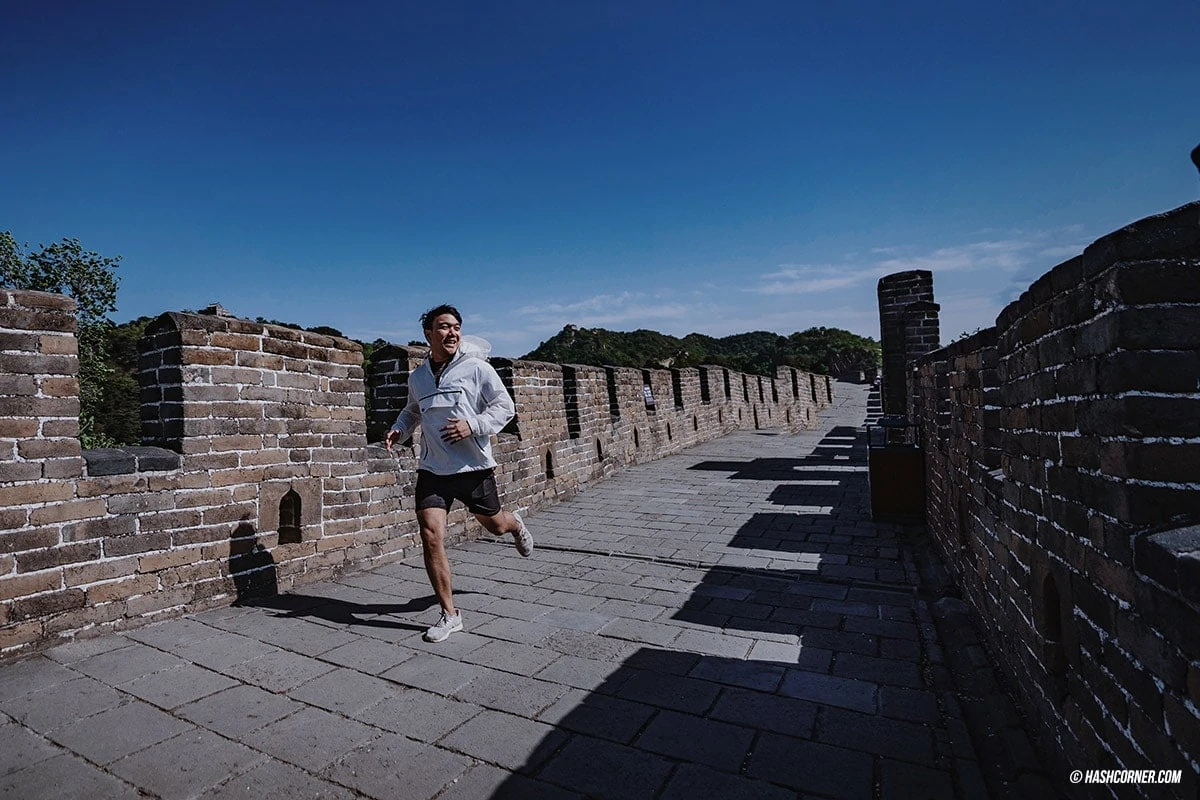
Great Wall of China – Mutianyu is considered a very beautiful checkpoint, uncrowded, and serene. Regarding the maintenance of the Mutianyu section of the Great Wall is praised to be the most complete restoration with excellent condition (more than the other sections of the Great Wall). The path is wide and easy to walk. There are only some steep stairs that causing troublesome. But overall, the Mutianyu Great Wall is very good. With a round-trip cable car that is comfortable and suitable for a lazy person to climb up like me. Moreover, it saves time too!
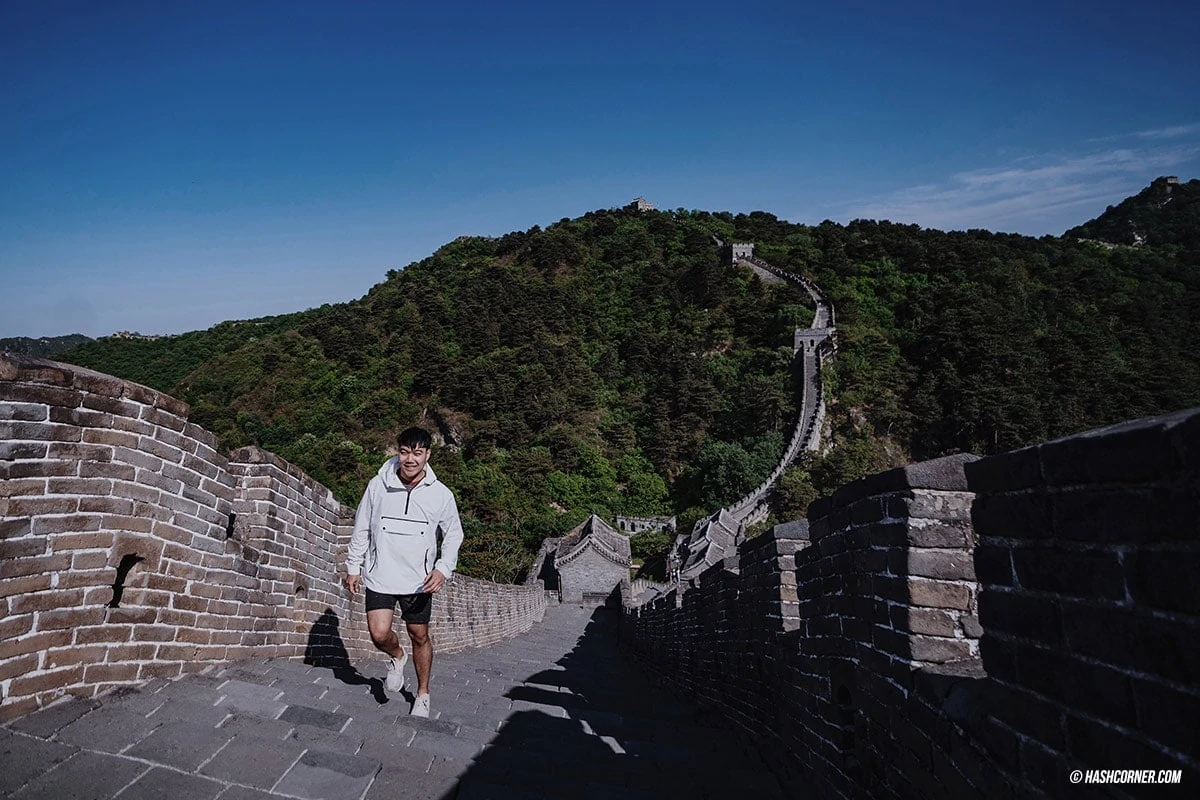
⚡️Those who want to visit the Great Wall of China – Mutianyu, the perfect timing to visit during the year is the Spring and Autumn time. Because all trees in the mountains will bloom in spring, and turn orange-red in autumn. If you prefer Summer (as shown in this trip review), you may see green everywhere. Hahaha!
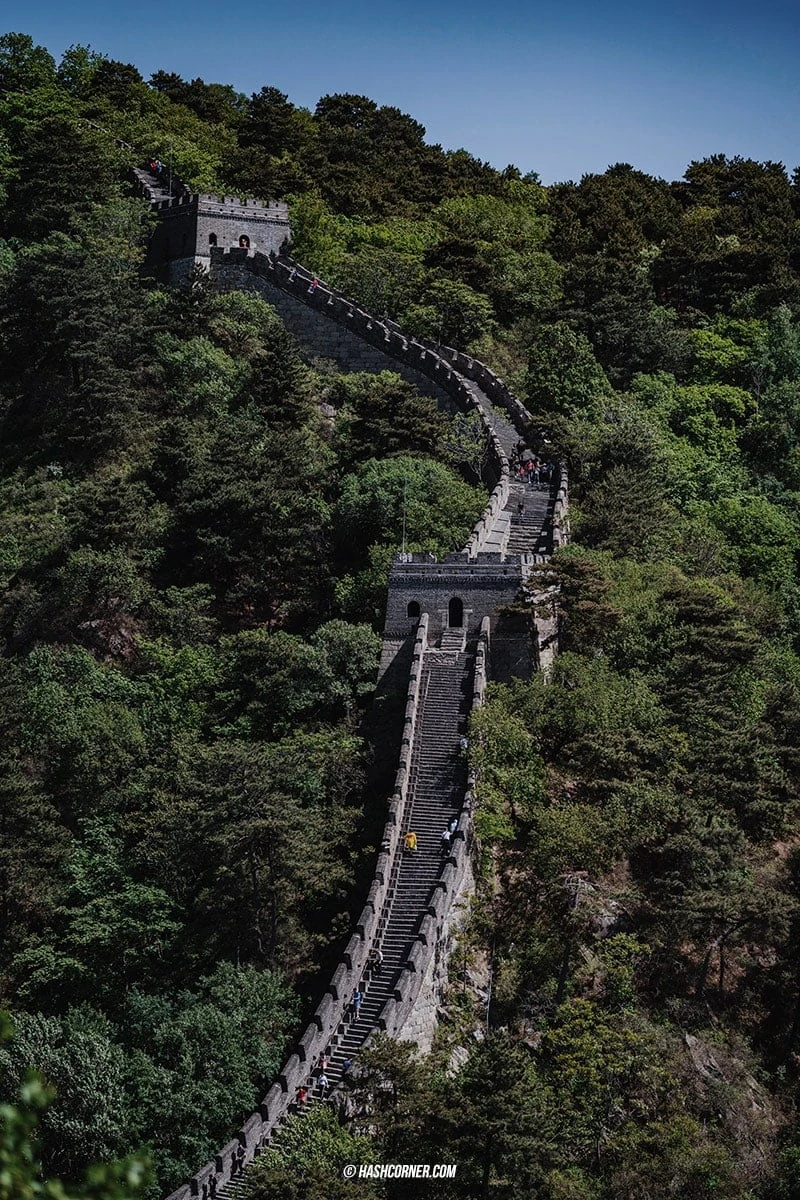
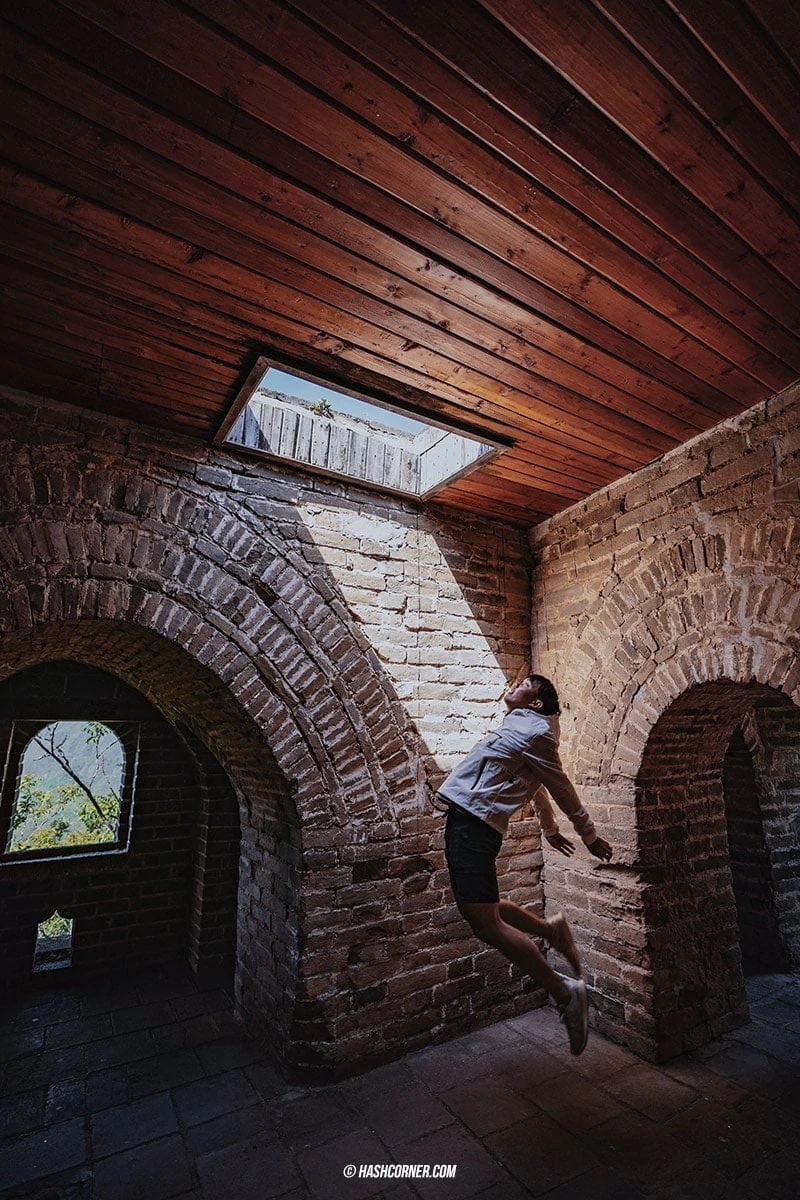
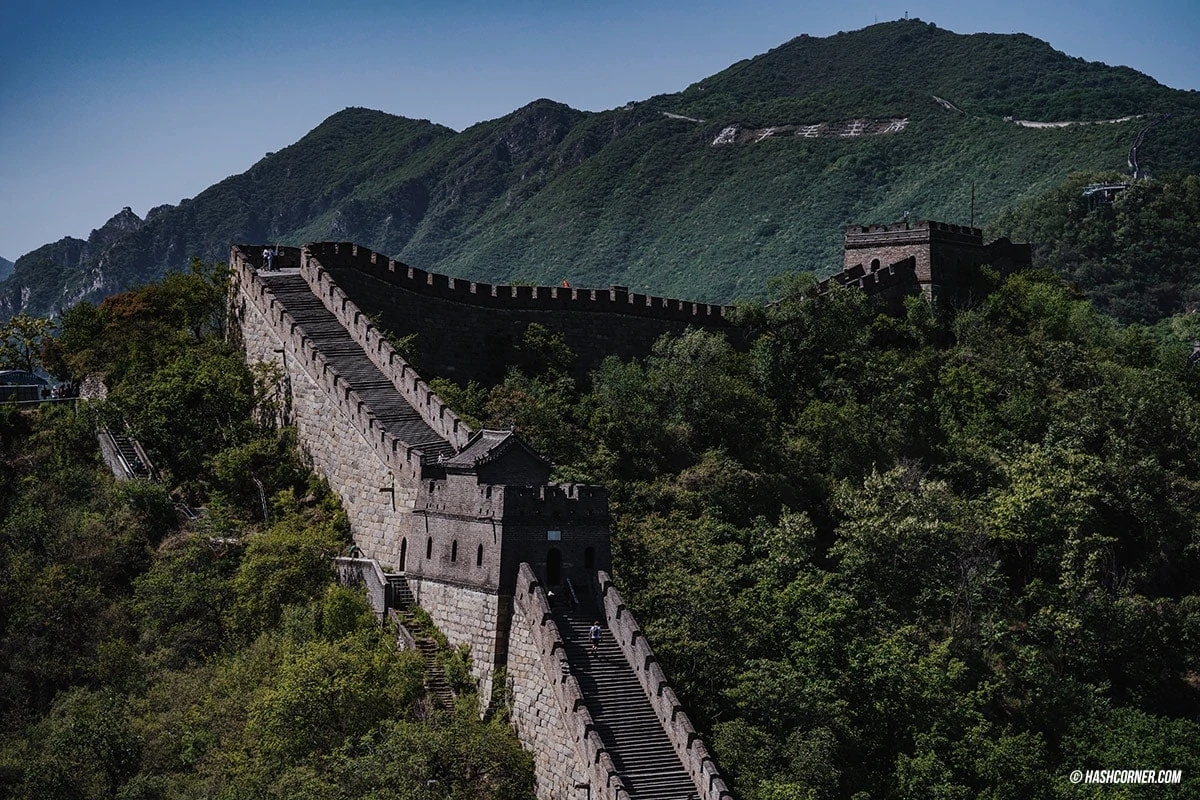
Walking until feeling stiff, it was time to take a slide from the Great Wall of China to reach the bottom point. The ride, a seemingly thrilling but not at all, it was quite fun. The cart provides a joystick to control the flow and brake. The way down is a good winding, not dangerous. If you’re still young and crave excitement. Try this one! LOL
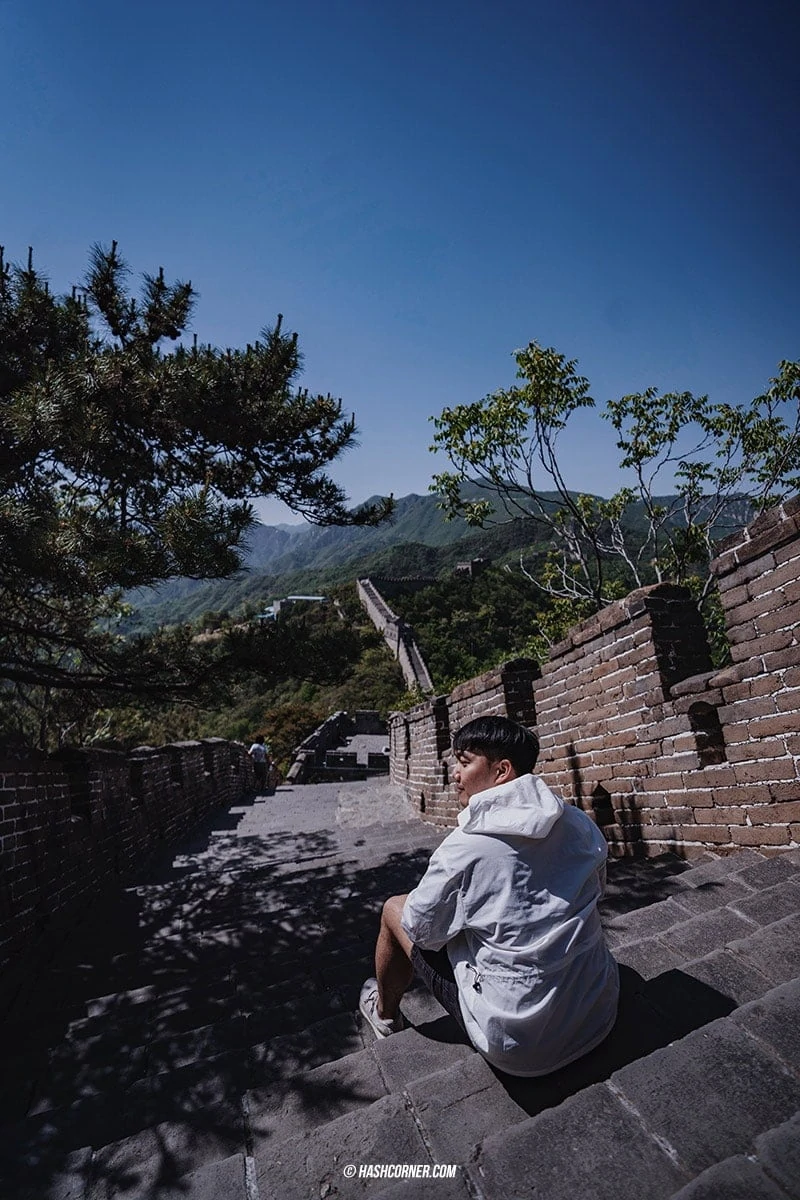
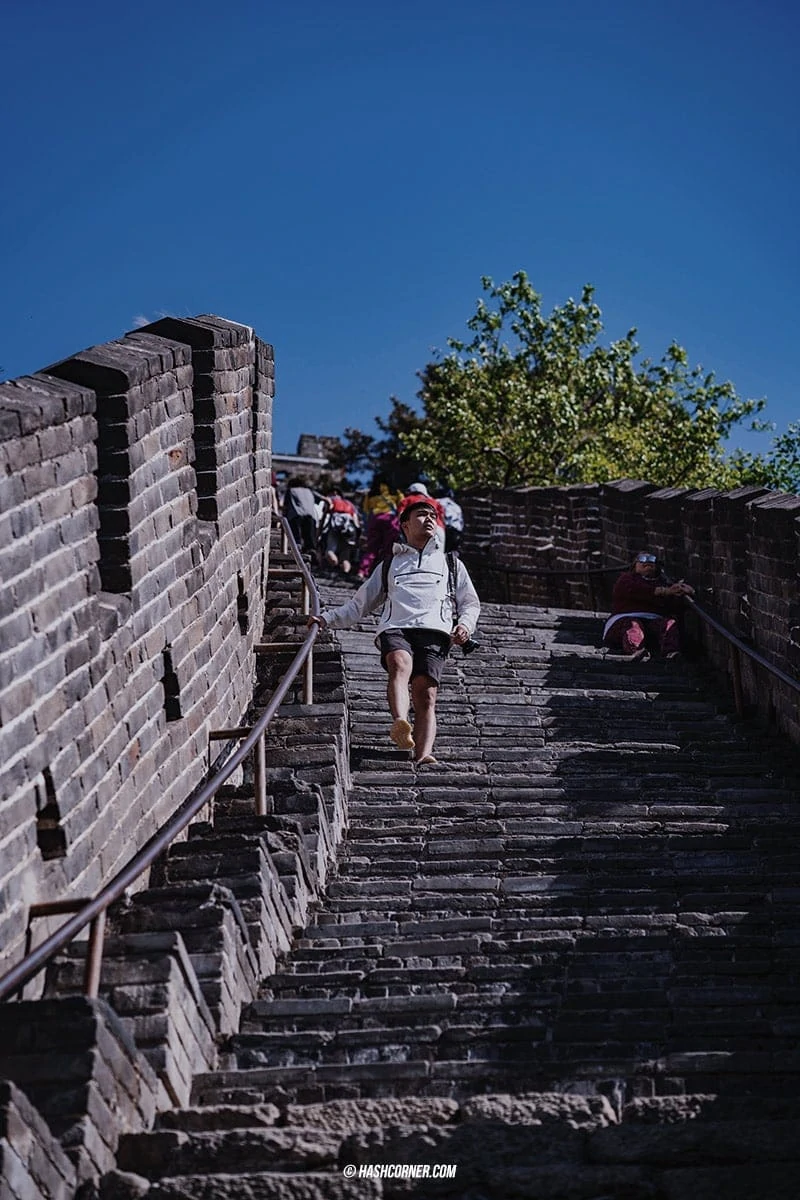
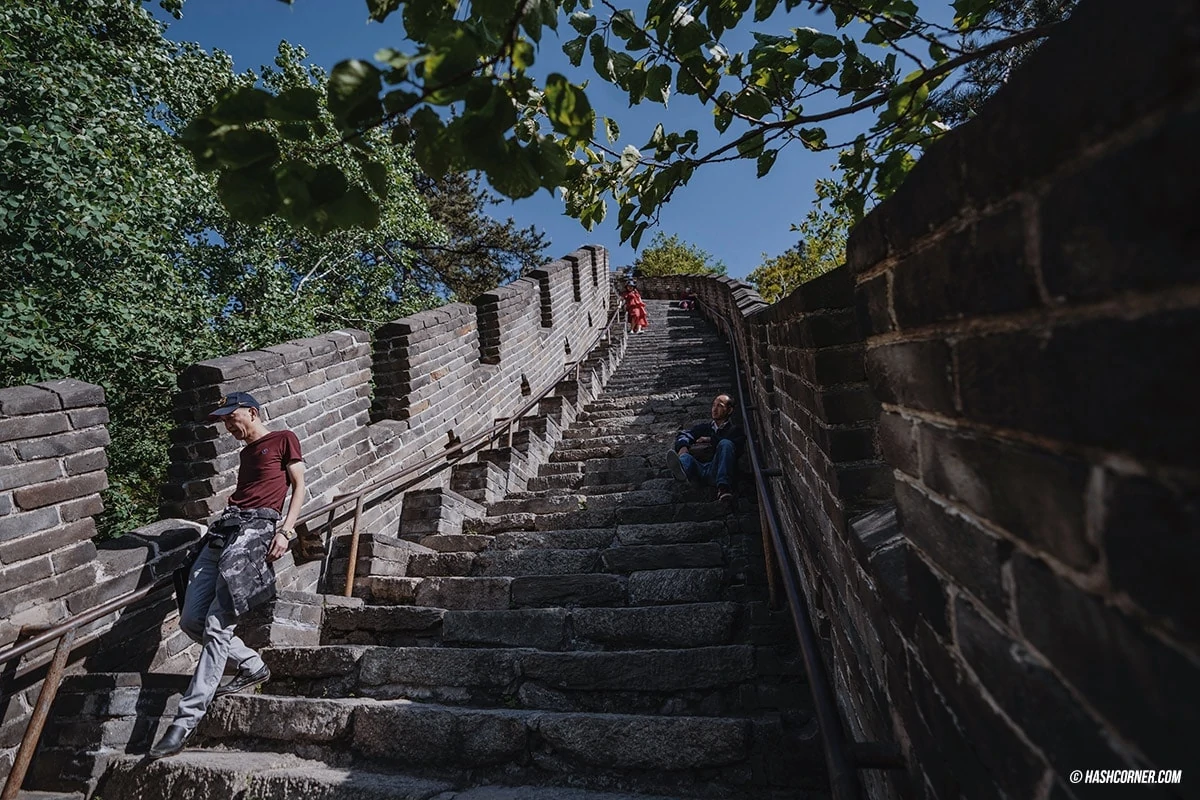
The return trip from the Mutianyu Great Wall to access Beijing downtown. For those who choose to take a bus back, you have to walk from the ticket office about 300 meters, walk past the roundabout to the left. There will be an H23 bus stop where you can get on a bus and drop off at the Huai Rou Bei Da Jie (怀柔 北 大街) bus stop. Then, wait for the bus line 916 Express (Chinese: 916 快 / 怀柔 方向), and take a long ride until getting off at Dongzhimen Station. Then, departing back to the hotel. Seriously, the Great Wall of China took one-full-day. It was a bit exhausting but worth the experience. I strongly recommend visiting this historic site.
Beijing Day 5
789 Art District
On the last day of our Beijing trip, I’ll introduce your leisure time with only a half-morning plan at the 789 Art District. After that, just wander around because we’ve been through a lot since the earlier days. LOL // Considering which district is modish and wise in Beijing. I’d like to raise this position for the 789 Art District. Because it is a place for arts, cafes, galleries, trendy shops, street art, and various Installation Arts. If you’re an art lover, unquestionably, you love it here! I personally agree this place is even cooler than in Shanghai.
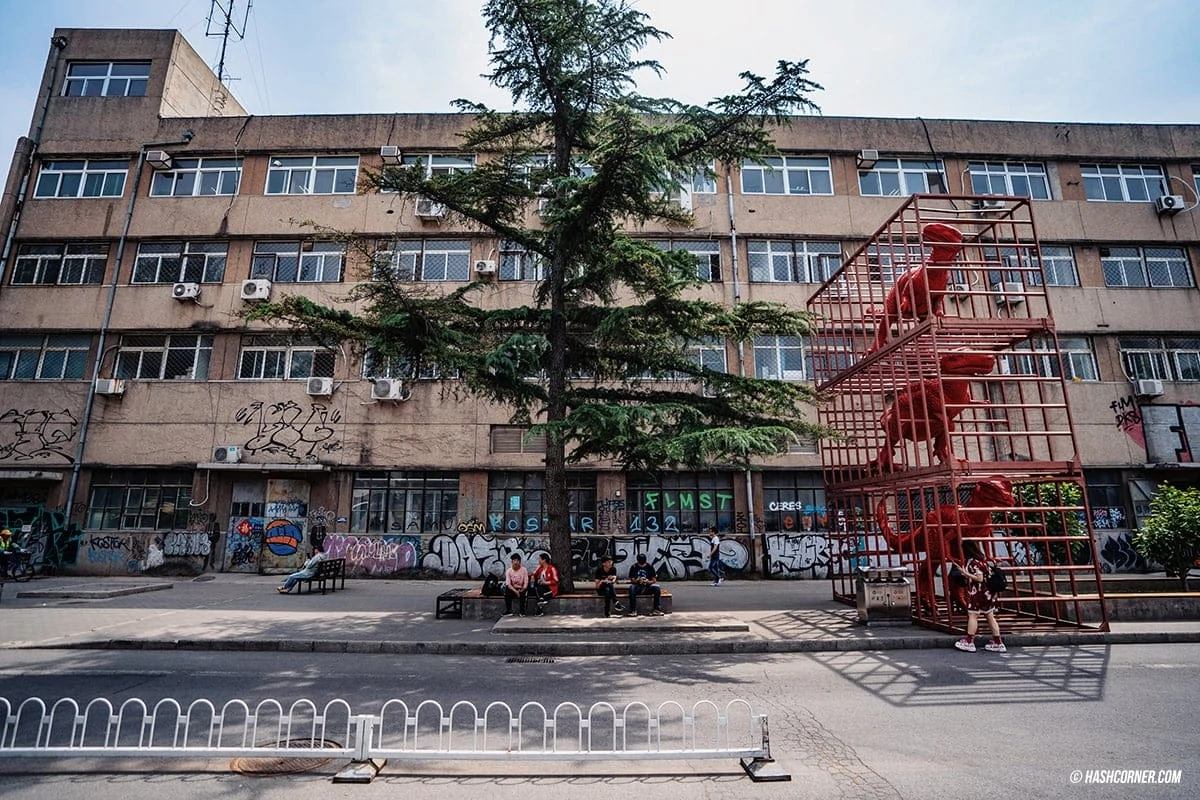
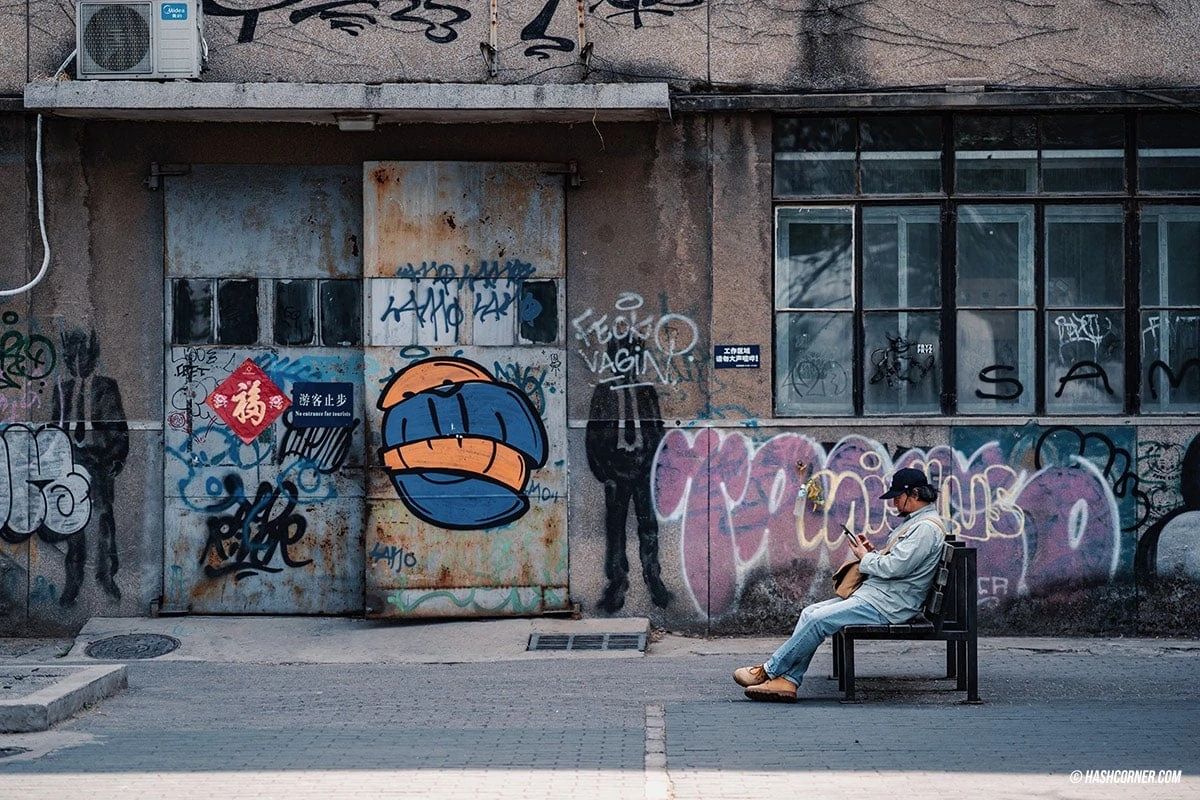
Before becoming the 789 Art District, it used to be a neighborhood where the joint factory of military-industrial cooperation between China and the Soviets was organized, later, was subsequently changed to cooperation with East Germany. Therefore, the architectures that you see in the 789 Art District are mostly influenced by Germans, Bauhaus style, which emphasizes spacious interior space + natural light to make the building look airy and comfortable. As time passed, the factory began to move out and shut down, so artists, designers, and art organizations set up to occupy the area and open it as a gallery, art studio, as well as shops and eateries. I must mention first, 789 Art District is large-scale with more than 400 shops. Supposing you plan to visit half of it, one day is not enough, haha.
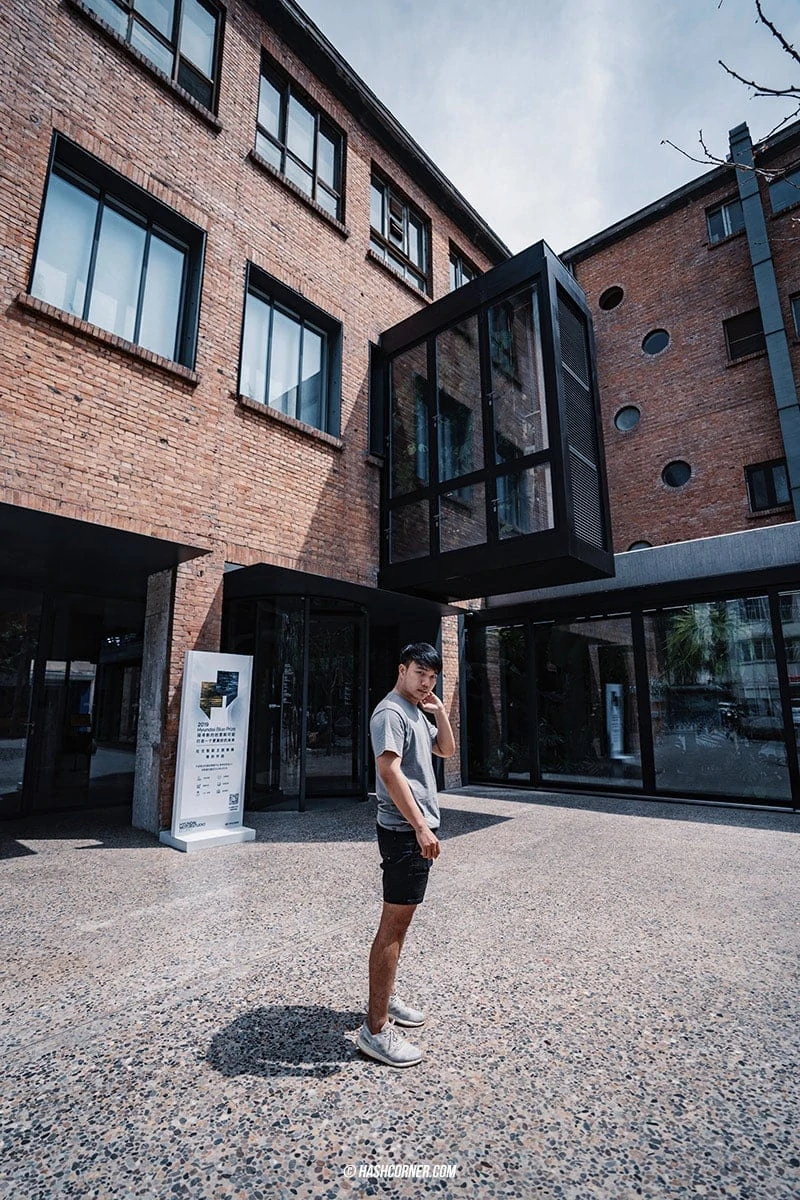
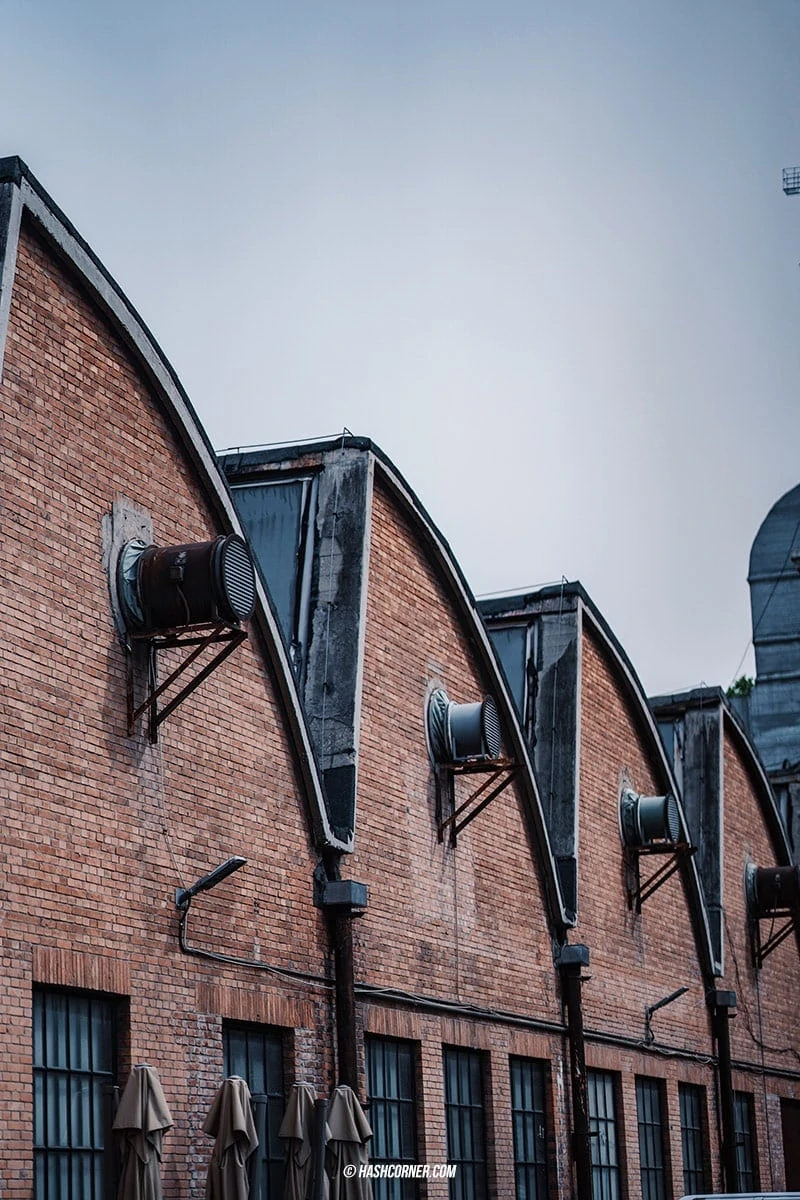
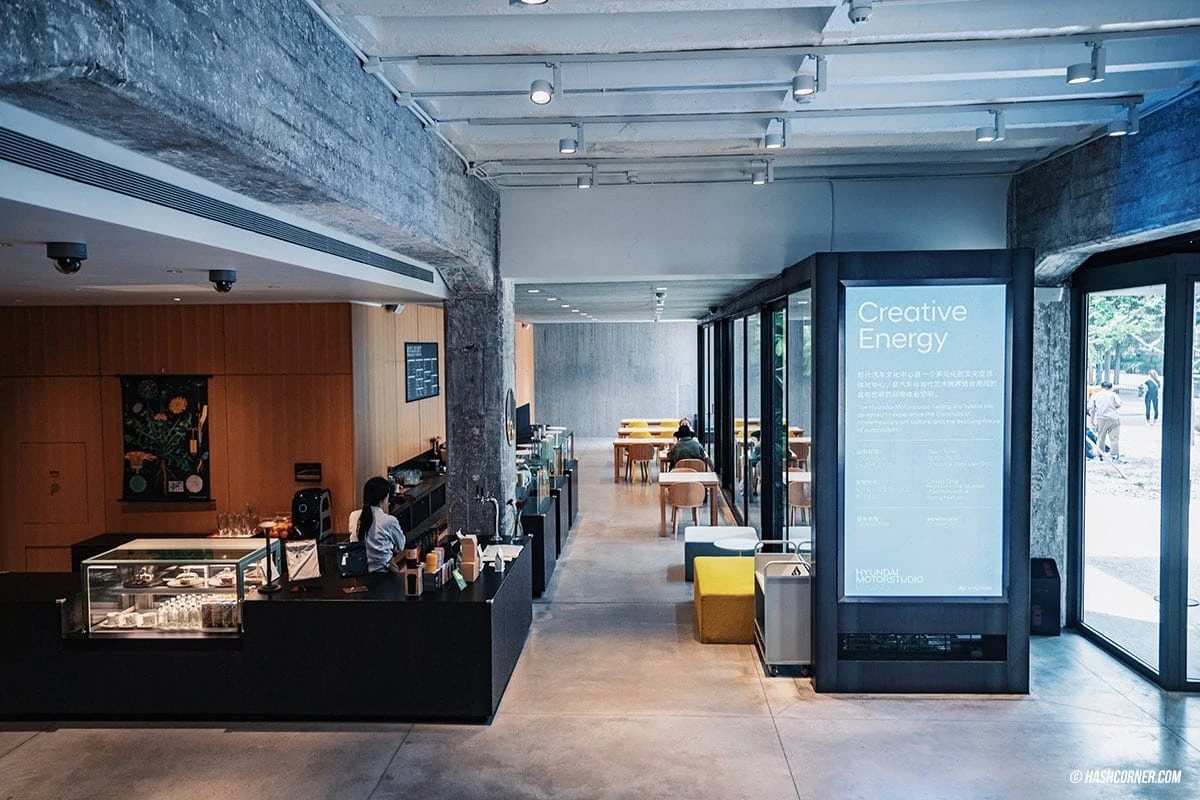
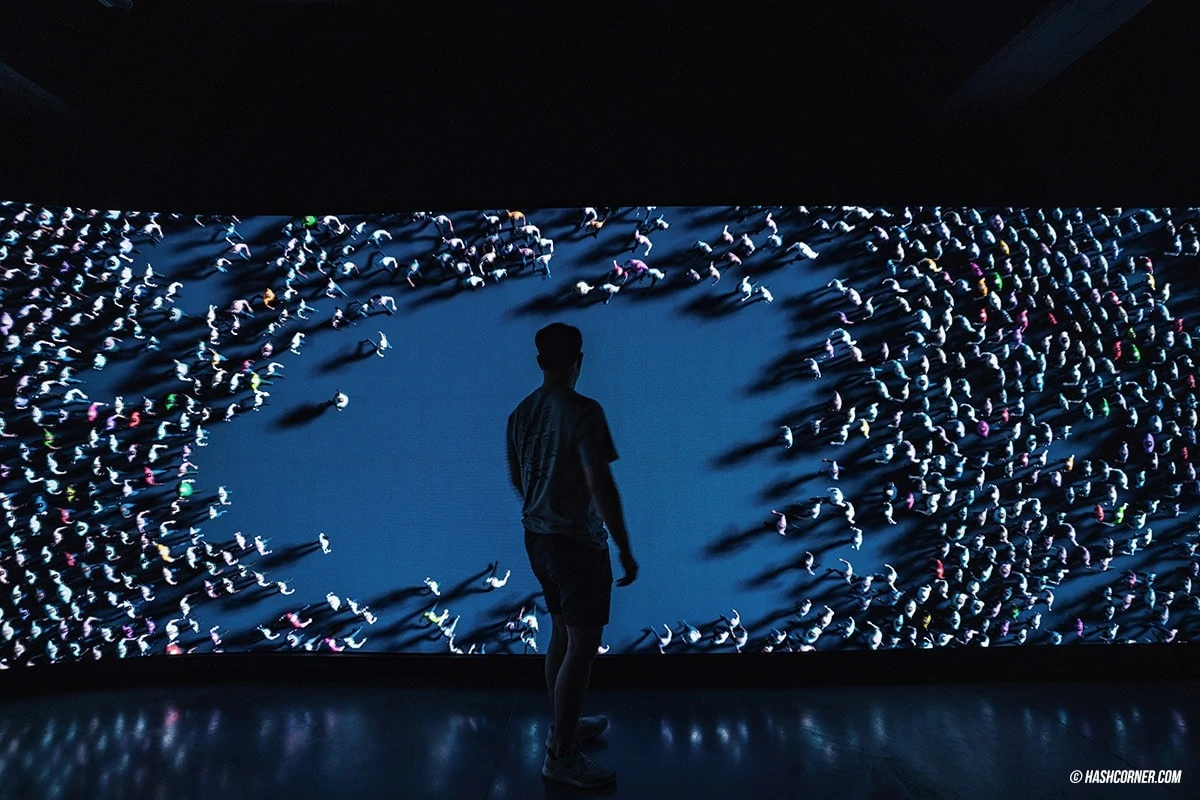
Too much of a choice! I had no idea where to get in first? Actually, this depends on your liking. If you’re a café hopper, the place offers chic design cafes that spread-out all-over area, a photo taken around here are never disappointed too. But if you yearn for an art gallery, I suggest coming to the Ullens Center for Contemporary Art (UCCA), where organizes an art rotating exhibition, including shop for selected items. Don’t ever skip this!
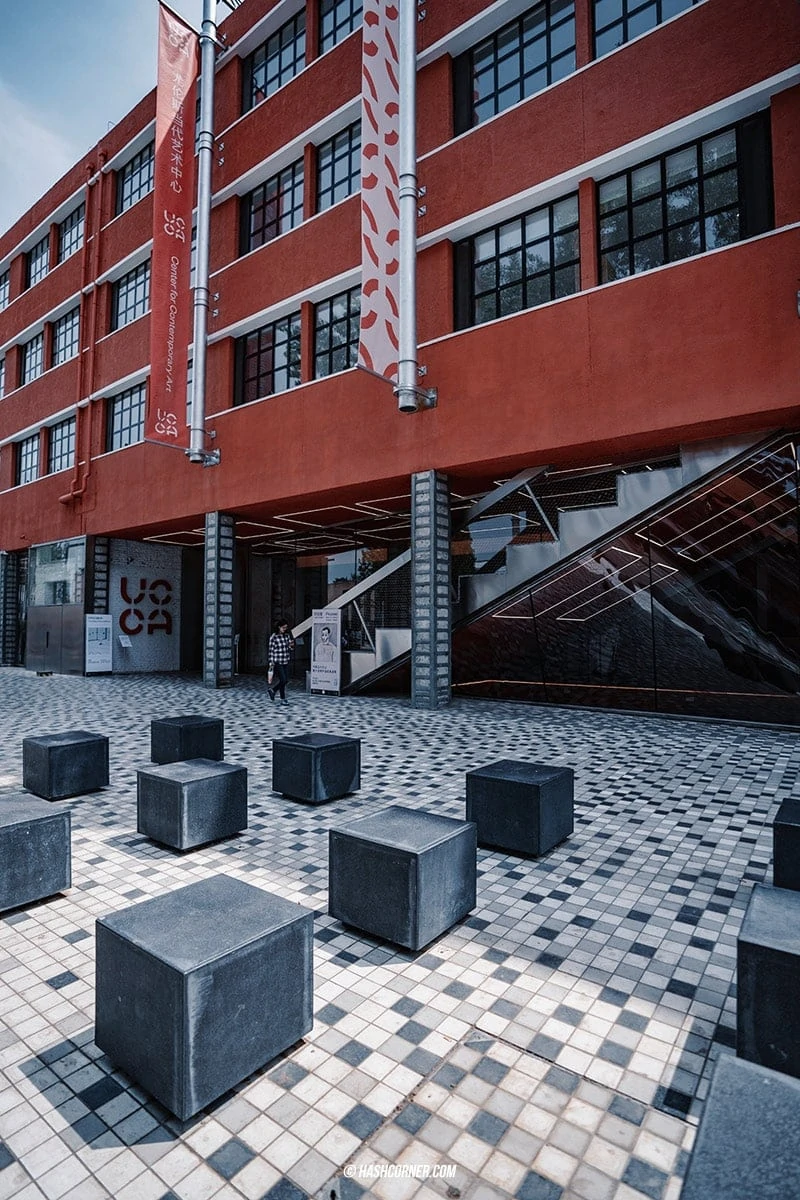
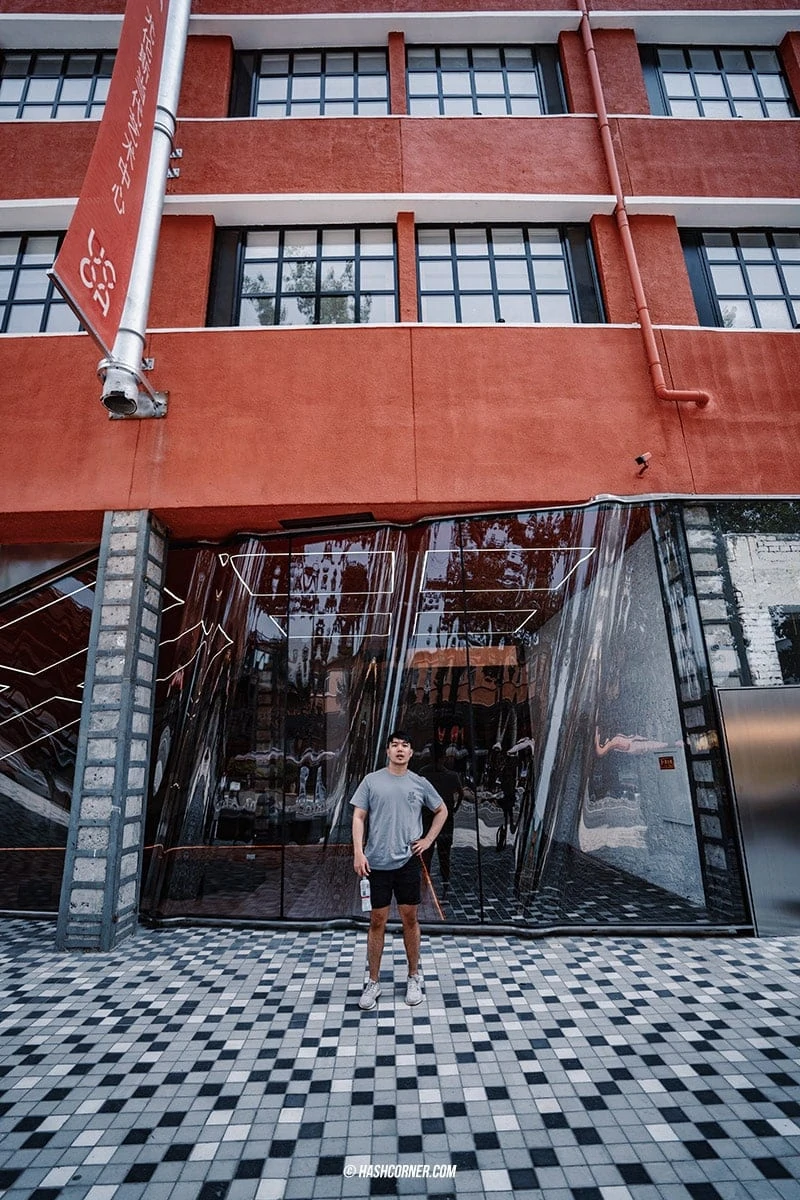
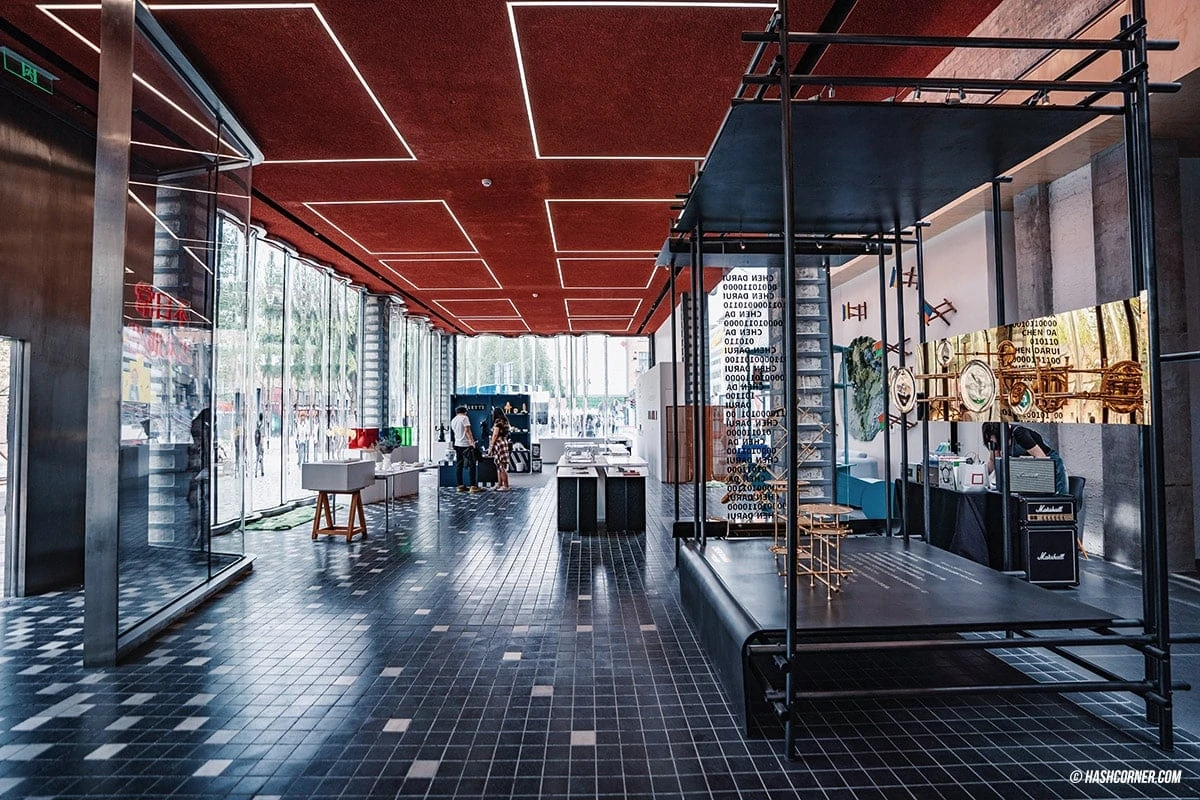
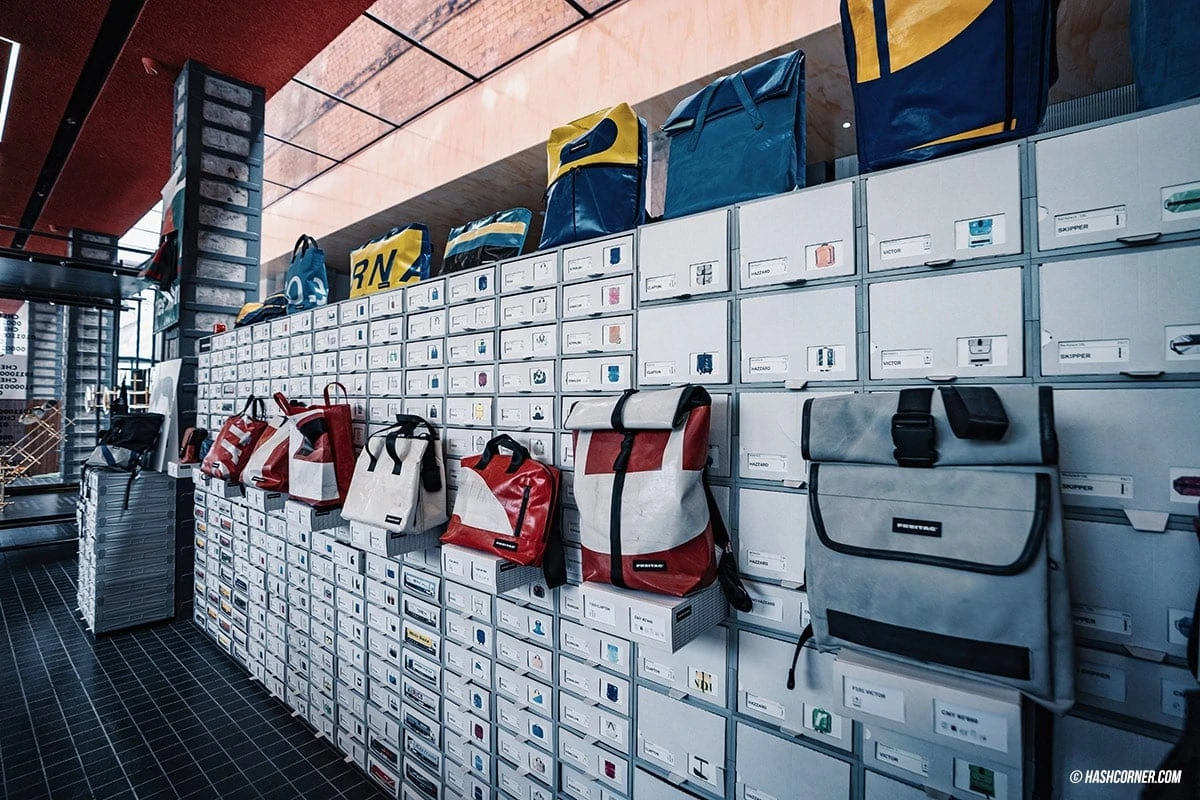
Apart from a gallery, there is Street Art, along with sculptures and artworks scattering throughout the area. Cute shops are a great deal, my friend spent a lot to buy this and that. To put it briefly, the place provides a good atmosphere, filled with true creativity. If you want styling items or seek new inspiration. This is a good choice. Give it time!
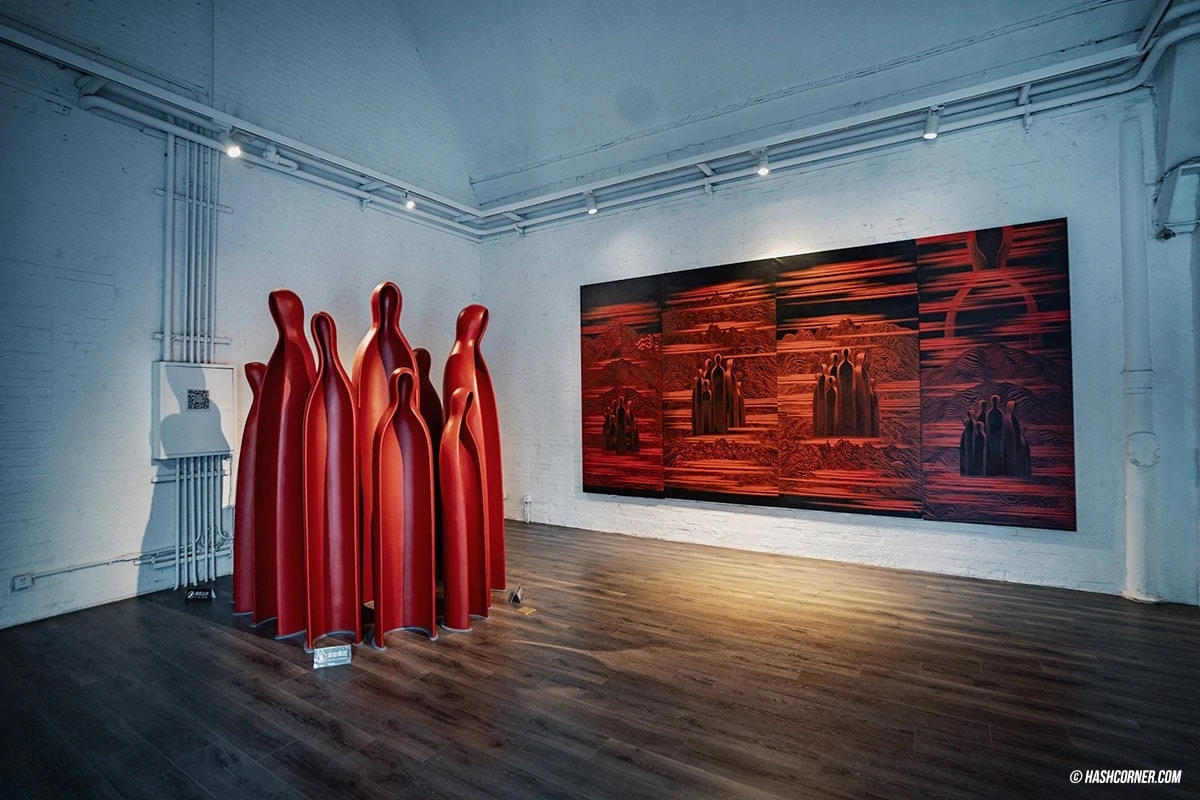
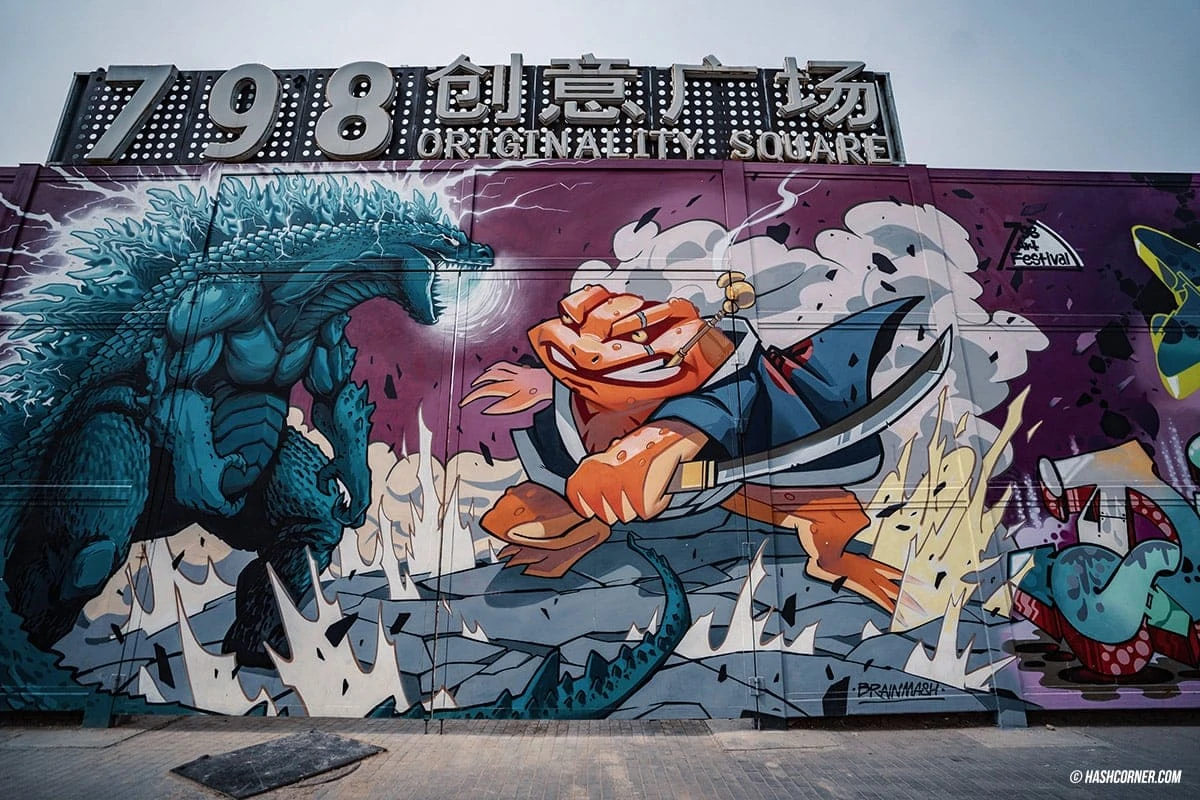
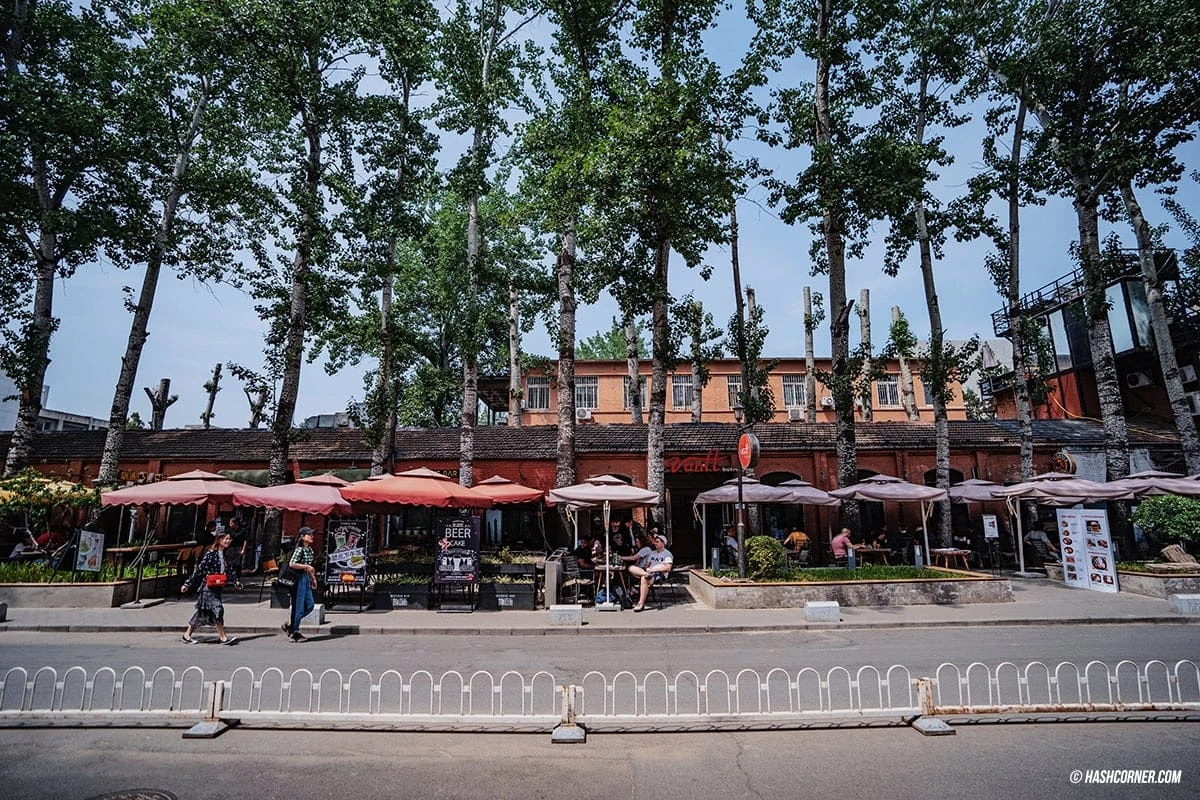
All of this is the Beijing travel guide review
It’s far too long. Then, goodbye for now 🇨🇳😂
Accommodation in Beijing
Howard Johnson Paragon Hotel Beijing
Hotels in Beijing are astoundingly high-priced. But my chosen hotel is not that expensive, it’s quite fair. The Howard Johnson Paragon Hotel is a long-run business in Beijing, located just the opposite of Beijing Railway Station, and also adjacent to the subway station. The location is not bad at all. In front of the hotel, there are KFC and Mr. Lee (A popular Chinese-style fast food), including a few supermarkets. These are important factors in choosing this hotel. Because you can trust that you definitely escape from hunger and appetite. LOL
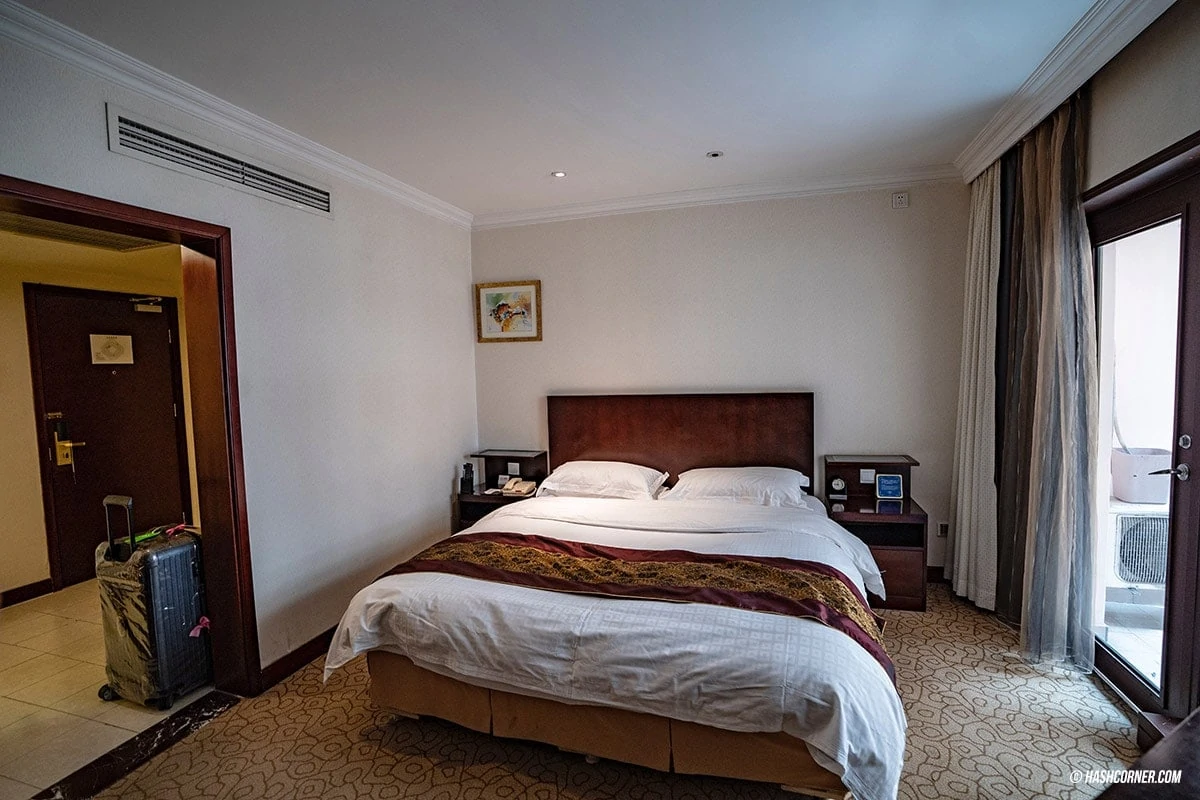
As for the hotel and the rooms of Howard Johnson Paragon Hotel Beijing, I must honestly admit that it’s a little dated. But you can tell, it’s an old-fashion design previously applied for a luxurious hotel. Not a spooky-scary old one. Hahaha. In my viewpoint, it is worth the price, the room size is great, comfortable bed. I appreciated it so much. If you’re lazy to find your own accommodation. This place is indeed a good option.
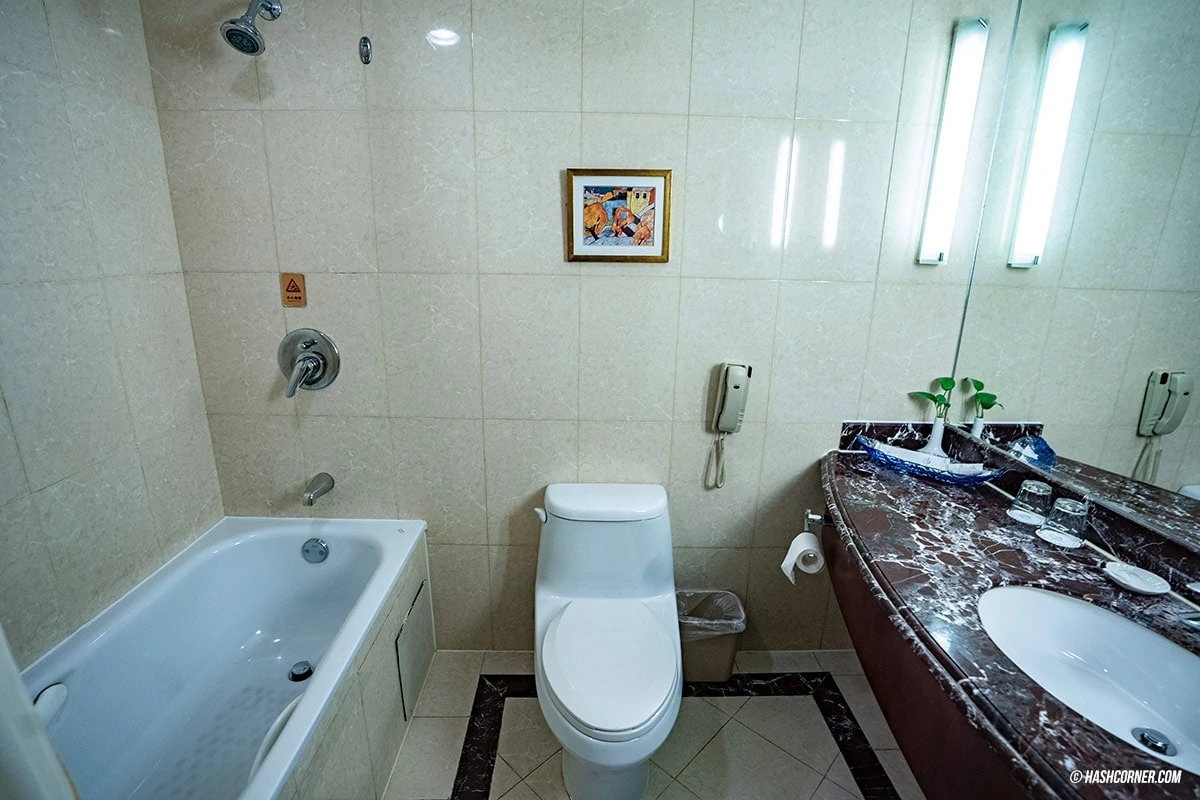
Room rate starting at 74 USD / night. View rates and book Howard Johnson Paragon Hotel Beijing, click on the link below to check and reserve through your favorite OTA right away.
See via Expedia.co.th // See via Booking.com // See via Agoda.com //
See via Hotels.com // See via Trip.com
ส่วนลดจองโรงแรมจาก Agoda, Expedia, Booking และบัตรสวนสนุก ตั๋วรถไฟ กิจกรรมท่องเที่ยวจาก Klook และ KKday ปี 2023
⚡️ สำหรับใครที่กำลังจะจองที่พักและหาส่วนลดจองโรงแรมอยู่ ลองดูตามลิงค์ด้านล่างได้เลย มีทั้ง Agoda, Expedia, Booking รวมถึง Hotels.com ด้วย ประหยัดไปได้อีกเกือบ 10-20% ใช้ได้กับโรงแรมทั่วโลก
หลายคนอาจจะไม่รู้ว่าเว็บไซต์จองโรงแรมพวกนี้ มีส่วนลดท็อปอัพจากบัตรเครดิตเพิ่มเกือบทุกธนาคาร ไม่ว่าจะเป็นบัตรเครดิต Citibank, KBANK, SCB, Krungsri, KTC, Bangkok Bank, UOB และ TMB หรือแม้แต่ส่วนลดจากค่ายมือถืออย่าง AIS, DTAC หรือ True ซึ่งส่วนลดพวกนี้จะเปลี่ยนตลอดทุกเดือน และเก๊าก็อัพเดทให้ตลอดเวลาเน้อ 🧡
> ส่วนลด Agoda.com (อโกด้า)
> ส่วนลด Booking.com (บุคกิ้ง)
> ส่วนลด Expedia (เอ็กซ์พีเดีย)
> ส่วนลด Klook (คลุก)
> ส่วนลด KKday ( เคเคเดย์)
รีวิวเที่ยวจีนยังไม่หมดเท่านี้ 🇨🇳❤️
เที่ยวจีนให้เยอะขึ้นอีกจากรีวิวจีนด้านล่างนี้ได้เลย
ปีนี้เป็นปีที่ได้มีโอกาสเที่ยวจีนเยอะมาก คือไปได้ประมาณ 3-4 รอบในหนึ่งปี และมีแพลนว่าจะได้ไปอีก นี่เลยเริ่มทยอยเขียนรีวิวจีนเรื่อยๆ เพื่อที่จะได้ตามรอยกันได้ง่ายขึ้นเนอะ ส่วนตัวบอกเลยว่าค่อนข้างประทับใจประเทศจีนมากพอควร ธรรมชาติเว่อร์วังอลังการ เมืองใหญ่ก็เจริญขั้นสุด การเที่ยวประเทศจีนทำให้เราเซอร์ไพรส์ได้ตลอดเวลา เอาเป็นว่า ก๊อตจะทยอยเขียนรีวิวจีนเรื่อยๆ เนอะ
เมืองในเขตปกครองพิเศษ (Municipality)
1. รีวิว เซี่ยงไฮ้ (Shanghai)
2. รีวิว เซี่ยงไฮ้ดิสนีย์แลนด์ (Shanghai Disneyland)
3. รีวิว เทียนจิน (Tianjin)
4. รีวิว ปักกิ่ง (Beijing)
มณฑลยูนนาน (Yunnan)
5. รีวิว ลี่เจียง (Lijiang)
6. รีวิว แชงกรีล่า (Shangri-La)
7. รีวิว ภูเขาหิมะเหม่ยลี่ (Meili Snow Mountain)
มณฑลเหอหนาน (Henan)
8. รีวิว เจิ้งโจว (Zhengzhou)
9. รีวิว ลั่วหยาง (Louyang)
10. รีวิว หยุนไถซาน (Yuntaishan) // กำลังเขียน
11. รีวิว ไคเฟิง (Kaifeng)
